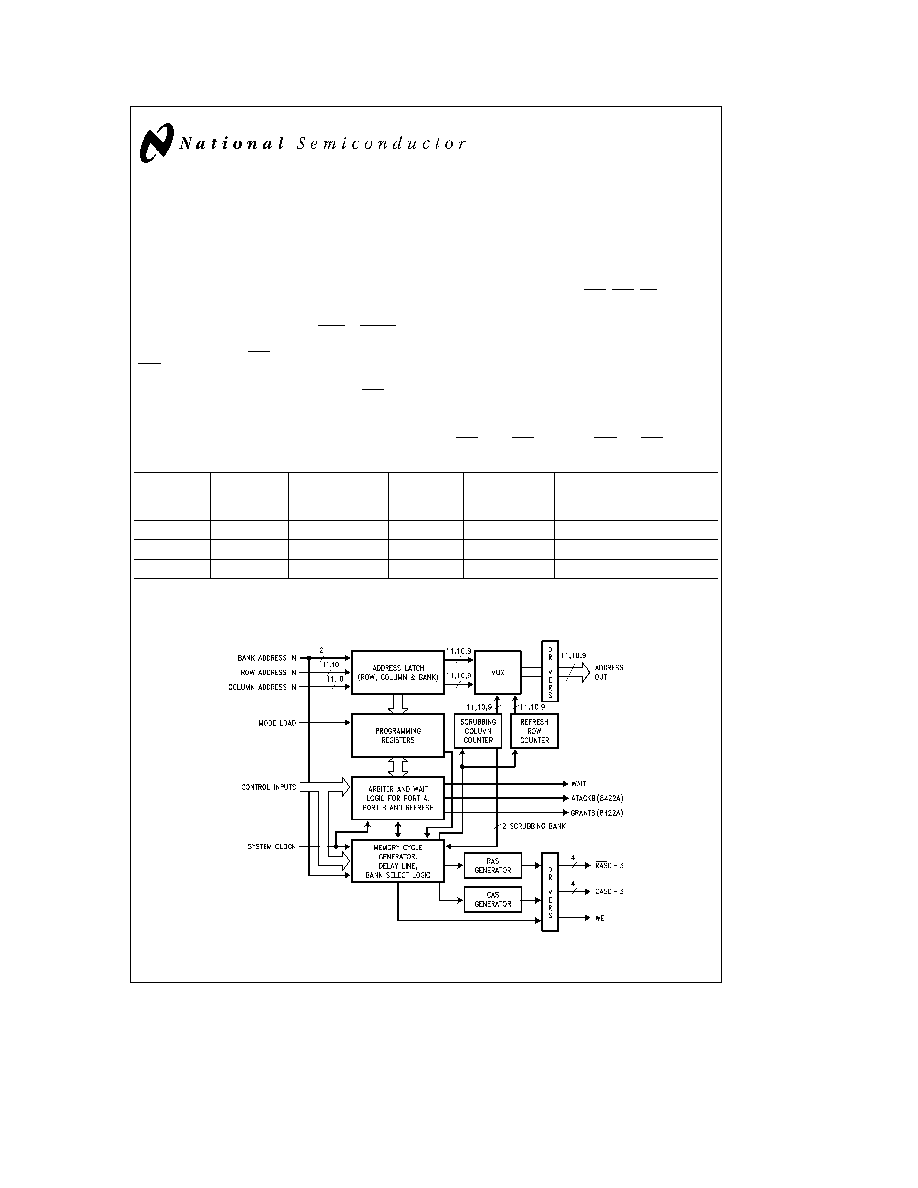
TL F 8588
DP8420A21A22A
microCMOS
Programmable
256k1M4M
Dynamic
RAM
ControllerDrivers
July 1992
DP8420A 21A 22A microCMOS Programmable
256k 1M 4M Dynamic RAM Controller Drivers
General Description
The DP8420A 21A 22A dynamic RAM controllers provide a
low cost single chip interface between dynamic RAM and
all 8- 16- and 32-bit systems The DP8420A 21A 22A gen-
erate all the required access control signal timing for
DRAMs An on-chip refresh request clock is used to auto-
matically refresh the DRAM array Refreshes and accesses
are arbitrated on chip If necessary a WAIT or DTACK out-
put inserts wait states into system access cycles including
burst mode accesses RAS low time during refreshes and
RAS precharge time after refreshes and back to back ac-
cesses are guaranteed through the insertion of wait states
Separate on-chip precharge counters for each RAS output
can be used for memory interleaving to avoid delayed back
to back accesses because of precharge An additional fea-
ture of the DP8422A is two access ports to simplify dual
accessing Arbitration among these ports and refresh is
done on chip
Features
Y
On chip high precision delay line to guarantee critical
DRAM access timing parameters
Y
microCMOS process for low power
Y
High capacitance drivers for RAS CAS WE and DRAM
address on chip
Y
On chip support for nibble page and static column
DRAMs
Y
Byte enable signals on chip allow byte writing in a word
size up to 32 bits with no external logic
Y
Selection of controller speeds 20 MHz and 25 MHz
Y
On board Port A Port B (DP8422A only) refresh arbitra-
tion logic
Y
Direct interface to all major microprocessors (applica-
tion notes available)
Y
4 RAS and 4 CAS drivers (the RAS and CAS configura-
tion is programmable)
of Pins
of Address
Largest
Direct Drive
Access
Control
(PLCC)
Outputs
DRAM
Memory
Ports
Possible
Capacity
Available
DP8420A
68
9
256 kbit
4 Mbytes
Single Access Port
DP8421A
68
10
1 Mbit
16 Mbytes
Single Access Port
DP8422A
84
11
4 Mbit
64 Mbytes
Dual Access Ports (A and B)
Block Diagram
DP8420A 21A 22A DRAM Controller
TL F 8588 � 5
FIGURE 1
TRI-STATE
is a registered trademark of National Semiconductor Corporation
Staggered Refresh
TM
is a trademark of National Semiconductor Corporation
C1995 National Semiconductor Corporation
RRD-B30M105 Printed in U S A

Table of Contents
1 0 INTRODUCTION
2 0 SIGNAL DESCRIPTIONS
2 1 Address R W and Programming Signals
2 2 DRAM Control Signals
2 3 Refresh Signals
2 4 Port A Access Signals
2 5 Port B Access Signals (DP8422A)
2 6 Common Dual Port Signals (DP8422A)
2 7 Power Signals and Capacitor Input
2 8 Clock Inputs
3 0 PROGRAMMING AND RESETTING
3 1 External Reset
3 2 Programming Methods
3 2 1 Mode Load Only Programming
3 2 2 Chip Selected Access Programming
3 3 Internal Programming Modes
4 0 PORT A ACCESS MODES
4 1 Access Mode 0
4 2 Access Mode 1
4 3 Extending CAS with Either Access Mode
4 4 Read-Modify-Write Cycles with Either Access Mode
4 5 Additional Access Support Features
4 5 1 Address Latches and Column Increment
4 5 2 Address Pipelining
4 5 3 Delay CAS During Write Accesses
5 0 REFRESH OPTIONS
5 1 Refresh Control Modes
5 1 1 Automatic Internal Refresh
5 1 2 Externally Controlled Burst Refresh
5 1 3 Refresh Request Acknowledge
5 2 Refresh Cycle Types
5 2 1 Conventional Refresh
5 2 2 Staggered Refresh
TM
5 2 3 Error Scrubbing Refresh
5 3 Extending Refresh
5 4 Clearing the Refresh Address Counter
5 5 Clearing the Refresh Request Clock
6 0 PORT A WAIT STATE SUPPORT
6 1 WAIT Type Output
6 2 DTACK Type Output
6 3 Dynamically Increasing the Number of Wait States
6 4 Guaranteeing RAS Low Time and RAS Precharge
Time
7 0 RAS AND CAS CONFIGURATION MODES
7 1 Byte Writing
7 2 Memory Interleaving
7 3 Address Pipelining
7 4 Error Scrubbing
7 5 Page Burst Mode
8 0 TEST MODE
9 0 DRAM CRITICAL TIMING PARAMETERS
9 1 Programmable Values of t
RAH
and t
ASC
9 2 Calculation of t
RAH
and t
ASC
10 0 DUAL ACCESSING (DP8422A)
10 1 Port B Access Mode
10 2 Port B Wait State Support
10 3 Common Port A and Port B Dual Port Functions
10 3 1 GRANTB Output
10 3 2 LOCK Input
11 0 ABSOLUTE MAXIMUM RATINGS
12 0 DC ELECTRICAL CHARACTERISTICS
13 0 AC TIMING PARAMETERS
14 0 FUNCTIONAL DIFFERENCES BETWEEN THE
DP8420A 21A 22A AND THE DP8420 21 22
15 0 DP8420A 21A 22A USER HINTS
2
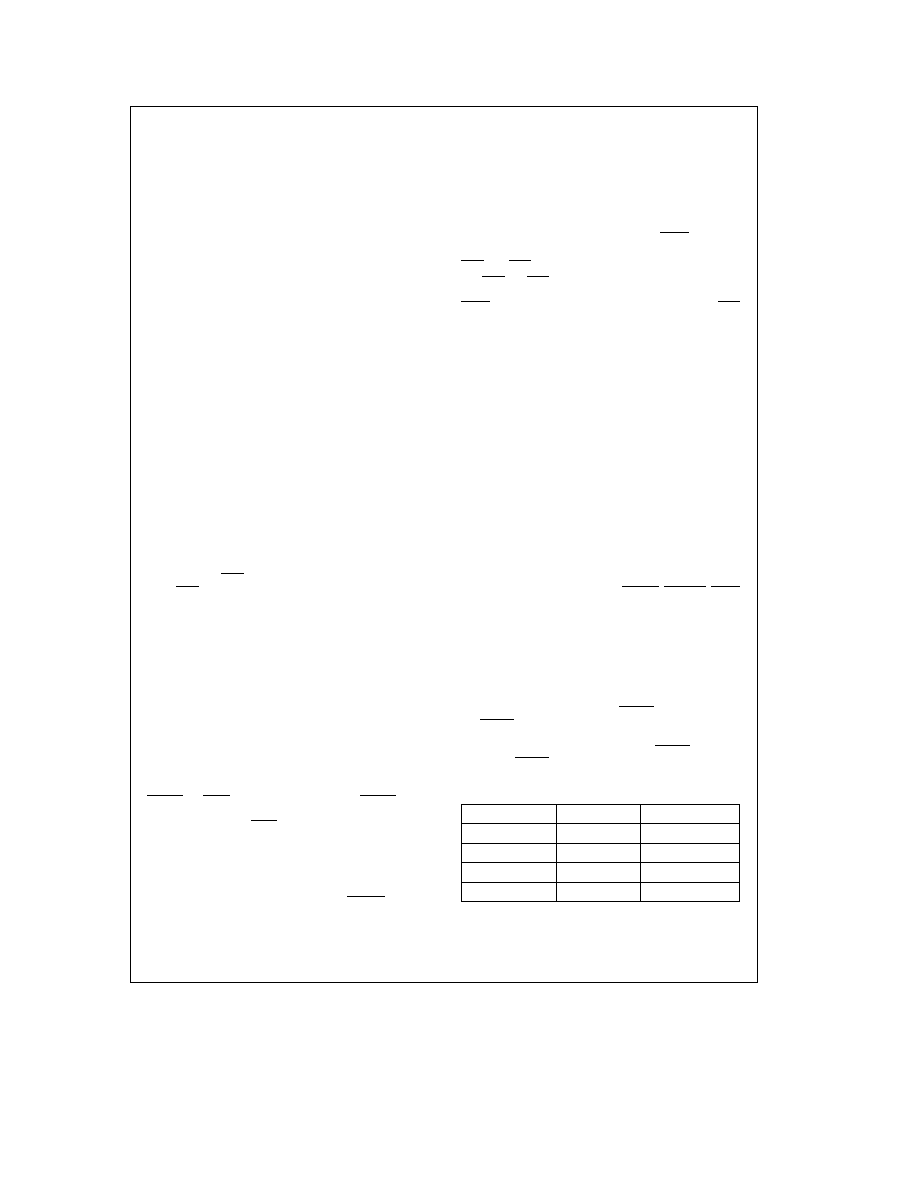
1 0 Introduction
The DP8420A 21A 22A are CMOS Dynamic RAM control-
lers that incorporate many advanced features which include
address latches refresh counter refresh clock row column
and refresh address multiplexer delay line refresh access
arbitration logic and high capacitive drivers The program-
mable system interface allows any manufacturer's micro-
processor
or
bus
to
directly
interface
via
the
DP8420A 21A 22A to DRAM arrays up to 64 Mbytes in
size
After power up the user must first reset and program the
DP8420A 21A 22A before accessing the DRAM The chip
is programmed through the address bus
Reset
Due to the differences in power supplies the internal reset
circuit may not always reset correctly therefore an External
(hardware) Reset must be performed before programming
the chip
Programming
After resetting the chip the user can program the controller
by either one of two methods Mode Load Only Program-
ming or Chip Select Access Programming
Initialization Period
Once the DP8420A 21A 22A has been programmed for the
first time a 60 ms initialization period is entered During this
time the DRC performs refreshes to the DRAM array so
further warm up cycles are unnecessary The initialization
period is entered only after the first programming after a
reset
Accessing Modes
After
resetting
and
programming
the
chip
the
DP8420A 21A 22A is ready to access the DRAM There
are two modes of accessing with these controllers Mode 0
which indicates RAS synchronously and Mode 1 which indi-
cates RAS asynchronously
Refresh Modes
The DP8420A 21A 22A have expanded refresh capabilities
compared to previous DRAM controllers There are three
modes of refreshing available Internal Automatic Refresh-
ing Externally Controlled Burst Refreshing and Refresh Re-
quest Acknowledge Refreshing Any of these modes can
be used together or separately to achieve the desired re-
sults
Refresh Types
These controllers have three types of refreshing available
Conventional Staggered and Error Scrubbing Any refresh
control mode can be used with any type of refresh
Wait Support
The DP8420A 21A 22A have wait support available as
DTACK or WAIT Both are programmable DTACK Data
Transfer ACKnowledge is useful for processors whose wait
signal is active high WAIT is useful for those processors
whose wait signal is active low The user can choose either
at programming These signals are used by the on chip arbi-
ter to insert wait states to guarantee the arbitration between
accesses refreshes and precharge Both signals are inde-
pendent of the access mode chosen and both signals can
be dynamically delayed further through the WAITIN signal to
the DP8420A 21A 22A
Sequential Accesses (Static Column Page Mode)
The DP8420A 21A 22A have address latches used to
latch the bank row and column address inputs Once the
address is latched a COLumn INCrement (COLINC) feature
can be used to increment the column address The address
latches can also be programmed to be fall through COLINC
can be used for Sequential Accesses of Static Column
DRAMs Also COLINC in conjunction with ECAS inputs can
be used for Sequential Accesses to Page Mode DRAMs
RAS and CAS Configuration (Byte Writing)
The RAS and CAS drivers can be configured to drive a one
two or four bank memory array up to 32 bits in width The
ECAS signals can then be used to select one of four CAS
drivers for Byte Writing with no extra logic
Memory Interleaving
When configuring the DP820A 21A 22A for more than one
bank Memory Interleaving can be used By tying the low
order address bits to the bank select lines B0 and B1 se-
quential back to back accesses will not be delayed since
these controllers have separate precharge counters per
bank
Address Pipelining
The DP8420A 21A 22A are capable of performing Address
Pipelining In address pipelining the DRC will guarantee the
column address hold time and switch the internal multiple-
xor to place the row address on the address bus At this
time another memory access to another bank can be initiat-
ed
Dual Accessing
Finally the DP8422A has all the features previously men-
tioned and unlike the DP8420A 21A the DP8422A has a
second port to allow a second CPU to access the same
memory array The DP8422A has four signals to support
Dual Accessing these signals are AREQB ATACKB LOCK
and GRANTB All arbitration for the two ports and refresh is
done on chip by the controller through the insertion of wait
states Since the DP8422A has only one input address bus
the address lines must be multiplexed externally The signal
GRANTB can be used for this purpose
Terminology
The following explains the terminology used in this data
sheet The terms negated and asserted are used Asserted
refers to a ``true'' signal Thus ``ECAS0 asserted'' means
the ECAS0 input is at a logic 0 The term ``COLINC assert-
ed'' means the COLINC input is at a logic 1 The term negat-
ed refers to a ``false'' signal Thus ``ECAS0 negated''
means the ECAS0 input is at a logic 1 The term ``COLINC
negated'' means the input COLINC is at a logic 0 The table
shown below clarifies this terminology
Signal
Action
Logic Level
Active High
Asserted
High
Active High
Negated
Low
Active Low
Asserted
Low
Active Low
Negated
High
3
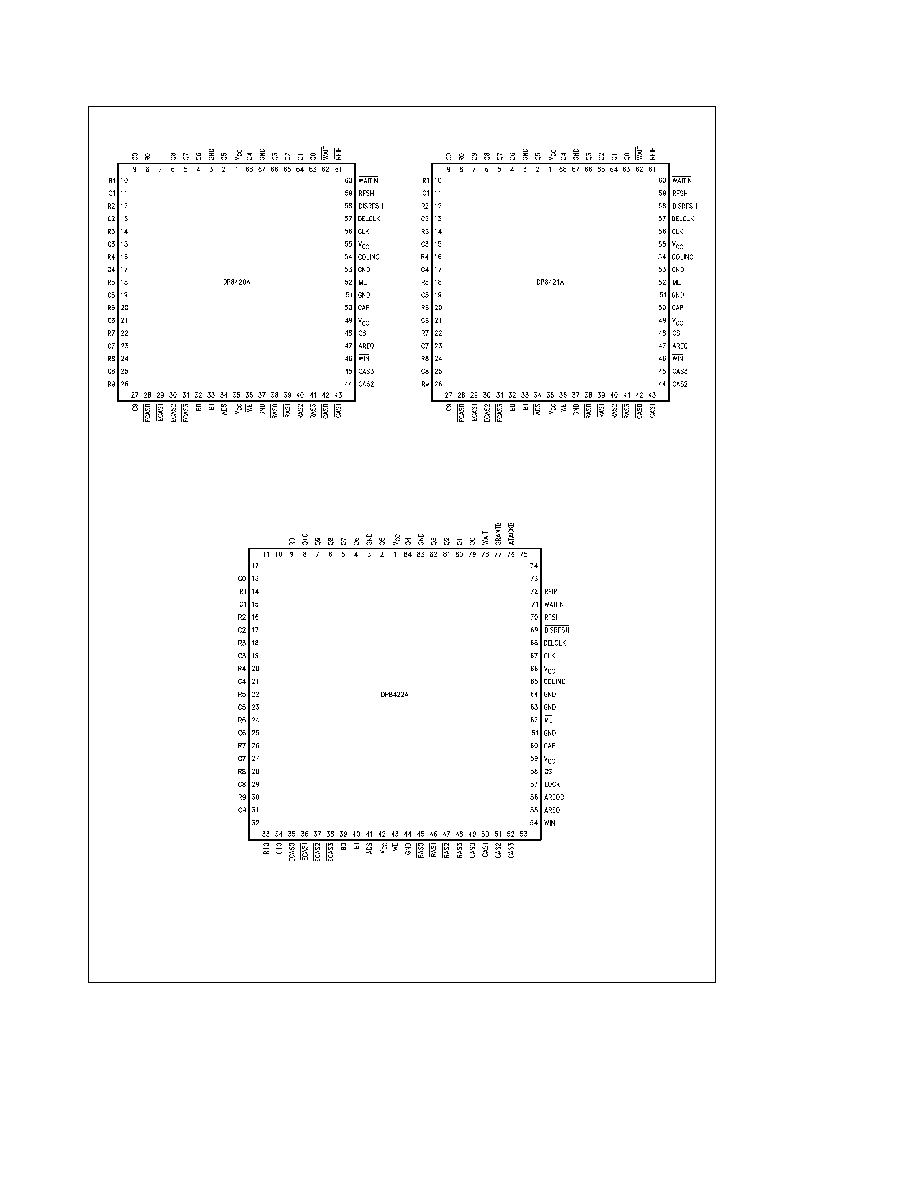
Connection Diagrams
TL F 8588 � 4
Top View
FIGURE 2
Order Number DP8420AV-20 or DP8420AV-25
See NS Package Number V68A
TL F 8588 � 3
Top View
FIGURE 3
Order Number DP8421AV-20 or DP8421AV-25
See NS Package Number V68A
TL F 8588 � 2
Top View
FIGURE 4
Order Number DP8422AV-20 or DP8422AV-25
See NS Package Number V84A
4
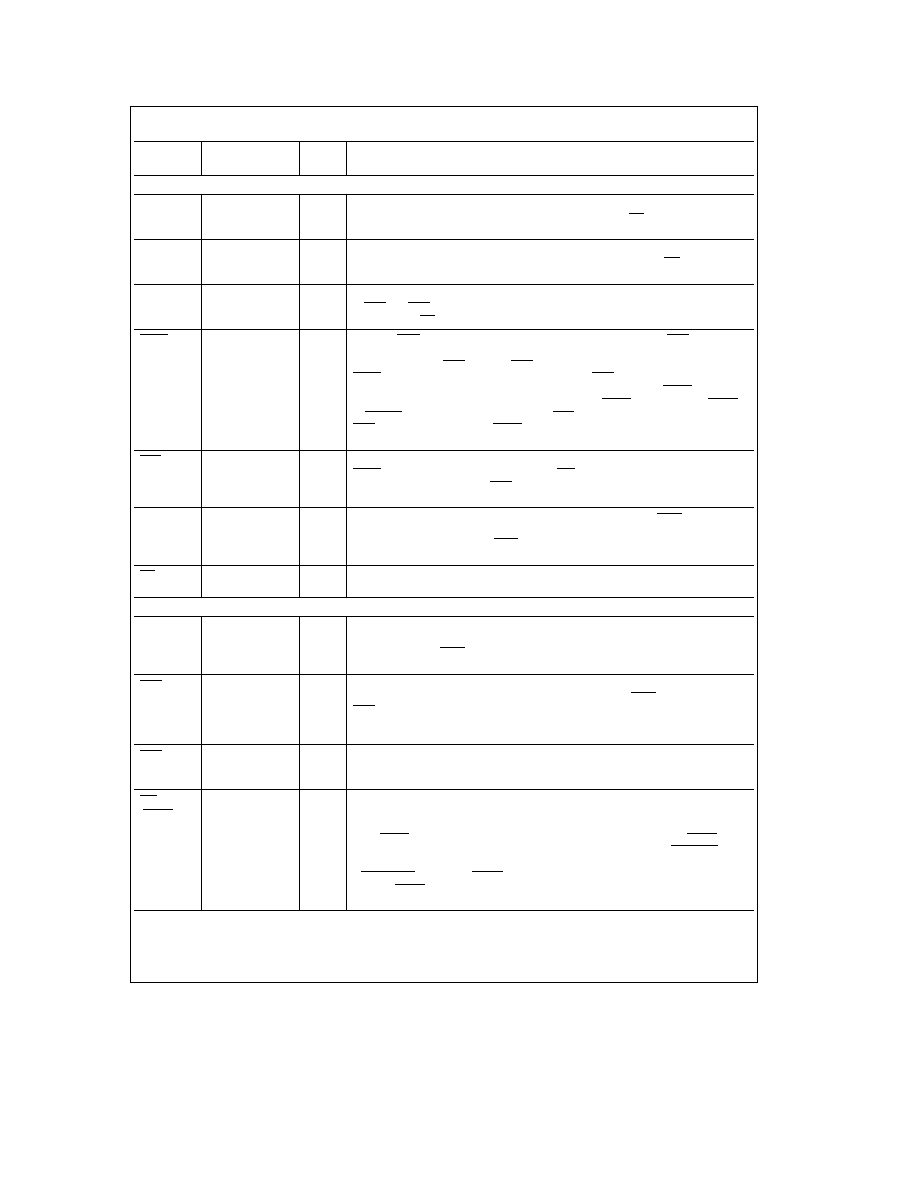
2 0 Signal Descriptions
Pin
Device (If not
Input
Description
Name
Applicable to All)
Output
2 1 ADDRESS R W AND PROGRAMMING SIGNALS
R0 � 10
DP8422A
I
ROW ADDRESS
These inputs are used to specify the row address during an access
to the DRAM They are also used to program the chip when ML is asserted (except
R0 � 9
DP8420A 21A
I
R10)
C0 � 10
DP8422A
I
COLUMN ADDRESS
These inputs are used to specify the column address during an
access to the DRAM They are also used to program the chip when ML is asserted
C0 � 9
DP8420A 21A
I
(except C10)
B0 B1
I
BANK SELECT
Depending on programming these inputs are used to select a group
of RAS and CAS outputs to assert during an access They are also used to program
the chip when ML is asserted
ECAS0 � 3
I
ENABLE CAS
These inputs are used to enable a single or group of CAS outputs
when asserted In combination with the B0 B1 and the programming bits these
inputs select which CAS output or CAS outputs will assert during an access The
ECAS signals can also be used to toggle a group of CAS outputs for page nibble
mode accesses They also can be used for byte write operations If ECAS0 is
negated during programming continuing to assert the ECAS0 while negating AREQ
or AREQB during an access will cause the CAS outputs to be extended while the
RAS outputs are negated (the ECASn inputs have no effect during scrubbing
refreshes)
WIN
I
WRITE ENABLE IN
This input is used to signify a write operation to the DRAM If
ECAS0 is asserted during programming the WE output will follow this input This
input asserted will also cause CAS to delay to the next positive clock edge if address
bit C9 is asserted during programming
COLINC
I
COLUMN INCREMENT
When the address latches are used and RFIP is negated
this input functions as COLINC Asserting this signal causes the column address to
(EXTNDRF)
I
be incremented by one When RFIP is asserted this signal is used to extend the
refresh cycle by any number of periods of CLK until it is negated
ML
I
MODE LOAD
This input signal when low enables the internal programming register
that stores the programming information
2 2 DRAM CONTROL SIGNALS
Q0 � 10
DP8422A
O
DRAM ADDRESS
These outputs are the multiplexed output of the R0 � 9 10 and
C0 � 9 10 and form the DRAM address bus These outputs contain the refresh
Q0 � 9
DP8421A
O
address whenever RFIP is asserted They contain high capacitive drivers with 20X
Q0 � 8
DP8421A
O
series damping resistors
RAS0 � 3
O
ROW ADDRESS STROBES
These outputs are asserted to latch the row address
contained on the outputs Q0 � 8 9 10 into the DRAM When RFIP is asserted the
RAS outputs are used to latch the refresh row address contained on the Q0 � 8 9 10
outputs in the DRAM These outputs contain high capacitive drivers with 20X series
damping resistors
CAS0 � 3
O
COLUMN ADDRESS STROBES
These outputs are asserted to latch the column
address contained on the outputs Q0 � 8 9 10 into the DRAM These outputs have
high capacitive drivers with 20X series damping resistors
WE
O
WRITE ENABLE
or REFRESH REQUEST This output asserted specifies a write
operation to the DRAM When negated this output specifies a read operation to the
(RFRQ)
O
DRAM When the DP8420A 21A 22A is programmed in address pipelining mode or
when ECAS0 is negated during programming this output will function as RFRQ
When asserted this pin specifies that 13 ms or 15 ms have passed If DISRFSH is
negated the DP8420A 21A 22A will perform an internal refresh as soon as possible
If DISRFRSH is asserted RFRQ can be used to externally request a refresh through
the input RFSH This output has a high capacitive driver and a 20X series damping
resistor
5

2 0 Signal Descriptions
(Continued)
Pin
Device (If not
Input
Description
Name
Applicable to All)
Output
2 3 REFRESH SIGNALS
RFIP
O
REFRESH IN PROGRESS
This output is asserted prior to a refresh cycle and is
negated when all the RAS outputs are negated for that refresh
RFSH
I
REFRESH
This input asserted with DISRFRSH already asserted will request a
refresh If this input is continually asserted the DP8420A 21A 22A will perform
refresh cycles in a burst refresh fashion until the input is negated If RFSH is asserted
with DISRFSH negated the internal refresh address counter is cleared (useful for
burst refreshes)
DISRFSH
I
DISABLE REFRESH
This input is used to disable internal refreshes and must be
asserted when using RFSH for externally requested refreshes
2 4 PORT A ACCESS SIGNALS
ADS
I
ADDRESS STROBE
or ADDRESS LATCH ENABLE Depending on programming
this input can function as ADS or ALE In mode 0 the input functions as ALE and
(ALE)
I
when asserted along with CS causes an internal latch to be set Once this latch is set
an access will start from the positive clock edge of CLK as soon as possible In Mode
1 the input functions as ADS and when asserted along with CS causes the access
RAS to assert if no other event is taking place If an event is taking place RAS will be
asserted from the positive edge of CLK as soon as possible In both cases the low
going edge of this signal latches the bank row and column address if programmed to
do so
CS
I
CHIP SELECT
This input signal must be asserted to enable a Port A access
AREQ
I
ACCESS REQUEST
This input signal in Mode 0 must be asserted some time after
the first positive clock edge after ALE has been asserted When this signal is
negated RAS is negated for the access In Mode 1 this signal must be asserted
before ADS can be negated When this signal is negated RAS is negated for the
access
WAIT
O
WAIT
or DTACK This output can be programmed to insert wait states into a CPU
access cycle With R7 negated during programming the output will function as a
(DTACK)
O
WAIT type output In this case the output will be active low to signal a wait condition
With R7 asserted during programming the output will function as DTACK In this
case the output will be negated to signify a wait condition and will be asserted to
signify the access has taken place Each of these signals can be delayed by a
number of positive clock edges or negative clock levels of CLK to increase the
microprocessor's access cycle through the insertion of wait states
WAITIN
I
WAIT INCREASE
This input can be used to dynamically increase the number of
positive clock edges of CLK until DTACK will be asserted or WAIT will be negated
during a DRAM access
6
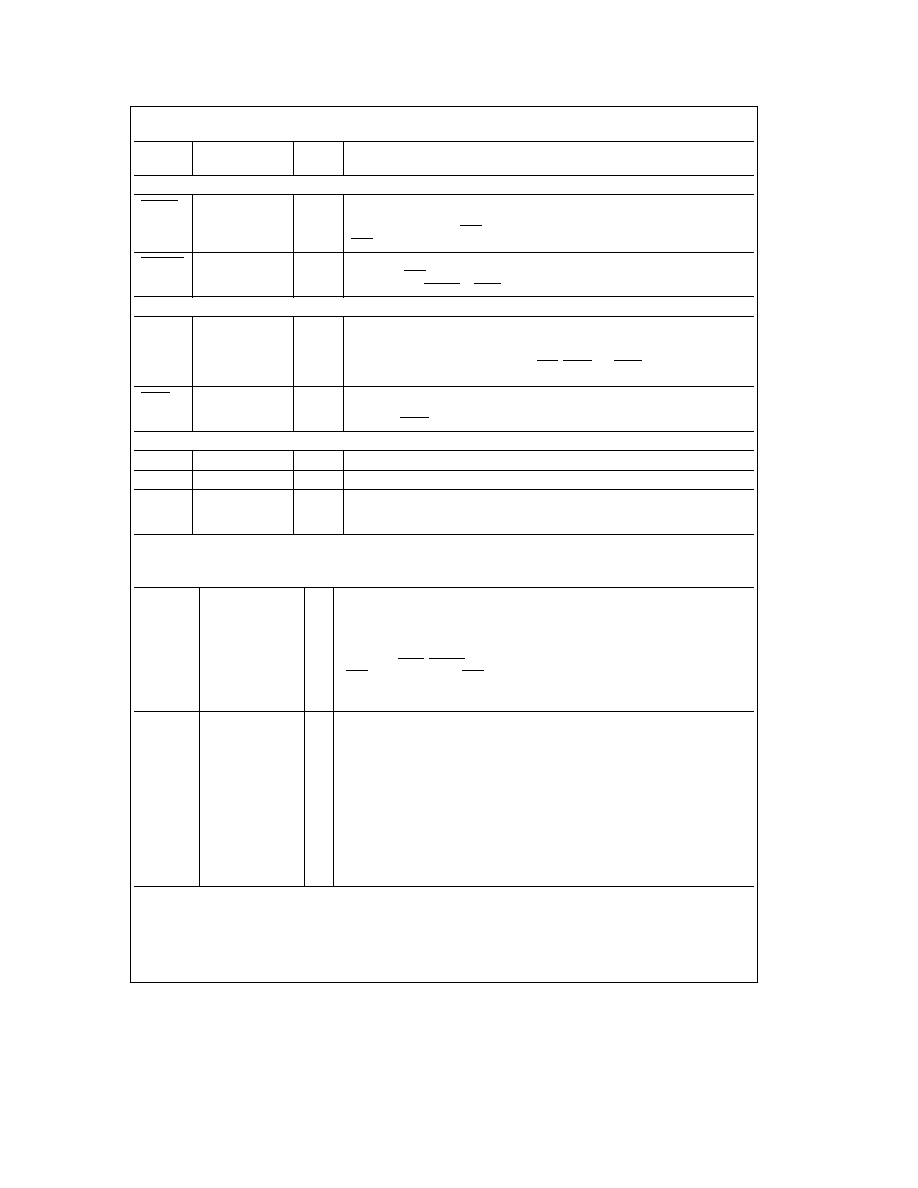
2 0 Signal Descriptions
(Continued)
Pin
Device (If not
Input
Description
Name
Applicable to All)
Output
2 5 PORT B ACCESS SIGNALS
AREQB
DP8422A
I
PORT B ACCESS REQUEST
This input asserted will latch the row column and bank
address if programmed and requests an access to take place for Port B If the
only
access can take place RAS will assert immediately If the access has to be delayed
RAS will assert as soon as possible from a positive edge of CLK
ATACKB
DP8422A
O
ADVANCED TRANSFER ACKNOWLEDGE PORT B
This output is asserted when
the access RAS is asserted for a Port B access This signal can be used to generate
only
the appropriate DTACK or WAIT type signal for Port B's CPU or bus
2 6 COMMON DUAL PORT SIGNALS
GRANTB
DP8422A
O
GRANT B
This output indicates which port is currently granted access to the DRAM
array When GRANTB is asserted Port B has access to the array When GRANTB is
only
negated Port A has access to the DRAM array This signal is used to multiplex the
signals R0 � 8 9 10 C0 � 8 9 10 B0 � 1 WIN LOCK and ECAS0 � 3 to the DP8422A
when using dual accessing
LOCK
DP8422A
I
LOCK
This input can be used by the currently granted port to ``lock out'' the other
port from the DRAM array by inserting wait states into the locked out port's access
only
cycle until LOCK is negated
2 7 POWER SIGNALS AND CAPACITOR INPUT
V
CC
I
POWER
Supply Voltage
GND
I
GROUND
Supply Voltage Reference
CAP
I
CAPACITOR
This input is used by the internal PLL for stabilization The value of the
ceramic capacitor should be 0 1 mF and should be connected between this input and
ground
2 8 CLOCK INPUTS
There are two clock inputs to the DP8420A 21A 22A CLK and DELCLK These two clocks may both be tied to the same clock
input or they may be two separate clocks running at different frequencies asynchronous to each other
CLK
I
SYSTEM CLOCK
This input may be in the range of 0 Hz up to 25 MHz This input is
generally a constant frequency but it may be controlled externally to change
frequencies or perhaps be stopped for some arbitrary period of time
This input provides the clock to the internal state machine that arbitrates between
accesses and refreshes This clock's positive edges and negative levels are used to
extend the WAIT (DTACK) signals Ths clock is also used as the reference for the
RAS precharge time and RAS low time during refresh
All Port A and Port B accesses are assumed to be synchronous to the system clock
CLK
DELCLK
I
DELAY LINE CLOCK
The clock input DELCLK may be in the range of 6 MHz to
20 MHz and should be a multiple of 2 (i e 6 8 10 12 14 16 18 20 MHz) to have
the DP8420A 21A 22A switching characteristics hold If DELCLK is not one of the
above frequencies the accuracy of the internal delay line will suffer This is because
the phase locked loop that generates the delay line assumes an input clock
frequency of a multiple of 2 MHz
For example if the DELCLK input is at 7 MHz and we choose a divide by 3 (program
bits C0 � 2) this will produce 2 333 MHz which is 16 667% off of 2 MHz Therefore the
DP8420A 21A 22A delay line would produce delays that are shorter (faster delays)
than what is intended If divide by 4 was chosen the delay line would be longer
(slower delays) than intended (1 75 MHz instead of 2 MHz) (See Section 10 for more
information )
This clock is also divided to create the internal refresh clock
7

3 0 Programming and Resetting
Due to the variety in power supplies power-up times the
internal power up reset circuit may not work in every design
therefore an EXTERNAL RESET must be performed before
the DRAM controller can be programmed and used
After
going
through
the
reset
procedure
the
DP8420A 21A 22A can be programmed by either of two
methods Mode Load Only Programming or Chip Select Ac-
cess Programming After programming the DRC for the first
time after reset the chip enters a 60 ms initialization period
during this period the controller performs refreshes every
13 ms or 15 ms this makes further DRAM warm up cycles
unnecessary
After this stage the chip can be repro-
grammed as many times as the user wishes and the 60 ms
period will not be entered into unless the chip is reset and
programmed again
During the 60 ms initialization period RFIP is asserted low
and RAS toggles every 13 ms or 15 ms depending on the
programming bit for refresh (C3) CAS will be inactive (logic
1) and the ``Q'' outputs will count from 0 to 2047 refreshing
the entire DRAM array The actual initialization time period
is given by the following formula T
e
4096 (Clock Divisor
Select) (Refresh Clock Fine Tune) (DELCLK Frq )
3 1 EXTERNAL RESET
At power up if the internal power up reset worked all inter-
nal latches and flip-flops are cleared and the part is ready to
be programmed The power up state can also be achieved
by performing an External Reset which is required to insure
proper operation External Reset is achieved by asserting
ML and DISRFSH for at least 16 positive clock edges In
order to perform simply a Reset the ML signal must be
negated before DISRFSH is negated as shown in
Figure 5a
This procedure will only reset the controller which now is
ready for programming
While performing an External Reset if the user negates
DISRFSH at least one clock period before negating ML as
shown in
Figure 5b
ML negated will program the
DP8420A 21A 22A with the values in R0 � 9 C0 � 9 B0 � 1
and ECAS0 The 60 ms initialization period will be entered
since it is the first programming after reset This is a good
way of resetting and programming the part at the same time
Make sure the right programming bits are on the address
lines before ML is negated
The DRC may be Reset and programmed any time on the
fly but the user must make sure that No Access or Refresh
is in progress
TL F 8588 � E1
FIGURE 5a Chip Reset but Not Programmed
TL F 8588 � E2
FIGURE 5b Chip Reset and Programmed
8
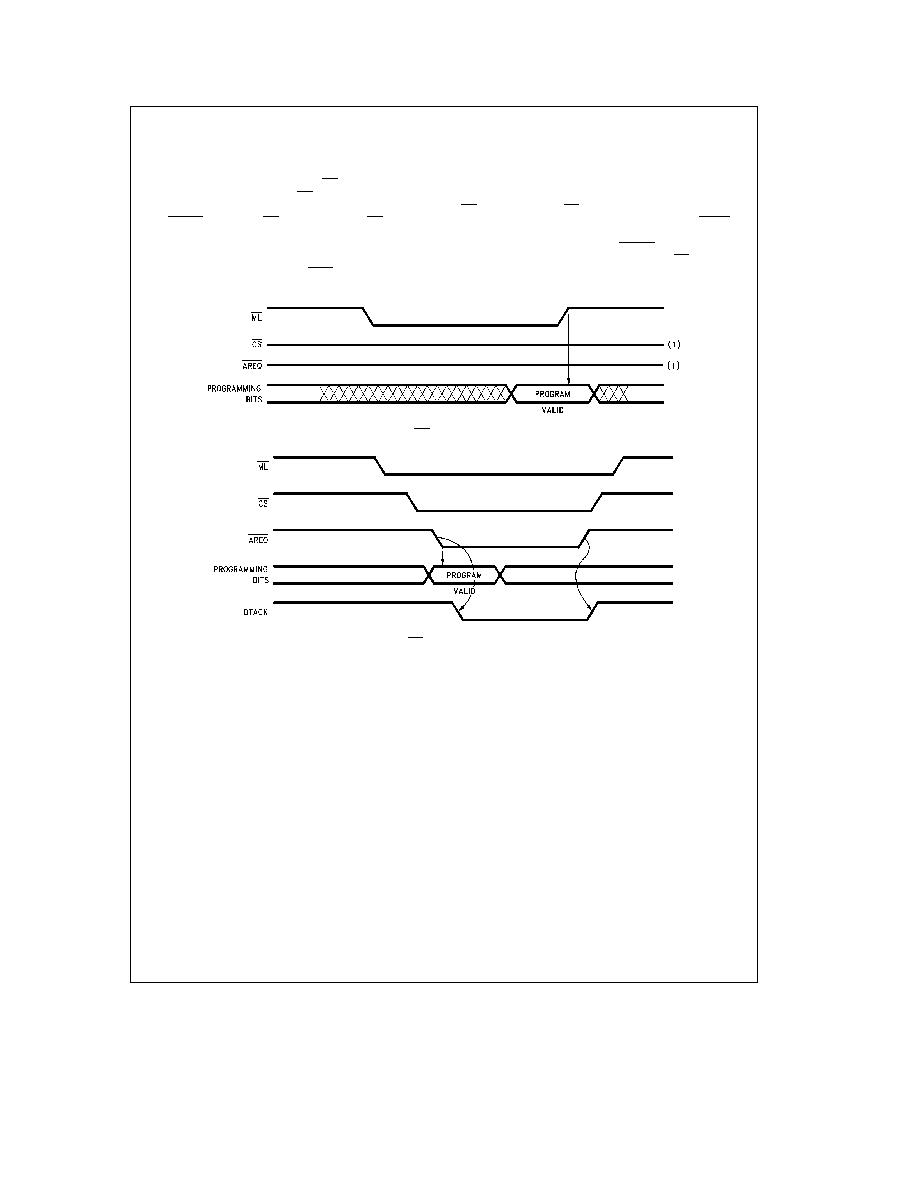
3 0 Programming and Resetting
(Continued)
3 2 PROGRAMMING METHODS
3 2 1 Mode Load Only Programming
To use this method the user asserts ML enabling the inter-
nal programming register After ML is asserted a valid pro-
gramming selection is placed on the address bus B0 B1
and ECAS0 inputs then ML is negated When ML is negat-
ed the programming bits are latched into the internal pro-
gramming register and the DP8420A 21A 22A is pro-
grammed see
Figure 6 When programming the chip the
controller must not be refreshing RFIP must be high (1) to
have a successful programming
3 2 2 Chip Selected Access Programming
The chip can also be programmed by performing a chip
selected access To program the chip using this method
ML is asserted then CS is asserted and a valid program-
ming selection is placed on the address bus When AREQ is
asserted the programming bits affecting the wait logic be-
come effective immediately then DTACK is asserted allow-
ing the access to terminate After the access ML is negated
and the rest of the programming bits take effect
TL F 8588 � G3
FIGURE 6 ML Only Programming
TL F 8588 � G4
FIGURE 7 CS Access Programming
9

3 0 Programming and Resetting
(Continued)
3 3 PROGRAMMING BIT DEFINITIONS
Symbol
Description
ECAS0
Extend CAS Refresh Request Select
0
The CASn outputs will be negated with the RASn outputs when AREQ (or AREQB DP8422A only) is negated
The WE output pin will function as write enable
1
The CASn outputs will be negated during an acccess (Port A (or Port B DP8422A only)) when their
corresponding ECASn inputs are negated This feature allows the CAS outputs to be extended beyond the RAS
outputs negating Scrubbing refreshes are NOT affected During scrubbing refreshes the CAS outputs will negate
along with the RAS outputs regardless of the state of the ECAS inputs
The WE output will function as ReFresh ReQuest (RFRQ) when this mode is programmed
B1
Access Mode Select
0
ACCESS MODE 0
ALE pulsing high sets an internal latch On the next positive edge of CLK the access (RAS)
will start AREQ will terminate the access
1
ACCESS MODE 1
ADS asserted starts the access (RAS) immediately AREQ will terminate the access
B0
Address Latch Mode
0
ADS or ALE asserted for Port A or AREQB asserted for Port B with the appropriate GRANT latch the input row
column and bank address
1
The row column and bank latches are fall through
C9
Delay CAS during WRITE Accesses
0
CAS is treated the same for both READ and WRITE accesses
1
During WRITE accesses CAS will be asserted by the event that occurs last CAS asserted by the internal delay
line or CAS asserted on the positive edge of CLK after RAS is asserted
C8
Row Address Hold Time
0
Row Address Hold Time
e
25 ns minimum
1
Row Address Hold Time
e
15 ns minimum
C7
Column Address Setup Time
0
Column Address Setup Time
e
10 ns miniumum
1
Column Address Setup Time
e
0 ns minimum
C6 C5 C4
RAS and CAS Configuration Modes Error Scrubbing during Refresh
0 0 0
RAS0 � 3 and CAS0 � 3 are all selected during an access ECASn must be asserted for CASn to be asserted
B0 and B1 are not used during an access Error scrubbing during refresh
0 0 1
RAS and CAS pairs are selected during an access by B1 ECASn must be asserted for CASn to be asserted
B1
e
0 during an access selects RAS0 � 1 and CAS0 � 1
B1
e
1 during an access selects RAS2 � 3 and CAS2 � 3
B0 is not used during an Access
Error scrubbing during refresh
0 1 0
RAS and CAS singles are selected during an access by B0 � 1 ECASn must be asserted for CASn to be asserted
B1
e
0 B0
e
0 during an access selects RAS0 and CAS0
B1
e
0 B0
e
1 during an access selects RAS1 and CAS1
B1
e
1 B0
e
0 during an access selects RAS2 and CAS2
B1
e
1 B0
e
1 during an access selects RAS3 and CAS3
Error scrubbing during refresh
0 1 1
RAS0 � 3 and CAS0 � 3 are all selected during an access ECASn must be asserted for CASn to be asserted
B1 B0 are not used during an access
No error scrubbing (RAS only refreshing)
1 0 0
RAS pairs are selected by B1 CAS0 � 3 are all selected ECASn must be asserted for CASn to be asserted
B1
e
0 during an access selects RAS0 � 1 and CAS0 � 3
B1
e
1 during an access selects RAS2 � 3 and CAS0 � 3
B0 is not used during an access
No error scrubbing
10
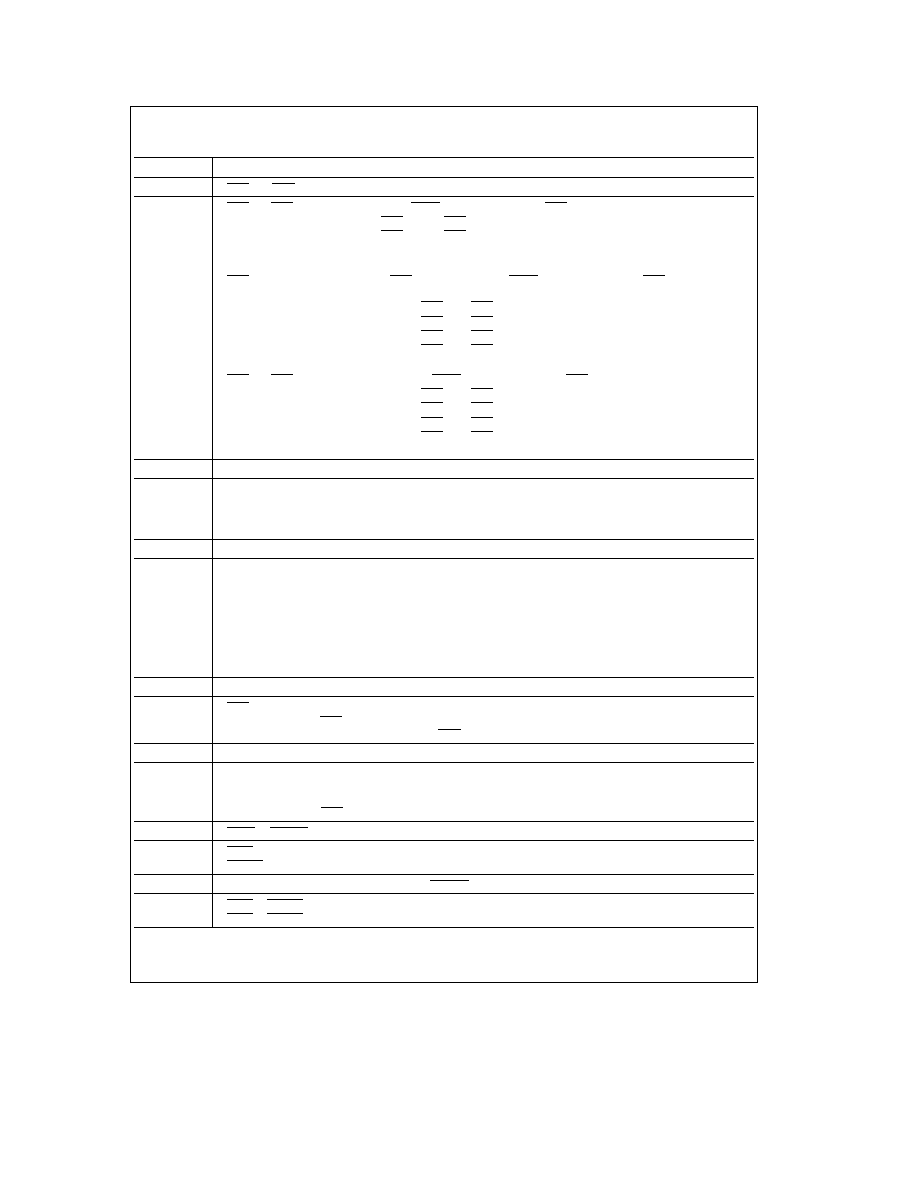
3 0 Programming and Resetting
(Continued)
3 3 PROGRAMMING BIT DEFINITIONS
(Continued)
Symbol
Description
C6 C5 C4
RAS and CAS Configuration Modes
(Continued)
1 0 1
RAS and CAS pairs are selected by B1 ECASn must be asserted for CASn to be asserted
B1
e
0 during an access selects RAS0 � 1 and CAS0 � 1
B1
e
1 during an access selects RAS2 � 3 and CAS2 � 3
B0 is not used during an access
No error scrubbing
1 1 0
RAS singles are selected by B0 � 1 CAS0 � 3 are all selected ECASn must be asserted for CASn to be
asserted
B1
e
0 B0
e
0 during an access selects RAS0 and CAS0 � 3
B1
e
0 B0
e
1 during an access selects RAS1 and CAS0 � 3
B1
e
1 B0
e
0 during an access selects RAS2 and CAS0 � 3
B1
e
1 B0
e
1 during an access selects RAS3 and CAS0 � 3
No error scrubbing
1 1 1
RAS and CAS singles are selected by B0 1 ECASn must be asserted for CASn to be asserted
B1
e
0 B0
e
0 during an access selects RAS0 and CAS0
B1
e
0 B0
e
1 during an access selects RAS1 and CAS1
B1
e
1 B0
e
0 during an access selects RAS2 and CAS2
B1
e
1 B0
e
1 during an access selects RAS3 and CAS3
No error scrubbing
C3
Refresh Clock Fine Tune Divisor
0
Divide delay line refresh clock further by 30 (If DELCLK Refresh Clock Clock Divisor
e
2 MHz
e
15 ms
refresh period)
1
Divide delay line refresh clock further by 26 (If DELCLK Refresh Clock Clock Divisor
e
2 MHz
e
13 ms
refresh period)
C2 C1 C0
Delay Line Refresh Clock Divisor Select
0 0 0
Divide DELCLK by 10 to get as close to 2 MHz as possible
0 0 1
Divide DELCLK by 9 to get as close to 2 MHz as possible
0 1 0
Divide DELCLK by 8 to get as close to 2 MHz as possible
0 1 1
Divide DELCLK by 7 to get as close to 2 MHz as possible
1 0 0
Divide DELCLK by 6 to get as close to 2 MHz as possible
1 0 1
Divide DELCLK by 5 to get as close to 2 MHz as possible
1 1 0
Divide DELCLK by 4 to get as close to 2 MHz as possible
1 1 1
Divide DELCLK by 3 to get as close to 2 MHz as possible
R9
Refresh Mode Select
0
RAS0 � 3 will all assert and negate at the same time during a refresh
1
Staggered Refresh RAS outputs during refresh are separated by one positive clock edge Depending on the
configuration mode chosen either one or two RASs will be asserted
R8
Address Pipelining Select
0
Address pipelining is selected The DRAM controller will switch the DRAM column address back to the row
address after guaranteeing the column address hold time
1
Non-address pipelining is selected The DRAM controller will hold the column address on the DRAM address
bus until the access RASs are negated
R7
WAIT or DTACK Select
0
WAIT type output is selected
1
DTACK (Data Transfer ACKnowledge) type output is selected
R6
Add Wait States to the Current Access if WAITIN is Low
0
WAIT or DTACK will be delayed by one additional positive edge of CLK
1
WAIT or DTACK will be delayed by two additional positive edges of CLK
11

3 0 Programming and Resetting
(Continued)
3 3 PROGRAMMING BIT DEFINITIONS
(Continued)
Symbol
Description
R5 R4
WAIT DTACK during Burst (See Section 5 1 2 or 5 2 2)
0 0
NO WAIT STATES If R7
e
0 during programming WAIT will remain negated during burst portion of access
If R7
e
1 programming DTACK will remain asserted during burst portion of access
0 1
1T If R7
e
0 during programming WAIT will assert when the ECAS inputs are negated with AREQ asserted
WAIT will negate from the positive edge of CLK after the ECASs have been asserted
If R7
e
1 during programming DTACK will negate when the ECAS inputs are negated with AREQ asserted
DTACK will assert from the positive edge of CLK after the ECASs have been asserted
1 0
T If R7
e
0 during programming WAIT will assert when the ECAS inputs are negated with AREQ asserted
WAIT will negate on the negative level of CLK after the ECASs have been asserted
If R7
e
1 during programming DTACK will negate when the ECAS inputs are negated with AREQ asserted
DTACK will assert from the negative level of CLK after the ECASs have been asserted
1 1
0T If R7
e
0 during programming WAIT will assert when the ECAS inputs are negated WAIT will negate when
the ECAS inputs are asserted
If R7
e
1 during programming DTACK will negate when the ECAS inputs are negated DTACK will assert when
the ECAS inputs are asserted
R3 R2
WAIT DTACK Delay Times (See Section 5 1 1 or 5 2 1)
0 0
NO WAIT STATES If R7
e
0 during programming WAIT will remain high during non-delayed accesses WAIT
will negate when RAS is negated during delayed accesses
NO WAIT STATES If R7
e
1 during programming DTACK will be asserted when RAS is asserted
0 1
T If R7
e
0 during programming WAIT will negate on the negative level of CLK after the access RAS
1T If R7
e
1 during programming DTACK will be asserted on the positive edge of CLK after the access RAS
1 0
NO WAIT STATES
T If R7
e
0 during programming WAIT will remain high during non-delayed accesses
WAIT will negate on the negative level of CLK after the access RAS during delayed accesses
T If R7
e
1 during programming DTACK will be asserted on the negative level of CLK after the access RAS
1 1
1T If R7
e
0 during programming WAIT will negate on the positive edge of CLK after the access RAS
1
T If R7
e
1 during programming DTACK will be asserted on the negative level of CLK after the positive edge
of CLK after the access RAS
R1 R0
RAS Low and RAS Precharge Time
0 0
RAS asserted during refresh
e
2 positive edges of CLK
RAS precharge time
e
1 positive edge of CLK
RAS will start from the first positive edge of CLK after GRANTB transitions (DP8422A)
0 1
RAS asserted during refresh
e
3 positive edges of CLK
RAS precharge time
e
2 positive edges of CLK
RAS will start from the second positive edge of CLK after GRANTB transitions (DP8422A)
1 0
RAS asserted during refresh
e
2 positive edges of CLK
RAS precharge time
e
2 positive edges of CLK
RAS will start from the first positive edge of CLK after GRANTB transitions (DP8422A)
1 1
RAS asserted during refresh
e
4 positive edges of CLK
RAS precharge time
e
3 positive edges of CLK
RAS will start from the second positive edge of CLK after GRANTB transitions (DP8422A)
12

4 0 Port A Access Modes
The DP8420A 21A 22A have two general purpose access
modes Mode 0 RAS synchronous and Mode 1 RAS asyn-
chronous One of these modes is selected at programming
through the B1 input A Port A access to DRAM is initiated
by two input signals ADS (ALE) and CS The access is al-
ways terminated by one signal AREQ These input signals
should be synchronous to the input clock
4 1 ACCESS MODE 0
Mode 0 synchronous access is selected by negating the
input B1 during programming (B1
e
0) To initiate a Mode 0
access ALE is pulse high and CS is asserted If precharge
time was met a refresh of DRAM or a Port B access was
not in progress the RAS (RASs) would be asserted on the
first rising edge of clock If a refresh or a Port B access is in
progress or precharge time is required the controller will
wait until these events have taken place and assert RAS
(RASs) on the next positive edge of clock
Sometime after the first positive edge of clock after ALE and
CS have been asserted the input AREQ must be asserted
In single port applications once AREQ is asserted CS can
be negated On the other hand ALE can stay asserted sev-
eral periods of clock however ALE must be negated before
or during the period of CLK in which AREQ is negated
The controller samples AREQ on the every rising edge of
clock after DTACK is asserted The access will end when
AREQ is sampled negated
TL F 8588 � 60
FIGURE 8a Access Mode 0
13
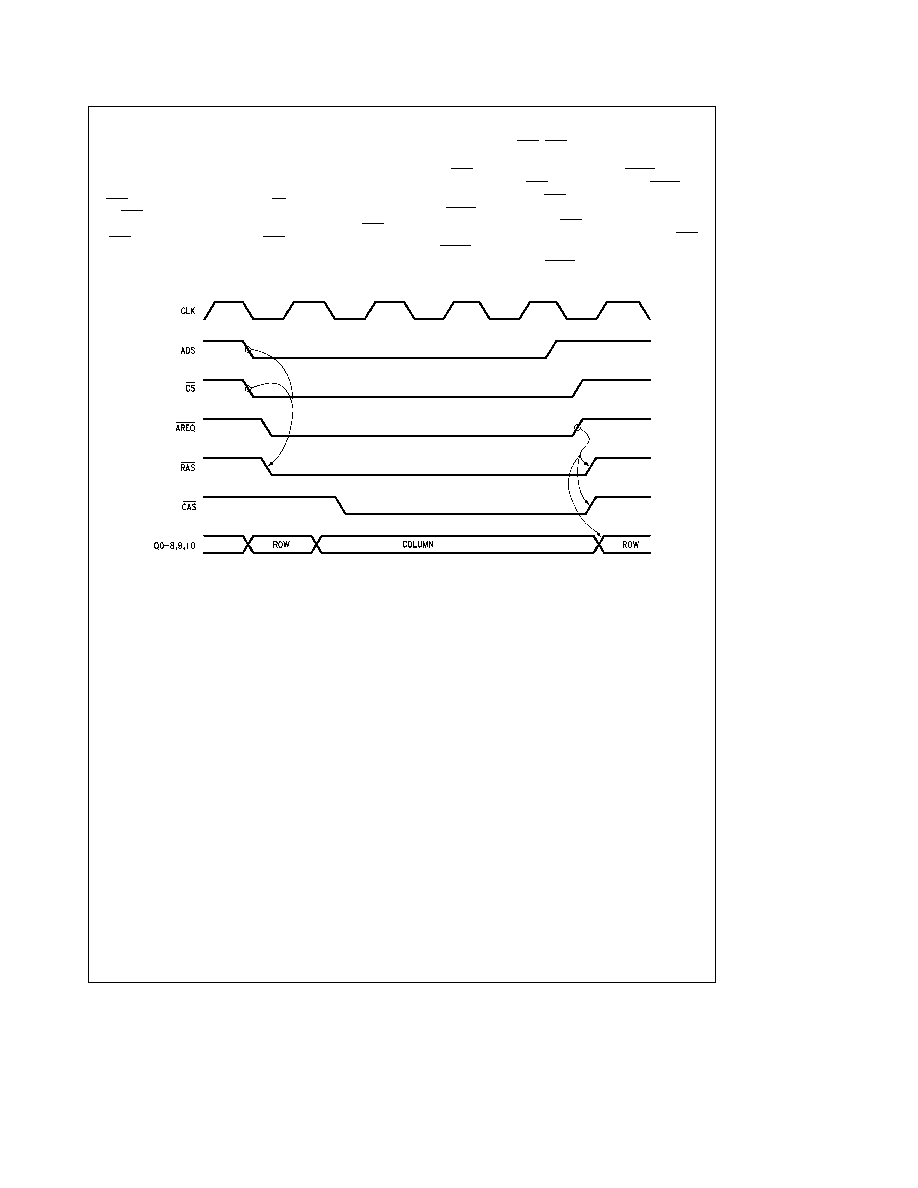
4 0 Port A Access Modes
(Continued)
4 2 ACCESS MODE 1
Mode 1 asynchronous access is selected by asserting the
input B1 during programming (B1
e
1) This mode allows ac-
cesses to start immediately from the access request input
ADS To initiate a Mode 1 access CS is asserted followed
by ADS asserted If precharge time was met a refresh of
the DRAM or a Port B access was not in progress the RAS
(RASs) would be asserted from ADS being asserted If a
refresh or Port B access is in progress or precharge time is
required the controller will wait until these events have tak-
en place and assert RAS (RASs) from the next rising edge
of clock
When ADS is asserted or sometime after AREQ must be
asserted At this time ADS can be negated and AREQ will
continue the access Also ADS can continue to be asserted
after AREQ has been asserted and negated however a
new access will not start until ADS is negated and asserted
again When address pipelining is not implemented ADS
and AREQ can be tied together
The access will end when AREQ is negated
TL F 8588 � 62
FIGURE 8b Access Mode 1
14
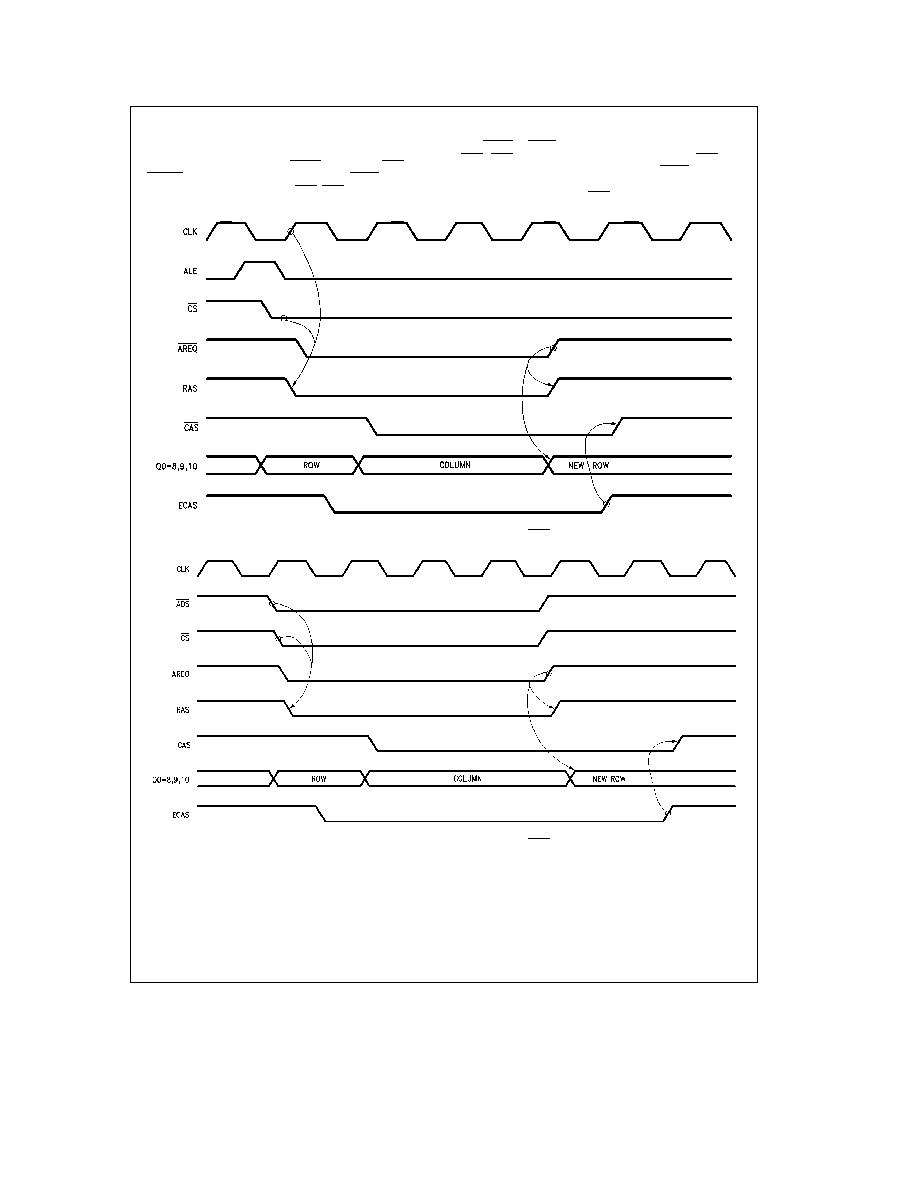
4 0 Port A Access Modes
(Continued)
4 3 EXTENDING CAS WITH EITHER ACCESS MODE
In both access modes once AREQ is negated RAS and
DTACK if programmed will be negated If ECAS0 was as-
serted (0) during programming CAS (CASs) will be negated
with AREQ If ECAS0 was negated (1) during programming
CAS (CASs) will continue to be asserted after RAS has
been negated given that the appropriate ECAS inputs are
asserted This allows a DRAM to have data present on the
data out bus while gaining RAS precharge time
TL F 8588 � 61
FIGURE 9a Access Mode 0 Extending CAS
TL F 8588 � 63
FIGURE 9b Access Mode 1 Extending CAS
15
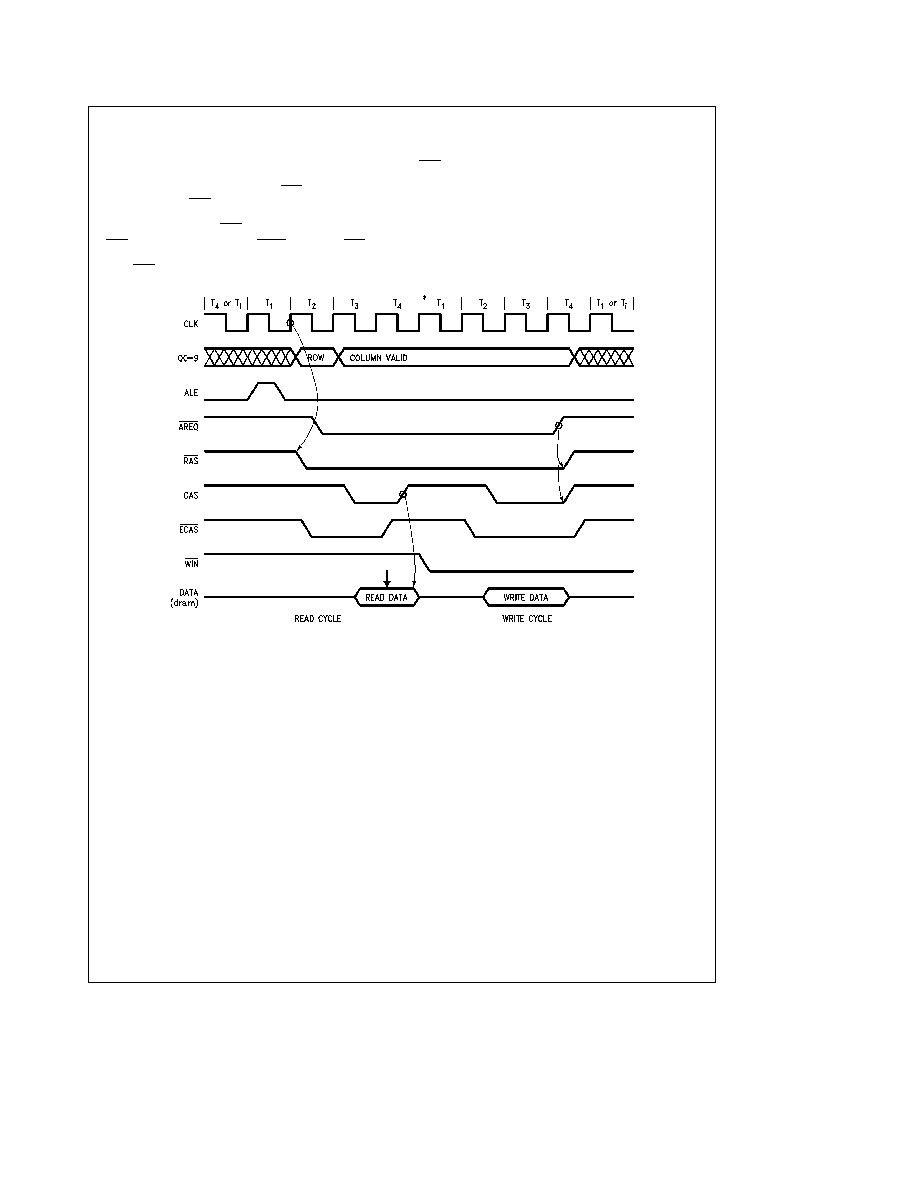
4 0 Port A Access Modes
(Continued)
4 4 READ-MODIFY-WRITE CYCLES WITH EITHER ACCESS MODE
There are 2 methods by which this chip can be used to do
read-modify-write access cycles The first method involves
doing a late write access where the WIN input is asserted
some delay after CAS is asserted The second method in-
volves doing a page mode read access followed by a page
mode write access with RAS held low (see
Figure 9c )
CASn must be toggled using the ECASn inputs and WIN has
to be changed from negated to asserted (read to write)
while CAS is negated This method is better than changing
WIN from negated to asserted in a late write access be-
cause here a problem may arise with DATA IN and DATA
OUT being valid at the same time This may result in a data
line trying to drive two different levels simultaneously The
page mode method of a read-modify-write access allows
the user to have transceivers in the system because the
data in (read data) is guaranteed to be high impedance dur-
ing the time the data out (write data) is valid
TL F 8588 � G2
There may be idle states inserted here by the CPU
FIGURE 9c Read-Modify-Write Access Cycle
16

4 0 Port A Access Modes
(Continued)
4 5 ADDITIONAL ACCESS SUPPORT FEATURES
To
support
the
different
modes
of
accessing
the
DP8420A 21A 22A offer other access features These ad-
ditional features include Address Latches and Column In-
crement (for page burst mode support) Address Pipelining
and Delay CAS (to allow the user with a multiplexed bus to
ensure valid data is present before CAS is asserted)
4 5 1 Address Latches and Column Increment
The Address Latches can be programmed through pro-
gramming bit B0 They can be programmed to either latch
the address or remain in a fall-through mode If the address
latches are used to latch the address the controller will
function as follows
In Mode 0 the rising edge of ALE places the latches in fall-
through once ALE is negated the address present in the
row column and bank input is latched
In Mode 1 the address latches are in fall through mode until
ADS is asserted ADS asserted latches the address
Once the address is latched the column address can be
incremented with the input COLINC COLINC can be used
for sequential accesses of static column DRAMs COLINC
can also be used with the ECAS inputs to support sequen-
tial accesses to page mode DRAMs as shown in
Figure 10
COLINC should only be asserted when the signal RFIP is
negated during an access since this input functions as ex-
tended refresh when RFIP is asserted COLINC must be
negated (0) when the address is being latched (ADS falling
edge in Mode 1) If COLINC is asserted with all of the bits of
the column address asserted (ones) the column address
will return to zero
TL F 8588 � C4
FIGURE 10 Column Increment
The address latches function differently with the DP8422A
The DP8422A will latch the address of the currently granted
port If Port A is currently granted the address will be
latched as described in Section 4 5 1 If Port A is not grant-
ed and requests an access the address will be latched on
the first or second positive edge of CLK after GRANTB has
been negated depending on the programming bits R0 R1
For Port B if GRANTB is asserted the address will be
latched with AREQB asserted If GRANTB is negated the
address will latch on the first or second positive edge of
CLK after GRANTB is asserted depending on the program-
ming bits R0 R1
17
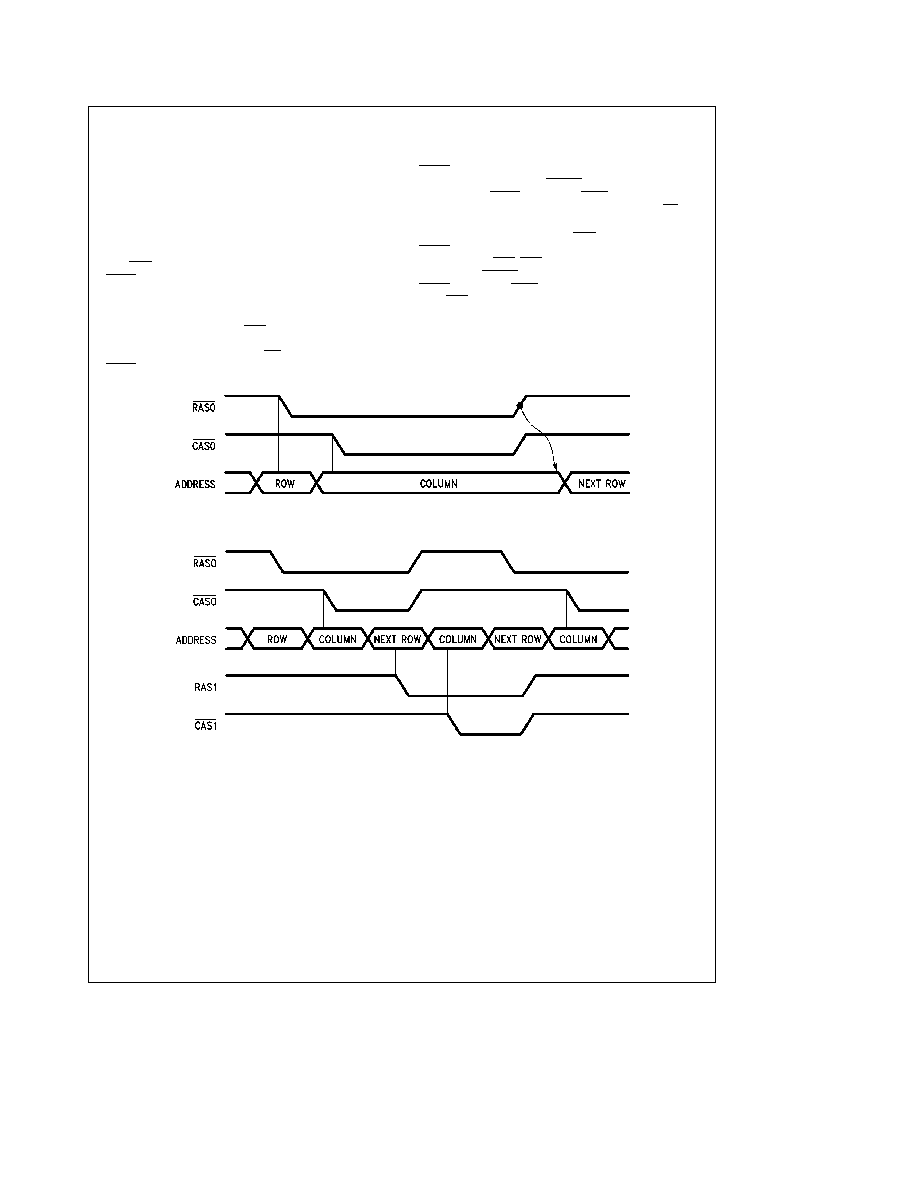
4 0 Port A Access Modes
(Continued)
4 5 2 Address Pipelining
Address pipelining is the overlapping of accesses to differ-
ent banks of DRAM If the majority of successive accesses
are to a different bank the accesses can be overlapped
Because of this overlapping the cycle time of the DRAM
accesses are greatly reduced The DP8420A 21A 22A can
be programmed to allow a new row address to be placed on
the DRAM address bus after the column address hold time
has been met At this time a new access can be initiated
with ADS or ALE depending on the access mode while
AREQ is used to sustain the current access The DP8422A
supports address pipelining for Port A only This mode can-
not be used with page static column or nibble modes of
operations because the DRAM column address is switched
back to the row address after CAS is asserted This mode is
programmed through address bit R8 (see
Figures 11a and
11b ) In this mode the output WE always functions as
RFRQ
During address pipelining in Mode 0 shown in
Figure 11c
ALE cannot be pulsed high to start another access until
AREQ has been asserted for the previous access for at
least one period of CLK DTACK if programmed will be
negated once AREQ is negated WAIT if programmed to
insert wait states will be asserted once ALE and CS are
asserted
In Mode 1 shown in
Figure 11d ADS can be negated once
AREQ is asserted After meeting the minimum negated
pulse width for ADS ADS can again be asserted to start a
new access DTACK if programmed will be negated once
AREQ is negated WAIT if programmed will be asserted
once ADS is asserted
In either mode with either type of wait programmed the
DP8420A 21A 22A will still delay the access for precharge
if sequential accesses are to the same bank or if a refresh
takes place
TL F 8588 � G0
FIGURE 11a Non-Address Pipelined Mode
TL F 8588 � G1
FIGURE 11b Address Pipelined Mode
18
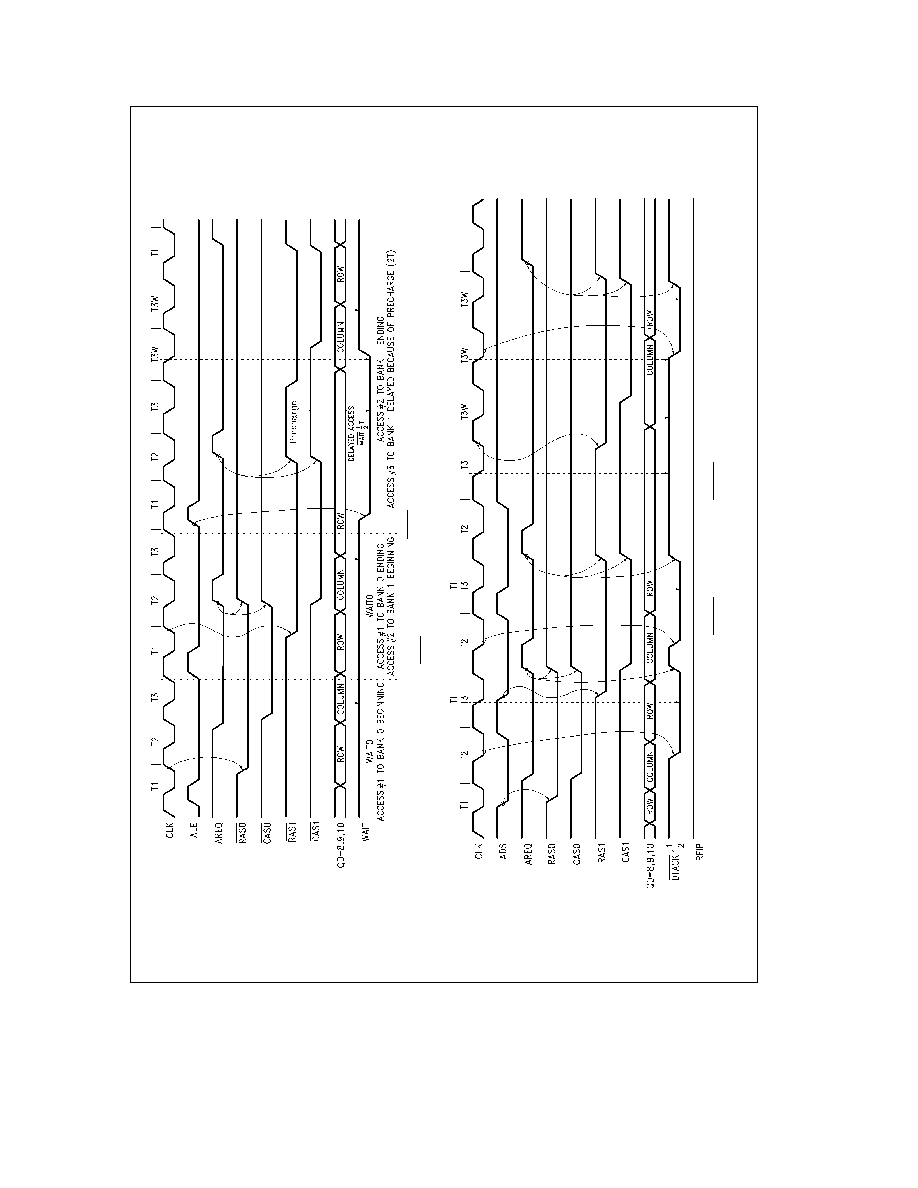
4 0 Port A Access Modes
(Continued)
TLF8588
�
C
5
FIGURE
11c
Mode
0
Address
Pipelining
(WAIT
of
0
T
Has
Been
Programmed
WAIT
is
Sampled
at
the
``T3''
Falling
Clock
Edge)
TLF8588
�
C
6
FIGURE
11d
Mode
1
Address
Pipelining
(DTACK
1
T
Programmed
DTACK
is
Sampled
at
the
``T3''
Falling
Clock
Edge)
19
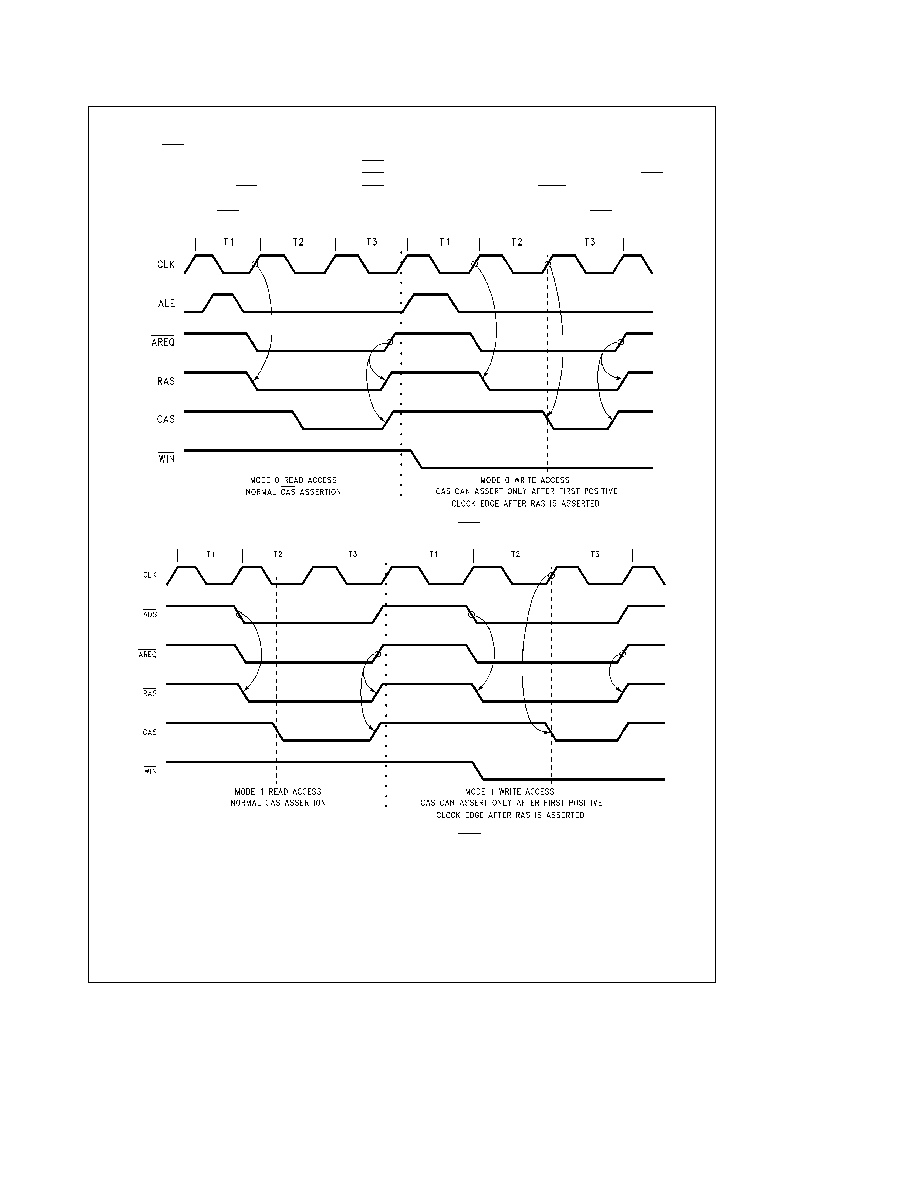
4 0 Port A Access Modes
(Continued)
4 5 3 Delay CAS during Write Accesses
Address bit C9 asserted during programming will cause CAS
to be delayed until the first positive edge of CLK after RAS
is asserted when the input WIN is asserted Delaying CAS
during write accesses ensures that the data to be written to
DRAM will be setup to CAS asserting as shown in
Figures
12a and 12b If the possibility exists that data still may not
be present after the first positive edge of CLK CAS can be
delayed further with the ECAS inputs If address bit C9 is
negated during programming read and write accesses will
be treated the same (with regard to CAS)
TL F 8588 � C7
FIGURE 12a Mode 0 Delay CAS
TL F 8588 � C8
FIGURE 12b Mode 1 Delay CAS
20
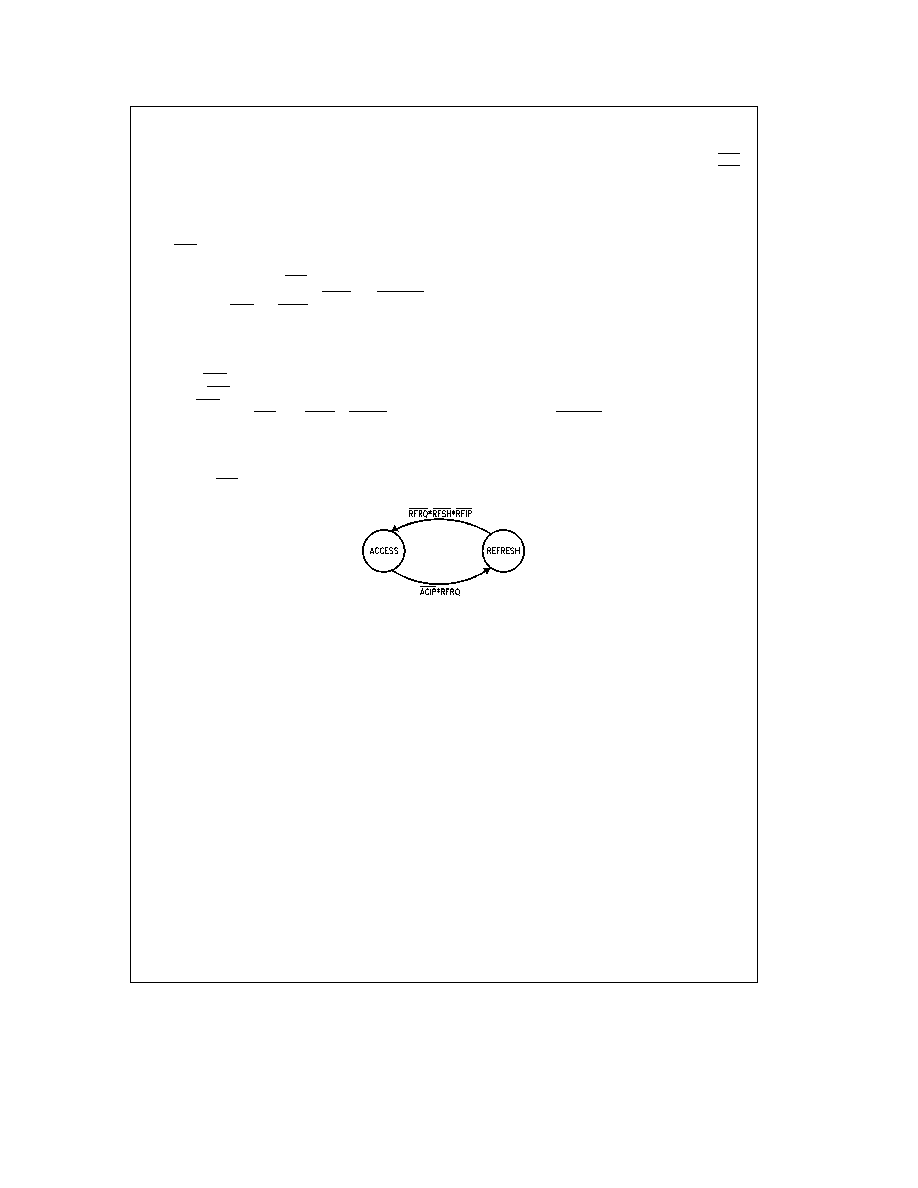
5 0 Refresh Options
The DP8420A 21A 22A support three refresh control mode
options
1 Automatic Internally Controlled Refresh
2 Externally Controlled Burst Refresh
3 Refresh Request Acknowledge
With each of the control modes above three types of re-
fresh can be performed
1 All RAS Refresh
2 Staggered Refresh
3 Error Scrubbing During All RAS Refresh
There are three inputs EXTNDRF RFSH and DISRFSH
and two outputs RFIP and RFRQ associated with refresh
There are also ten programming bits R0 � 1 R9 C0 � 6 and
ECAS0 used to program the various types of refreshing
Asserting the input EXTNDRF extends the refresh cycle for
a single or multiple integral periods of CLK
The output RFIP is asserted one period of CLK before the
first refresh RAS is asserted If an access is currently in
progress RFIP will be asserted up to one period of CLK
before the first refresh RAS after AREQ or AREQB is nega-
ted for the access (see
Figure 13 )
The DP8420A 21A 22A will increment the refresh address
counter automatically independent of the refresh mode
used The refresh address counter will be incremented once
all the refresh RASs have been negated
In every combination of refresh control mode and refresh
type the DP8420A 21A 22A is programmed to keep RAS
asserted a number of CLK periods The time values of RAS
low during refresh are programmed through programming
bits R0 and R1
5 1 REFRESH CONTROL MODES
5 1 1 Automatic Internal Refresh
The DP8420A 21A 22A have an internal refresh clock The
period of the refresh clock is generated from the program-
ming bits C0 � 3 Every period of the refresh clock an inter-
nal refresh request is generated As long as a DRAM ac-
cess is not currently in progress and precharge time has
been met the internal refresh request will generate an auto-
matic internal refresh If a DRAM access is in progress the
DP8420A 21A 22A on-chip arbitration logic will wait until
the access is finished before performing the refresh The
refresh access arbitration logic can insert a refresh cycle
between two address pipelined accesses However the re-
fresh arbitration logic can not interrupt an access cycle to
perform a refresh To enable automatic internally controlled
refreshes the input DISRFSH must be negated
TL F 8588 � F8
Explanation of Terms
RFRQ
e
ReFresh ReQuest internal to the DP8420A 21A 22A RFRQ has the ability to hold off a pending access
RFSH
e
Externally requested ReFreSH
RFIP
e
ReFresh in Progress
ACIP
e
Port A or Port B (DP8422A only) ACcess in Progress This means that either RAS is low for an access or is in the process of
transitioning low for an access
FIGURE 13 DP8420A 21A 22A Access Refresh Arbitration State Program
21
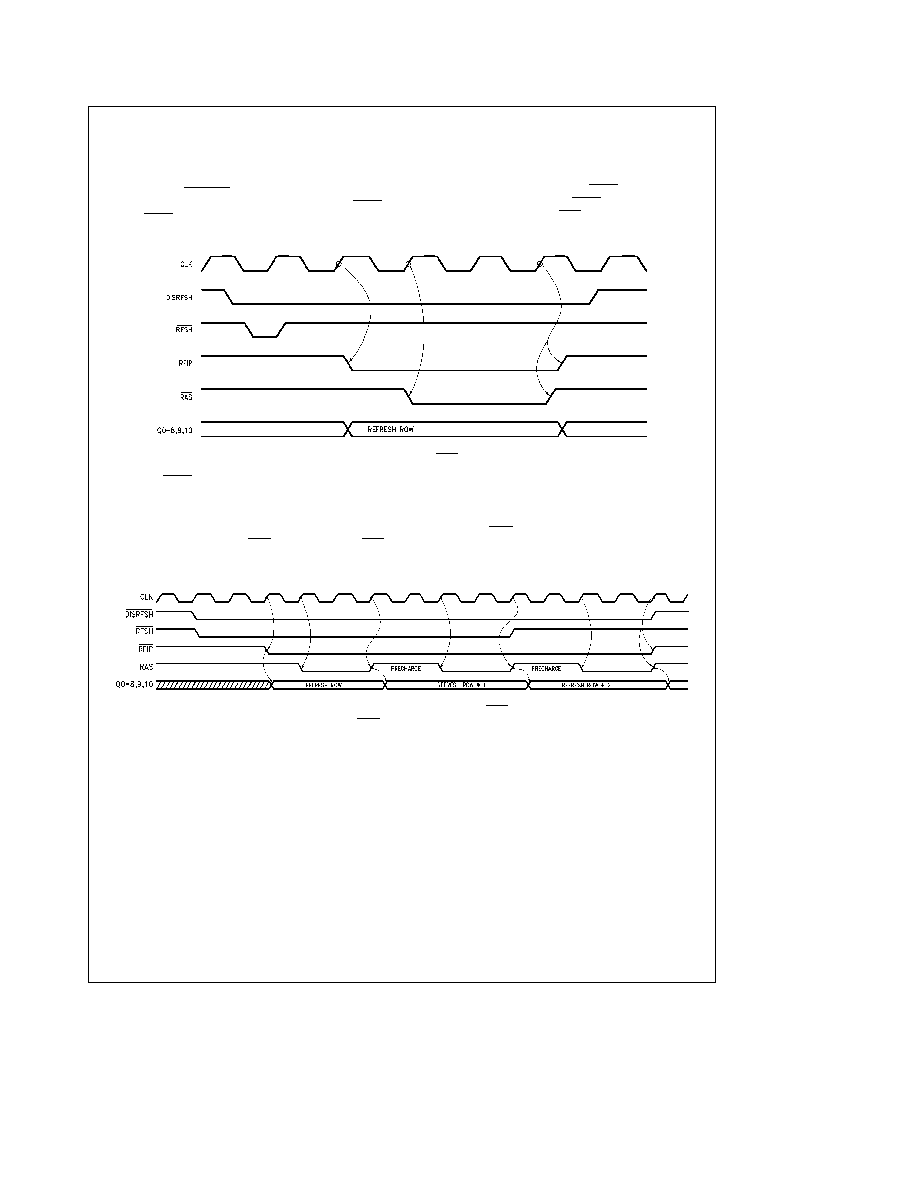
5 0 Refresh Options
(Continued)
5 1 2 Externally Controlled Burst Refresh
To use externally controlled burst refresh the user must
disable the automatic internally controlled refreshes by as-
serting the input DISRFSH The user is responsible for gen-
erating the refresh request by asserting the input RFSH
Pulsing RFSH low sets an internal latch that is used to
produce the internal refresh request The refresh cycle will
take place on the next positive edge of CLK as shown in
Figure 14a If an access to DRAM is in progress or pre-
charge time for the last access has not been met the re-
fresh will be delayed Since pulsing RFSH low sets a latch
the user does not have to keep RFSH low until the refresh
starts When the last refresh RAS negates the internal re-
fresh request latch is cleared
TL F 8588 � 64
FIGURE 14a Single External Refreshes (2 Periods of RAS Low during Refresh Programmed)
By keeping RFSH asserted past the positive edge of CLK
which ends the refresh cycle as shown in
Figure 14b the
user will perform another refresh cycle Using this tech-
nique the user can perform a burst refresh consisting of any
number of refresh cycles Each refresh cycle during a burst
refresh will meet the refresh RAS low time and the RAS
precharge time (programming bits R0 � 1)
If the user desires to burst refresh the entire DRAM (all row
addresses) he could generate an end of count signal (burst
refresh
finished)
by
looking
at
one
of
the
DP8420A 21A 22A high address outputs (Q7 Q8 Q9 or
Q10) and the RFIP output The Qn outputs function as a
decode of how many row addresses have been refreshed
(Q7
e
128 refreshes Q8
e
256 refreshes Q9
e
512 re-
freshes Q10
e
1024 refreshes)
TL F 8588 � 65
FIGURE 14b External Burst Refresh (2 Periods of RAS Precharge
2 Periods of Refresh RAS Low during Refresh Programmed)
22

5 0 Refresh Options
(Continued)
5 1 3 Refresh Request Acknowledge
The DP8420A 21A 22A can be programmed to output in-
ternal refresh requests When the user programs ECAS0
negated (1) and or address pipelining mode is selected the
WE output functions as RFRQ RFRQ (WE) will be asserted
by one of two events
First when the external circuitry pulses low the input RFSH
which will request an external refresh
Second when the internal refresh clock has expired which
signals that another refresh is needed
An example of the first case where an external refresh is
requested while RFRQ is negated (1) is shown in
Figure
15a Notice that RFRQ will be asserted from a positive edge
of clock
On the second case when the RFRQ is asserted from the
expiration of the internal refresh clock the user has two
options
First if DISRFSH is negated an automatic internal refresh
will take place See
Figure 15b
Second with DISRFSH asserted RFRQ will stay asserted
until RFSH is pulsed low This option will cause an external-
ly requested burst refresh to take place See
Figure 15c
RFRQ will go high and then assert (toggle) if additional peri-
ods of the internal refresh clock have expired and neither an
externally controlled refresh nor an automatically controlled
internal refresh have taken place see
Figure 15d If a time
critical event or long accesses like page static column
mode can not be interrupted RFRQ pulsing high can be
used to increment a counter This counter can be used to
perform a burst refresh of the number of refreshes missed
(through the RFSH input)
TL F 8588 � 66
FIGURE 15a Externally Controlled Single and Burst Refresh with Refresh Request
(RFRQ) Output (2 Periods of RAS Low during Refresh Programmed)
TL F 8588 � 67
FIGURE 15b Automatic Internal Refresh with Refresh Request (3T of RAS Low during Refresh Programmed)
23
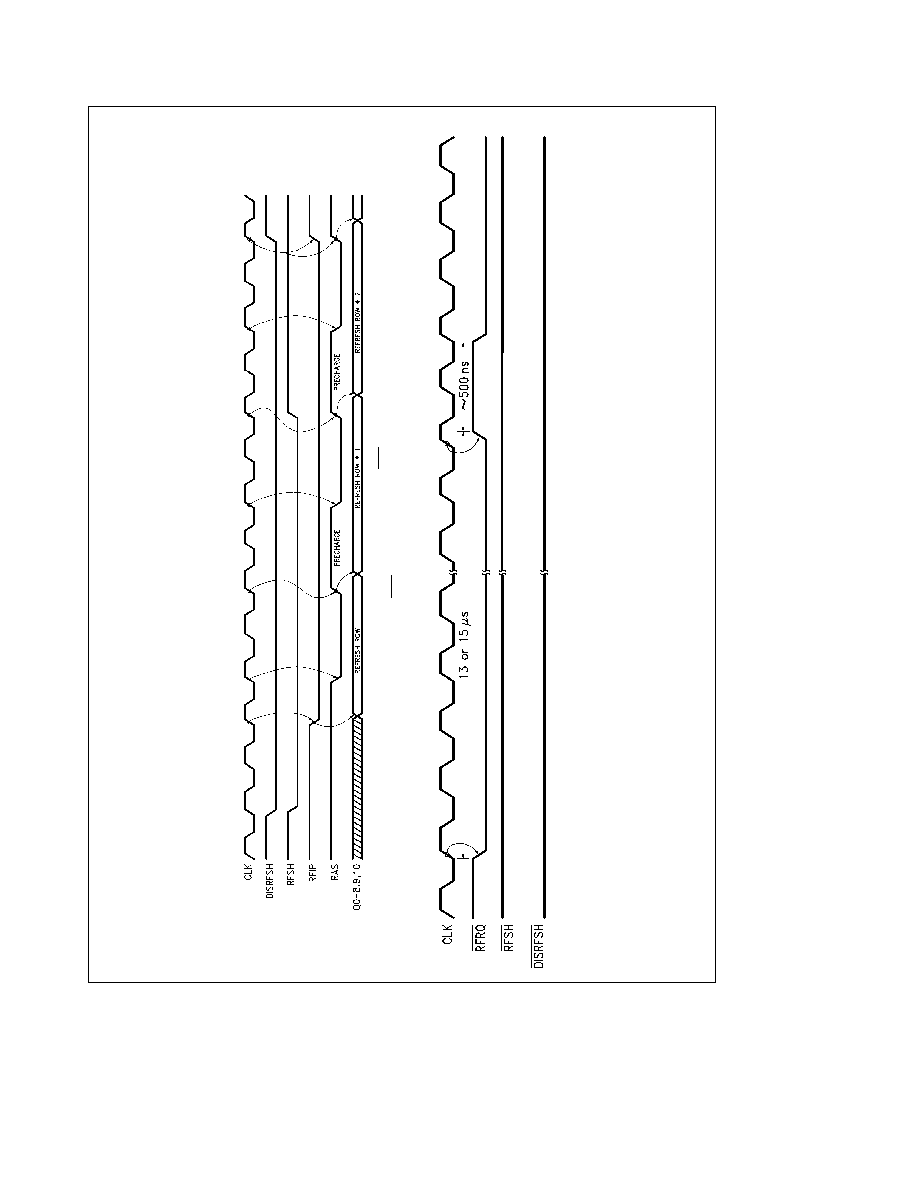
5 0 Refresh Options
(Continued)
TLF8588
�
6
5
FIGURE
15c
External
Burst
Refresh
(2
Periods
of
RAS
Precharge
2
Periods
of
Refresh
RAS
Low
during
Refresh
Programmed)
TLF8588
�
6
8
FIGURE
15d
Refresh
Request
Timing
24
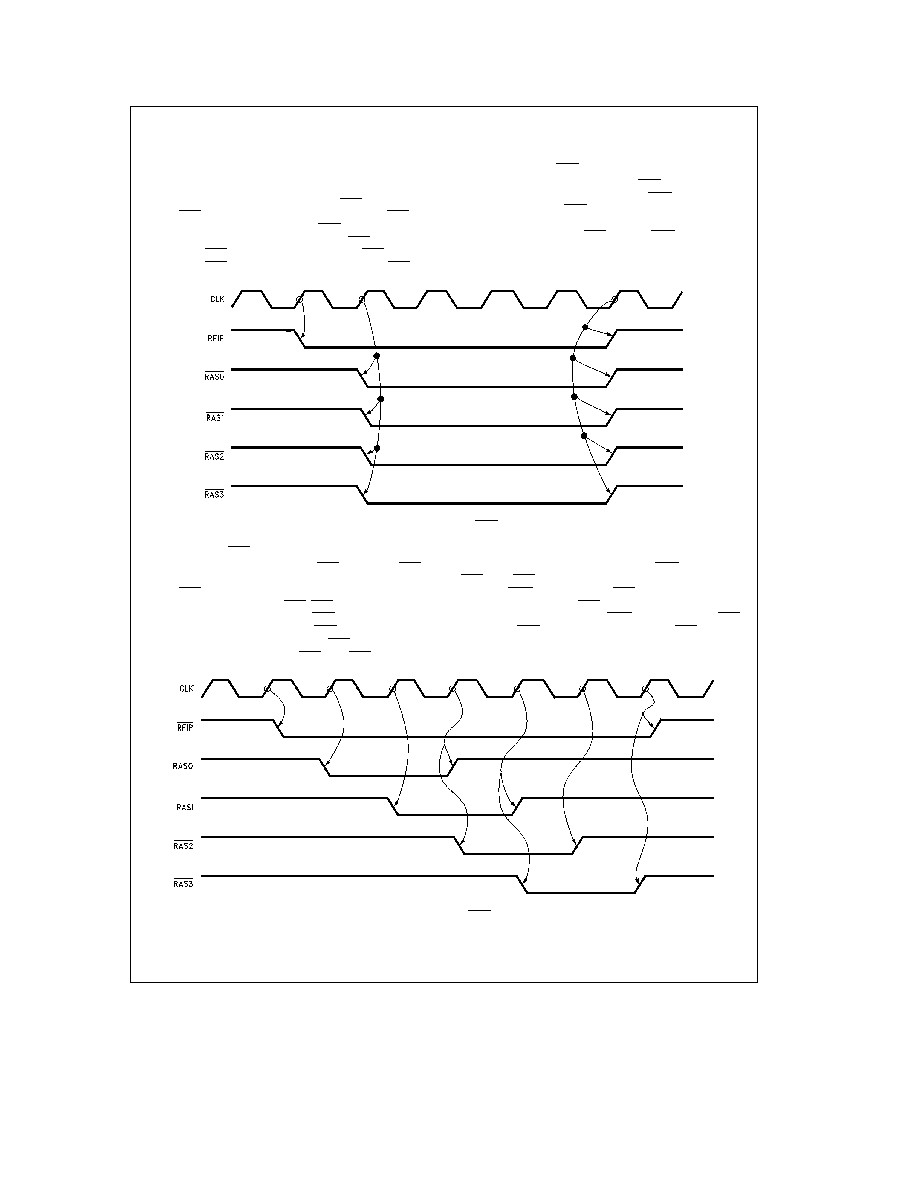
5 0 Refresh Options
(Continued)
5 2 REFRESH CYCLE TYPES
Three different types of refresh cycles are available for use
The three different types are mutually exclusive and can be
used with any of the three modes of refresh control The
three different refresh cycle types are all RAS refresh stag-
gered RAS refresh and error scrubbing during all RAS re-
fresh In all refresh cycle types the RAS precharge time is
guaranteed between the previous access RAS ending and
the refresh RAS0 starting between refresh RAS3 ending
and access RAS beginning between burst refresh RASs
5 2 1 Conventional RAS Refresh
A conventional refresh cycle causes RAS0 � 3 to all assert
from the first positive edge of CLK after RFIP is asserted as
shown in
Figure 16 RAS0 � 3 will stay asserted until the
number of positive edges of CLK programmed have passed
On the last positive edge RAS0 � 3 and RFIP will be negat-
ed This type of refresh cycle is programmed by negating
address bit R9 during programming
TL F 8588 � 69
FIGURE 16 Conventional RAS Refresh
5 2 2 Staggered RAS Refresh
A staggered refresh staggers each RAS or group of RASs
by a positive edge of CLK as shown in
Figure 17 The num-
ber of RASs which will be asserted on each positive edge
of CLK is determined by the RAS CAS configuration mode
programming bits C4 � C6 If single RAS outputs are select-
ed during programming then each RAS will assert on suc-
cessive positive edges of CLK If two RAS outputs are se-
lected during programming then RAS0 and RAS1 will assert
on the first positive edge of CLK after RFIP is asserted
RAS2 and RAS3 will assert on the second positive edge of
CLK after RFIP is asserted If all RAS outputs were selected
during programming all RAS outputs would assert on the
first positive edge of CLK after RFIP is asserted Each RAS
or group of RASs will meet the programmed RAS low time
and then negate
TL F 8588 � 70
FIGURE 17 Staggered RAS Refresh
25
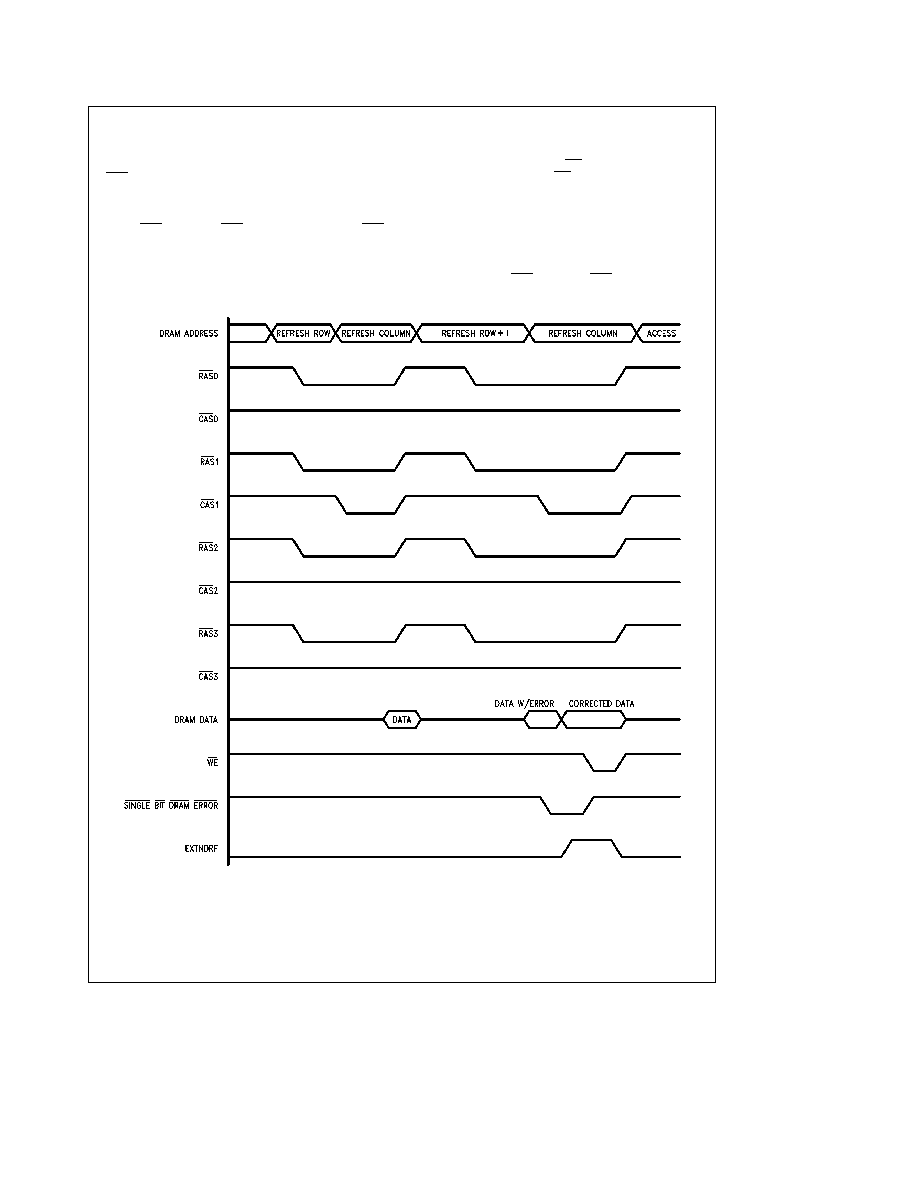
5 0 Refresh Options
(Continued)
5 2 3 Error Scrubbing during Refresh
The DP8420A 21A 22A support error scrubbing during all
RAS DRAM refreshes Error scrubbing during refresh is se-
lected through bits C4 � C6 with bit R9 negated during pro-
gramming Error scrubbing can not be used with staggered
refresh (see Section 8 0) Error scrubbing during refresh al-
lows a CAS or group of CASs to assert during the all RAS
refresh as shown in
Figure 18 This allows data to be read
from the DRAM array and passed through an Error Detec-
tion And Correction Chip EDAC If the EDAC determines
that the data contains a single bit error and corrects that
error the refresh cycle can be extended with the input ex-
tend refresh EXTNDRF and a read-modify-write operation
can be performed by asserting WE It is the responsibility of
the designer to ensure that WE is negated The DP8422A
has a 24-bit internal refresh address counter that contains
the 11 row
11 column and 2 bank addresses
The
DP8420A 21A have a 22-bit internal refresh address coun-
ter that contains the 10 row 10 column and 2 bank address-
es These counters are configured as bank column row
with the row address as the least significant bits The bank
counter bits are then used with the programming selection
to determine which CAS or group of CASs will assert during
a refresh
TL F 8588 � 46
FIGURE 18 Error Scrubbing during Refresh
26
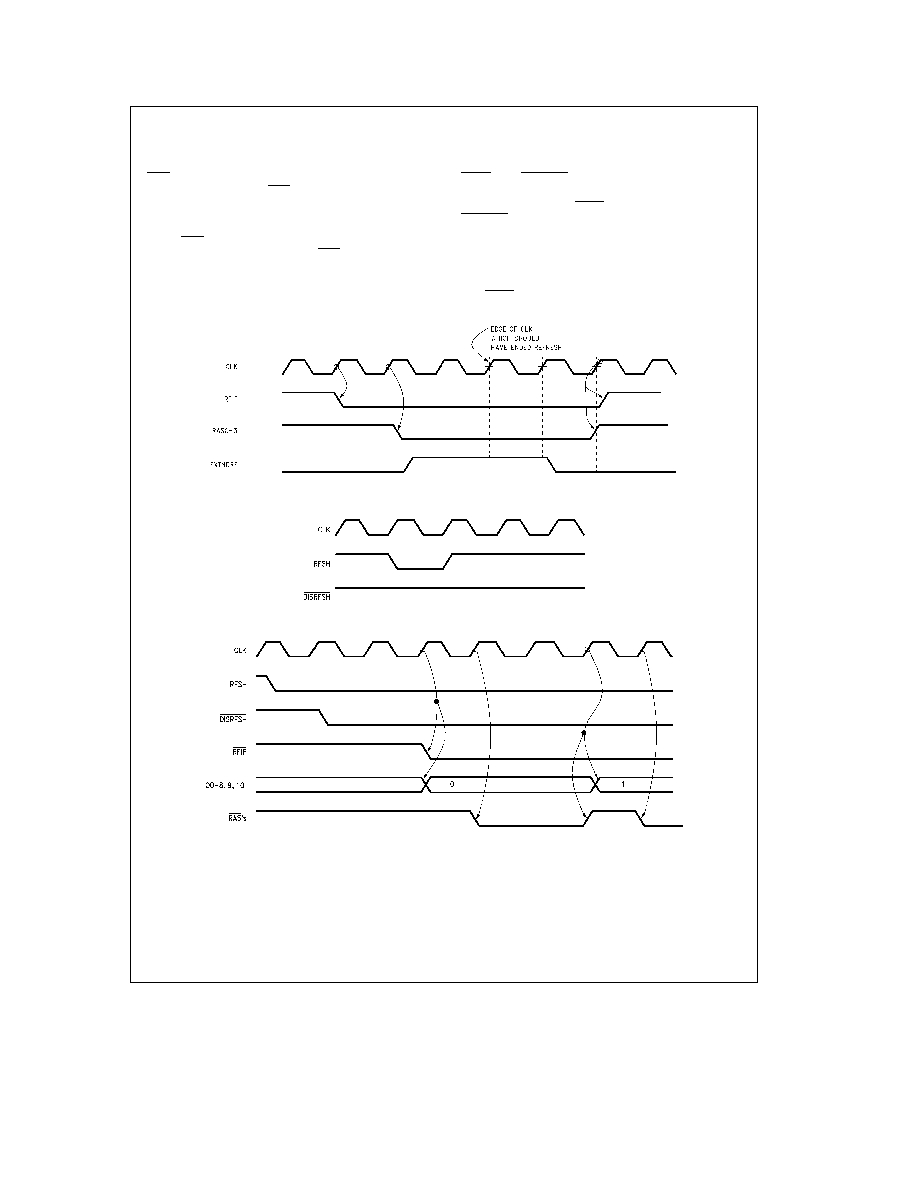
5 0 Refresh Options
(Continued)
5 3 EXTENDING REFRESH
The programmed number of periods of CLK that refresh
RASs are asserted can be extended by one or multiple peri-
ods of CLK Only the all RAS (with or without error scrub-
bing) type of refresh can be extended To extend a refresh
cycle the input extend refresh EXTNDRF must be assert-
ed before the positive edge of CLK that would have negated
all the RAS outputs during the refresh cycle and after the
positive edge of CLK which starts all RAS outputs during the
refresh as shown in
Figure 19 This will extend the refresh to
the next positive edge of CLK and EXTNDRF will be sam-
pled again The refresh cycle will continue until EXTNDRF is
sampled low on a positive edge of CLK
5 4 CLEARING THE REFRESH ADDRESS COUNTER
The refresh address counter can be cleared by asserting
RFSH while DISRFSH is negated as shown in
Figure 20a
This can be used prior to a burst refresh of the entire memo-
ry array By asserting RFSH one period of CLK before
DISRFSH is asserted and then keeping both inputs assert-
ed the DP8420A 21A 22A will clear the refresh address
counter and then perform refresh cycles separated by the
programmed value of precharge as shown in
Figure 20b An
end-of-count signal can be generated from the Q DRAM
address outputs of the DP8420A 21A 22A and used to ne-
gate RFSH
TL F 8588 � 71
FIGURE 19 Extending Refresh with the Extend Refresh (EXTNDRF) Input
TL F 8588 � 72
FIGURE 20a Clearing the Refresh Address Counter
TL F 8588 � 73
FIGURE 20b Clearing the Refresh Counter during Burst
27
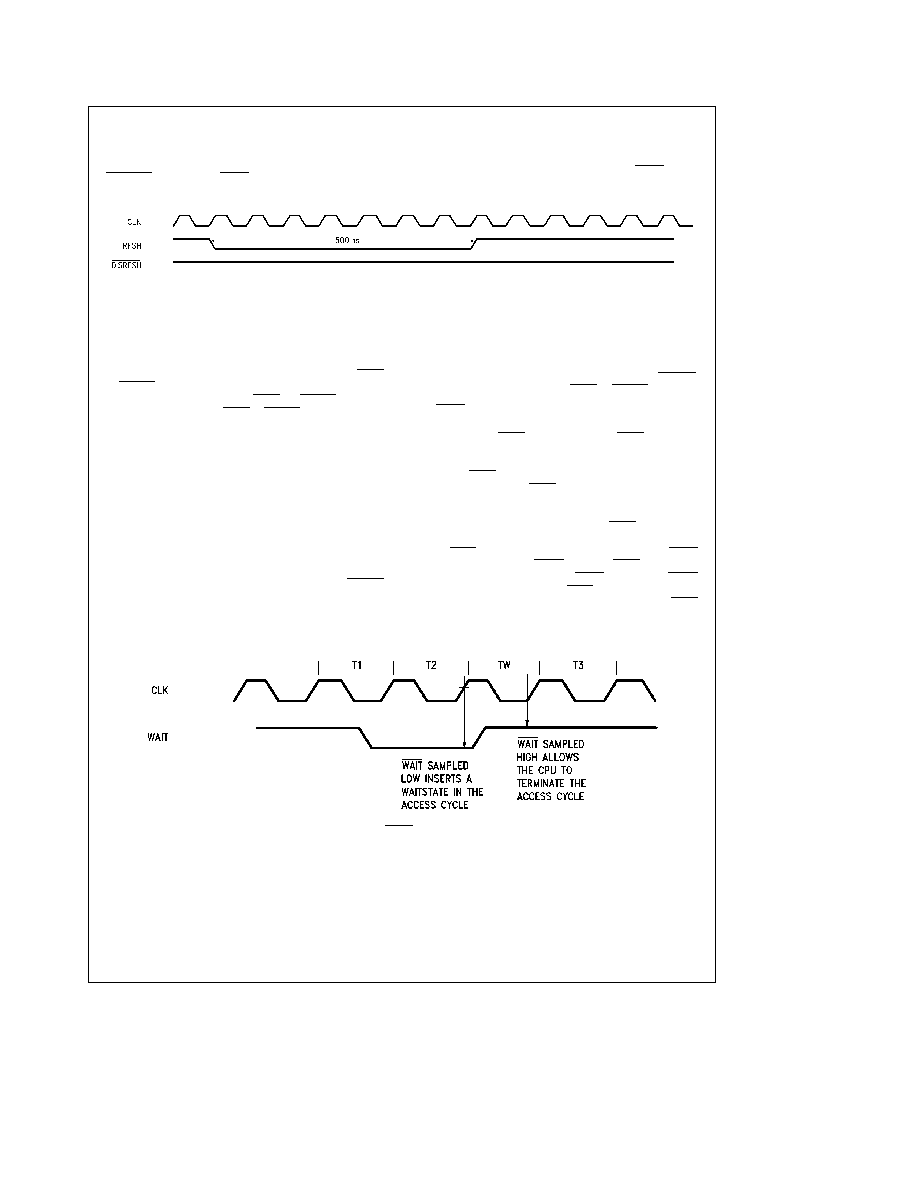
5 0 Refresh Options
(Continued)
5 5 CLEARING THE REFRESH REQUEST CLOCK
The refresh request clock can be cleared by negating
DISRFSH and asserting RFSH for 500 ns one period of the
internal 2 MHz clock as shown in
Figure 21 By clearing the
refresh request clock the user is guaranteed that an inter-
nal refresh request will not be generated for approximately
15 ms one refresh clock period from the time RFSH is neg-
ated This action will also clear the refresh address counter
TL F 8588 � 75
FIGURE 21 Clearing the Refresh Request Clock Counter
6 0 Port A Wait State Support
Wait states allow a CPU's access cycle to be increased by
one or multiple CPU clock periods The wait or ready input is
named differently by CPU manufacturers However any
CPU's wait or ready input is compatible with either the WAIT
or DTACK output of the DP8420A 21A 22A The user de-
termines whether to program WAIT or DTACK (R7) and
which value to select for WAIT or DTACK (R2 R3) depend-
ing upon the CPU used and where the CPU samples its wait
input during an access cycle
The decision to terminate the CPU access cycle is directly
affected by the speed of the DRAMs used The system de-
signer must ensure that the data from the DRAMs will be
present for the CPU to sample or that the data has been
written to the DRAM before allowing the CPU access cycle
to terminate
The insertion of wait states also allows a CPU's access cy-
cle to be extended until the DRAM access has taken place
The DP8420A 21A 22A insert wait states into CPU access
cycles due to guaranteeing precharge time refresh current-
ly in progress user programmed wait states the WAITIN
signal being asserted and GRANTB not being valid
(DP8422A only) If one of these events is taking place and
the CPU starts an access the DP8420A 21A 22A will insert
wait states into the access cycle thereby increasing the
length of the CPU's access Once the event has been com-
pleted the DP8420A 21A 22A will allow the access to take
place and stop inserting wait states
There are six programming bits R2 � R7 an input WAITIN
and an output that functions as WAIT or DTACK
6 1 WAIT TYPE OUTPUT
With the R7 address bit negated during programming the
user selects the WAIT output As long as WAIT is sampled
asserted by the CPU wait states (extra clock periods) are
inserted into the current access cycle as shown in
Figure
22 Once WAIT is sampled negated the access cycle is
completed by the CPU WAIT is asserted at the beginning of
a chip selected access and is programmed to negate a
number of positive edges and or negative levels of CLK
from the event that starts the access WAIT can also be
programmed to function in page burst mode applications
Once WAIT is negated during an access and the ECAS
inputs are negated with AREQ asserted WAIT can be pro-
grammed to toggle following the ECAS inputs Once AREQ
is negated ending the access WAIT will stay negated until
the next chip selected access For more details about WAIT
Type Output see Application Note AN-773
TL F 8588 � 76
FIGURE 22 WAIT Type Output
28

6 0 Port A Wait State Support
(Continued)
6 2 DTACK TYPE OUTPUT
With the R7 address bit asserted during programming the
user selects the DTACK type output As long as DTACK is
sampled negated by the CPU wait states are inserted into
the current access cycle as shown in
Figure 23 Once
DTACK is sampled asserted the access cycle is completed
by the CPU DTACK which is normally negated is pro-
grammed to assert a number of positive edges and or neg-
ative levels from the event that starts RAS for the access
DTACK can also be programmed to function during page
burst mode accesses Once DTACK is asserted and the
ECAS inputs are negated with AREQ asserted DTACK can
be programmed to negate and assert from the ECAS inputs
toggling to perform a page burst mode operation Once
AREQ is negated ending the access DTACK will be negat-
ed and stays negated until the next chip selected access
For more details about DTACK type output see Application
Note AN-773
6 3 DYNAMICALLY INCREASING THE
NUMBER OF WAIT STATES
The user can increase the number of positive edges of CLK
before DTACK is asserted or WAIT is negated With the
input WAITIN asserted the user can delay DTACK asserting
or WAIT negating either one or two more positive edges of
CLK The number of edges is programmed through address
bit R6 If the user is increasing the number of positive edges
in a delay that contains a negative level the positive edges
will be met before the negative level For example if the user
programmed DTACK of
T
asserting WAITIN
pro-
grammed as 2T would increase the number of positive edg-
es resulting in DTACK of 2
T as shown in
Figure 24a Simi-
larly WAITIN can increase the number of positive edges in
a page burst access WAITIN can be permanently asserted
in systems requiring an increased number of wait states
WAITIN can also be asserted and negated depending on
the type of access As an example a user could invert the
WRITE line from the CPU and connect the output to
WAITIN This could be used to perform write accesses with
1 wait state and read accesses with 2 wait states as shown
in
Figure 24b
TL F 8588 � 97
FIGURE 23 DTACK Type Output
TL F 8588 � C1
FIGURE 24a WAITIN Example (DTACK is Sampled at the ``T3'' Falling Clock Edge)
29
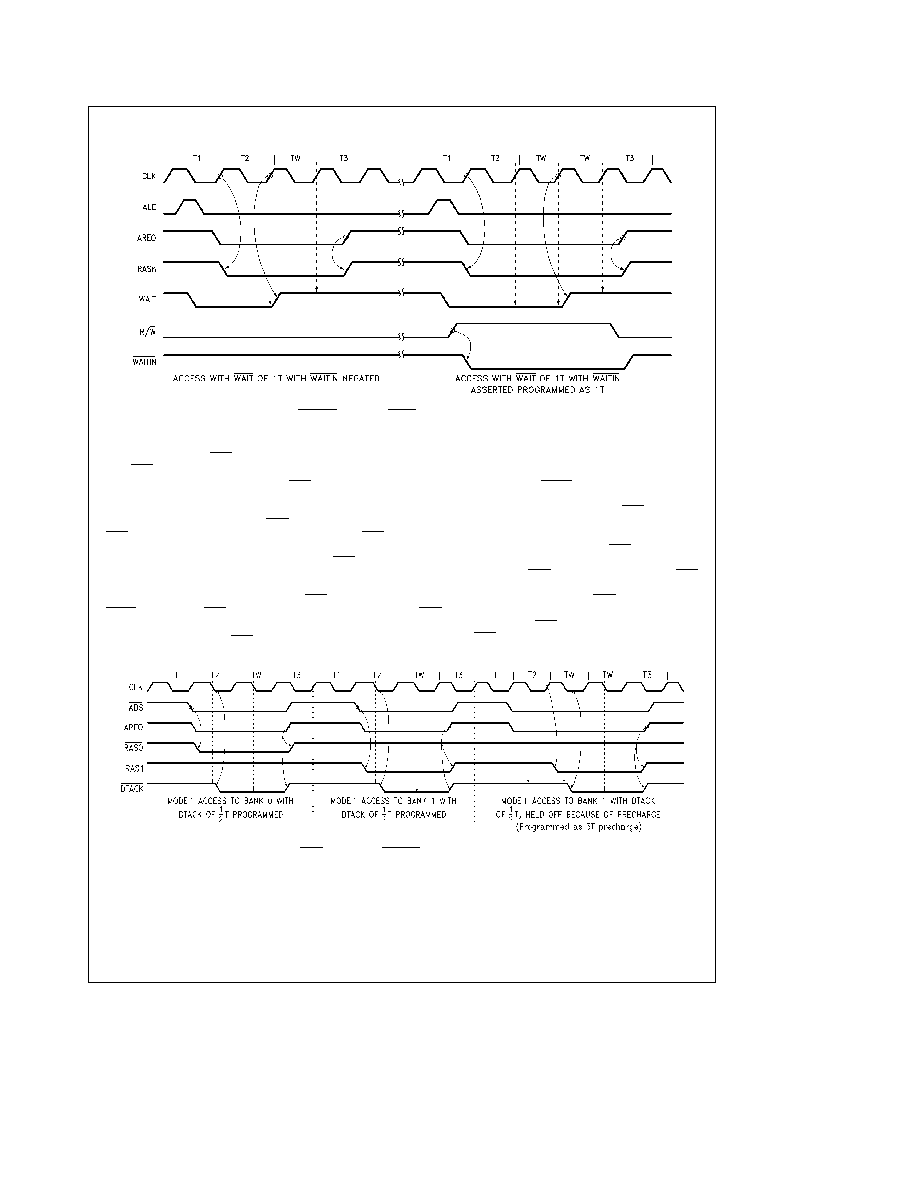
6 0 Port A Wait State Support
(Continued)
TL F 8588 � C2
FIGURE 24b WAITIN Example (WAIT is Sampled at the End of ``T2'')
6 4 GUARANTEEING RAS LOW TIME
AND RAS PRECHARGE TIME
The DP8420A 21A 22A will guarantee RAS precharge time
between accesses between refreshes and between ac-
cess and refreshes The programming bits R0 and R1 are
used to program combinations of RAS precharge time and
RAS low time referenced by positive edges of CLK RAS
low time is programmed for refreshes only During an ac-
cess the system designer guarantees the time RAS is as-
serted through the DP8420A 21A 22A wait logic Since in-
serting wait states into an access increases the length of
the CPU signals which are used to create ADS or ALE and
AREQ the time that RAS is asserted can be guaranteed
The
precharge
time
is
also
guaranteed
by
the
DP8420A 21A 22A Each RAS output has a separate posi-
tive edge of CLK counter AREQ is negated setup to a posi-
tive edge of CLK to terminate the access That positive
edge is 1T The next positive edge is 2T RAS will not be
asserted until the programmed number of positive edges of
CLK have passed as shown in
Figure 25 Once the pro-
grammed precharge time has been met RAS will be assert-
ed from the positive edge of CLK However since there is a
precharge counter per RAS an access using another RAS
will not be delayed Precharge time before a refresh is al-
ways referenced from the access RAS negating before
RAS0 for the refresh asserting After a refresh precharge
time is referenced from RAS3 negating for the refresh to
the access RAS asserting
TL F 8588 � C3
FIGURE 25 Guaranteeing RAS Precharge (DTACK is Sampled at the ``T2'' Falling Clock Edge)
30
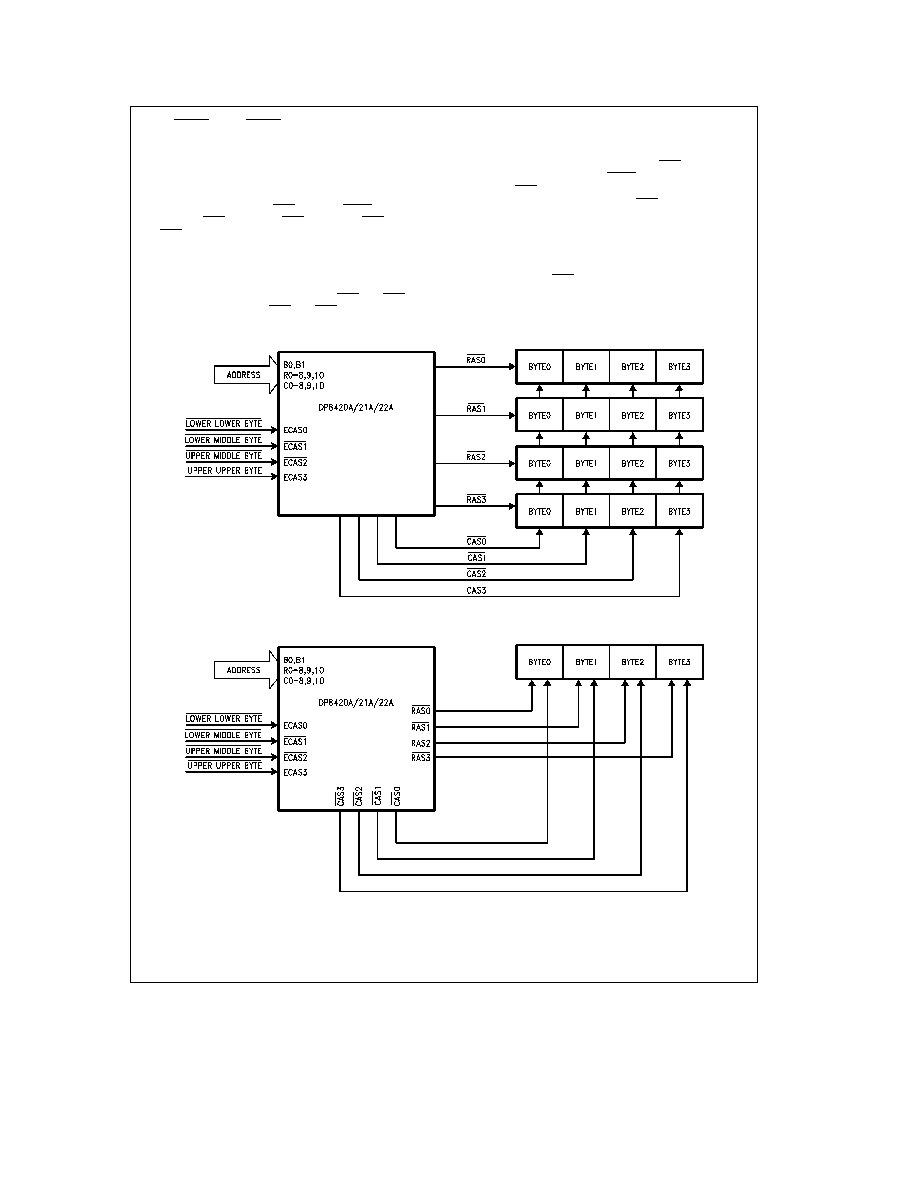
7 0 RAS and CAS Configuration Modes
The DP8420A 21A 22A allow the user to configure the
DRAM array to contain one two or four banks of DRAM
Depending on the functions used certain considerations
must be used when determining how to set up the DRAM
array Programming address bits C4 C5 and C6 along with
bank selects B0 � 1 and CAS enables ECAS0 � 3 deter-
mine which RAS or group of RASs and which CAS or group
of CASs will be asserted during an access Different memo-
ry schemes are described The DP8420A 21A 22A is spec-
ified driving a heavy load of 72 DRAMs representing four
banks of DRAM with 16-bit words and 2 parity bits The
DP8420A 21A 22A can drive more than 72 DRAMs but the
AC timing must be increased Since the RAS and CAS out-
puts are configurable all RAS and CAS outputs should be
used for the maximum amount of drive
7 1 BYTE WRITING
By selecting a configuration in which all CAS outputs are
selected during an access the ECAS inputs enable a single
or group of CAS outputs to select a byte (or bytes) in a word
size of up to 32 bits In this case the RAS outputs are used
to select which of up to 4 banks is to be used as shown in
Figures 26a and 26b In systems with a word size of 16 bits
the byte enables can be gated with a high order address bit
to produce four byte enables which gives an equivalent to 8
banks of 16-bit words as shown in
Figure 26d If less memo-
ry is required each CAS should be used to drive each nibble
in the 16-bit word as shown in
Figure 26c
TL F 8588 � C9
FIGURE 26a DRAM Array Setup for 32-Bit System (C6 C5 C4
e
1 1 0 during Programming)
TL F 8588 � D0
FIGURE 26b DRAM Array Setup for 32-Bit 1 Bank System (C6 C5 C4
e
0 0 0 Allowing Error Scrubbing
or C6 C5 C4
e
0 1 1 No Error Scrubbing during Programming)
31

7 0 RAS and CAS Configuration Modes
(Continued)
TL F 8588 � D1
FIGURE 26c DRAM Array Setup for 16-Bit System (C6 C5 C4
e
1 1 0 during Programming)
TL F 8588 � D2
FIGURE 26d 8 Bank DRAM Array for 16-Bit System (C6 C5 C4
e
1 1 0 during Programming)
32

7 0 RAS and CAS Configuration Modes
(Continued)
7 2 MEMORY INTERLEAVING
Memory interleaving allows the cycle time of DRAMs to be
reduced by having sequential accesses to different memory
banks Since the DP8420A 21A 22A have separate pre-
charge counters per bank sequential accesses will not be
delayed if the accessed banks use different RAS outputs
To ensure different RAS outputs will be used a mode is
selected where either one or two RAS outputs will be as-
serted during an access The bank select or selects B0 and
B1 are then tied to the least significant address bits caus-
ing a different group of RASs to assert during each sequen-
tial access as shown in
Figure 27 In this figure there should
be at least one clock period of all RAS's negated between
different RAS's being asserted to avoid the condition of a
CAS before RAS refresh cycle
7 3 ADDRESS PIPELINING
Address pipelining allows several access RASs to be as-
serted at once Because RASs can overlap each bank re-
quires either a mode where one RAS and one CAS are used
per bank as shown in
Figure 28a or where two RASs and
two CASs are used per bank as shown in
Figure 28b Byte
writing can be accomplished in a 16-bit word system if two
RASs and two CASs are used per bank In other systems
WEs (or external gating on the CAS outputs) must be used
to perform byte writing If WEs are used separate data in
and data out buffers must be used If the array is not layed
out this way a CAS to a bank can be low before RAS which
will cause a refresh of the DRAM not an access To take
full advantage of address pipelining memory interleaving is
used To memory interleave the least significant address
bits should be tied to the bank select inputs to ensure that
all ``back to back'' sequential accesses are not delayed
since different memory banks are accessed
TL F 8588 � D3
FIGURE 27 Memory Interleaving (C6 C5 C4
e
1 1 0 during Programming)
33

7 0 RAS and CAS Configuration Modes
(Continued)
TL F 8588 � D4
FIGURE 28a DRAM Array Setup for 4 Banks Using Address Pipelining (C6 C5 C4
e
1 1 1
or C6 C5 C4
e
0 1 0 (Also Allowing Error Scrubbing) during Programming)
TL F 8588 � D5
FIGURE 28b DRAM Array Setup for Address Pipelining with 2 Banks (C6 C5 C4
e
1 0 1
or C6 C5 C4
e
0 0 1 (Also Allowing Error Scrubbing) during Programming)
7 4 ERROR SCRUBBING
In error scrubbing during refresh the user selects one two
or four RAS and CAS outputs per bank When performing
error detection and correction memory is always accessed
as words Since the CAS signals are not used to select
individual bytes the ECAS inputs can be tied low as shown
in
Figures 29a and 29b
TL F 8588 � D6
FIGURE 29a DRAM Array Setup for 4 Banks Using Error Scrubbing (C6 C5 C4
e
0 1 0 during Programming)
TL F 8588 � D7
FIGURE 29b DRAM Array Setup for Error Scrubbing with 2 Banks (C6 C5 C4
e
0 0 1 during Programming)
34
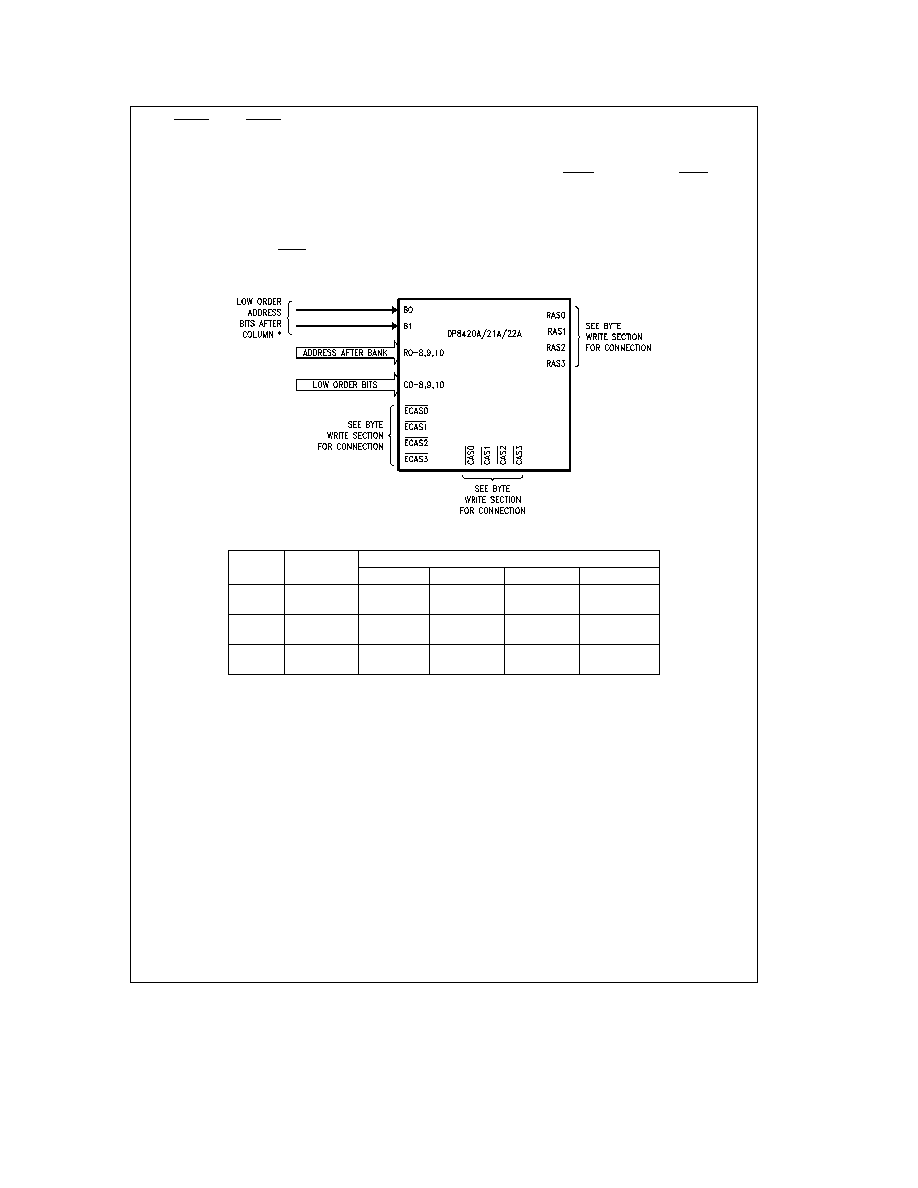
7 0 RAS and CAS Configuration Modes
(Continued)
7 5 PAGE BURST MODE
In a static column page or burst mode system the least
significant bits must be tied to the column address in order
to ensure that the page burst accesses are to sequential
memory addresses as shown in
Figure 30
In a nibble
mode system the least significant bits must be tied to the
highest column and row address bits in order to ensure that
sequential address bits are the ``nibble'' bits for nibble mode
accesses
(Figure 30) The ECAS inputs may then be tog-
gled with the DP8420A 21A 22A's address latches in fall-
through mode while AREQ is asserted The ECAS inputs
can also be used to select individual bytes When using nib-
ble mode DRAMS the third and fourth address bits can be
tied to the bank select inputs to perform memory interleav-
ing In page or static column modes the two address bits
after the page size can be tied to the bank select inputs to
select a new bank if the page size is exceeded
TL F 8588 � D8
See table below for row column
bank address bit map A0 A1 are used for byte addressing in this example
Addresses
Nibble Mode
Page Mode Static Column Mode Page Size
256 Bits Page
512 Bits Page
1024 Bits Page
2048 Bits Page
Column
C9 R9 e A2 A3
C0 � 7 e A2 � 9
C0 � 8 e A2 � 10
C0 � 9 e A2 � 11
C0 � 10 e A2 � 12
Address
C0 � 8 e X
C8 � 10 e X
C9 10 e X
C10 e X
Row
X
X
X
X
X
Address
B0
A4
A10
A11
A12
A13
B1
A5
A11
A12
A13
A14
Assume that the least significant address bits are used for byte addressing Given a 32-bit system A0 A1 would be
used for byte addressing
X
e
DON'T CARE the user can do as he pleases
Nibble mode values for R and C assume a system using 1 Mbit DRAMs
FIGURE 30 Page Static Column Nibble Mode System
35

8 0 Test Mode
Staggered refresh in combination with the error scrubbing
mode places the DP8420A 21A 22A in test mode In this
mode the 24-bit refresh counter is divided into a 13-bit and
11-bit counter During refreshes both counters are incre-
mented to reduce test time
9 0 DRAM Critical Timing
Parameters
The two critical timing parameters shown in
Figure 31 that
must be met when controlling the access timing to a DRAM
are the row address hold time t
RAH
and the column ad-
dress setup time t
ASC
Since the DP8420A 21A 22A con-
tain a precise internal delay line the values of these param-
eters can be selected at programming time These values
will also increase and decrease if DELCLK varies from
2 MHz
9 1 PROGRAMMABLE VALUES OF t
RAH
AND t
ASC
The DP8420A 21A 22A allow the values of t
RAH
and t
ASC
to be selected at programming time For each parameter
two choices can be selected t
RAH
the row address hold
time is measured from RAS asserted to the row address
starting to change to the column address The two choices
for t
RAH
are 15 ns and 25 ns programmable through ad-
dress bit C8
t
ASC
the column address setup time is measured from the
column address valid to CAS asserted The two choices for
t
ASC
are 0 ns and 10 ns programmable through address bit
C7
9 2 CALCULATION OF t
RAH
AND t
ASC
There are two clock inputs to the DP8420A 21A 22A
These two clocks DELCLK and CLK can either be tied to-
gether to the same clock or be tied to different clocks run-
ning asynchronously at different frequencies
The clock input DELCLK controls the internal delay line
and refresh request clock DELCLK should be a multiple of
2 MHz If DELCLK is not a multiple of 2 MHz t
RAH
and t
ASC
will change The new values of t
RAH
and t
ASC
can be calcu-
lated by the following formulas
If t
RAH
was programmed to equal 15 ns then t
RAH
e
30 (((DELCLK Divisor)
2 MHz (DELCLK Frequency))
b
1)
a
15 ns
If t
RAH
was programmed to equal 25 ns then t
RAH
e
30 (((DELCLK Divisor)
2 MHz (DELCLK Frequency))
b
1)
a
25 ns
If t
ASC
was programmed to equal 0 ns then t
ASC
e
15
((DELCLK Divisor) 2 MHz (DELCLK Frequency))
b
15 ns
If t
ASC
was programmed to equal 10 ns then t
ASC
e
25
((DELCLK Divisor) 2 MHz (DELCLK Frequency))
b
15 ns
Since the values of t
RAH
and t
ASC
are increased or de-
creased the time to CAS asserted will also increase or de-
crease These parameters can be adjusted by the following
formula
Delay to CAS
e
Actual Spec
a
Actual t
RAH
b
Programmed t
RAH
a
Actual t
ASC
b
Programmed t
ASC
TL F 8588 � E3
FIGURE 31 t
RAH
and t
ASC
36
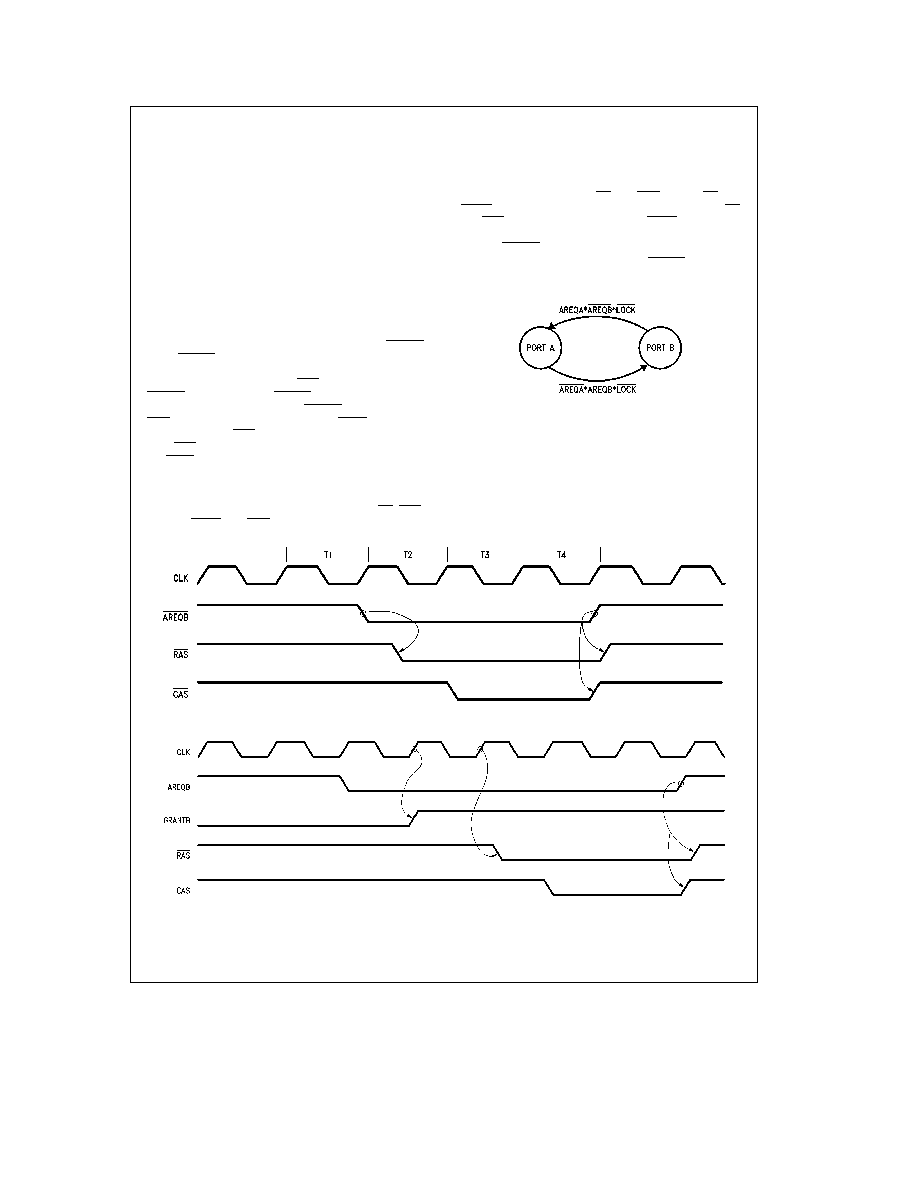
10 0 Dual Accessing (DP8422A)
The DP8422A has all the functions previously described In
addition to those features the DP8422A also has the capa-
bilities to arbitrate among refresh Port A and a second port
Port B This allows two CPUs to access a common DRAM
array DRAM refresh has the highest priority followed by the
currently granted port The ungranted port has the lowest
priority The last granted port will continue to stay granted
even after the access has terminated until an access re-
quest is received from the ungranted port (see
Figure 32a )
The dual access configuration assumes that both Port A
and Port B are synchronous to the system clock If they are
not synchronous to the system clock they should be exter-
nally synchronized (Ex By running the access requests
through several Flip-Flops see
Figure 34a )
10 1 PORT B ACCESS MODE
Port B accesses are initiated from a single input AREQB
When AREQB is asserted an access request is generated
If GRANTB is asserted and a refresh is not taking place or
precharge time is not required RAS will be asserted when
AREQB is asserted Once AREQB is asserted it must stay
asserted until the access is over AREQB negated negates
RAS as shown in
Figure 32b Note that if ECAS0
e
1 during
programming the CAS outputs may be held asserted (be-
yond RASn negating) by continuing to assert the appropri-
ate ECASn inputs (the same as Port A accesses) If Port B
is not granted the access will begin on the first or second
positive edge of CLK after GRANTB is asserted (See R0
R1 programming bit definitions) as shown in
Figure 32c as-
suming that Port A is not accessing the DRAM (CS ADS
ALE and AREQ) and RAS precharge for the particular bank
has completed It is important to note that for GRANTB to
transition to Port B Port A must not be requesting an ac-
cess at a rising clock edge (or locked) and Port B must be
requesting an access at that rising clock edge Port A can
request an access through CS and ADS ALE or CS and
AREQ Therefore during an interleaved access where CS
and ADS ALE become asserted before AREQ from the pre-
vious access is negated Port A will retain GRANTB
e
0
whether AREQB is asserted or not
Since there is no chip select for Port B AREQB must incor-
porate this signal This mode of accessing is similar to Mode
1 accessing for Port A
TL F 8588 � F9
Explanation of Terms
AREQA
e
Chip Selected access request from Port A
AREQB
e
Chip Selected access request from Port B
LOCK
e
Externally controlled LOCKing of the Port
that is currently GRANTed
FIGURE 32a DP8422A Port A Port B Arbitration
State Diagram This arbitration may take place
during the ``ACCESS'' or ``REFRESH''
state (see
Figure 13a )
TL F 8588 � E4
FIGURE 32b Access Request for Port B
TL F 8588 � E5
FIGURE 32c Delayed Port B Access
37

10 0 Dual Accessing (DP8422A)
(Continued)
10 2 PORT B WAIT STATE SUPPORT
Advanced transfer acknowledge for Port B ATACKB is
used for wait state support for Port B This output will be
asserted when RAS for the Port B access is asserted as
shown in
Figures 33a and 33b Once asserted this output
will stay asserted until AREQB is negated With external
logic ATACKB can be made to interface to any CPU's wait
input as shown in
Figure 33c
10 3 COMMON PORT A AND PORT B DUAL PORT
FUNCTIONS
An input LOCK and an output GRANTB add additional
functionality to the dual port arbitration logic LOCK allows
Port A or Port B to lock out the other port from the DRAM
When a Port is locked out of the DRAM wait states will be
inserted into its access cycle until it is allowed to access
memory GRANTB is used to multiplex the input control sig-
nals and addresses to the DP8422A
10 3 1 GRANTB Output
The output GRANTB determines which port has current ac-
cess to the DRAM array GRANTB asserted signifies Port B
has access GRANTB negated signifies Port A has access
to the DRAM array
TL F 8588 � E6
FIGURE 33a Non-Delayed Port B Access
TL F 8588 � E7
FIGURE 33b Delayed Port B Access
TL F 8588 � 30
A Extend ATACK to
T (
Clock) after RAS goes low
TL F 8588 � 31
B Extend ATACK to 1T after RAS goes low
TL F 8588 � 32
C Synchronize ATACKB to CPU B Clock This is useful if CPU B runs asynchronous to the DP8422
FIGURE 33c Modifying Wait Logic for Port B
38
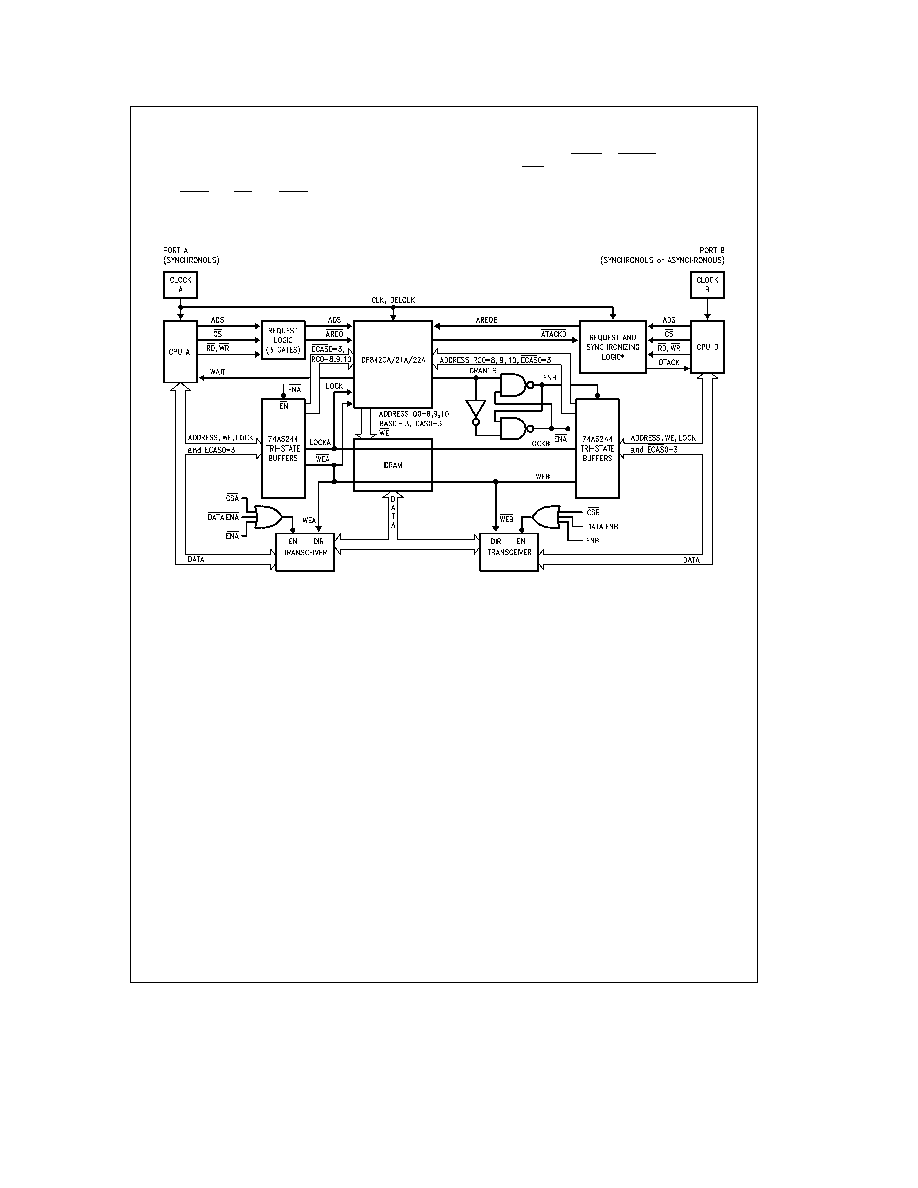
10 0 Dual Accessing (DP8422A)
(Continued)
Since the DP8422A has only one set of address inputs the
signal is used with the addition of buffers to allow the cur-
rently granted port's addresses to reach the DP8422A The
signals which need to be bufferred are R0 � 10 C0 � 10
B0 � 1 ECAS0 � 3 WE and LOCK All other inputs are not
common and do not have to be buffered as shown in
Figure
34a If a Port which is not currently granted tries to access
the DRAM array the GRANTB output will transition from a
rising clock edge from AREQ or AREQB negating and will
precede the RAS for the access by one or two clock peri-
ods GRANTB will then stay in this state until the other port
requests an access and the currently granted port is not
accessing the DRAM as shown in
Figure 34b
TL F 8588 � 55
If Port B is synchronous the Request Synchronizing logic will not be required
FIGURE 34a Dual Accessing with the DP8422A (System Block Diagram)
39

10 0 Dual Accessing (DP8422A)
(Continued)
TL F 8588 � 29
FIGURE 34b Wait States during a Port B Access
10 3 2 LOCK Input
When the LOCK input is asserted the currently granted port
can ``lock out'' the other port through the insertion of wait
states to that port's access cycle LOCK does not disable
refreshes it only keeps GRANTB in the same state even if
the other port requests an access as shown in
Figure 35a
LOCK can be used by either port
TL F 8588 � E8
FIGURE 35 LOCK Function
40
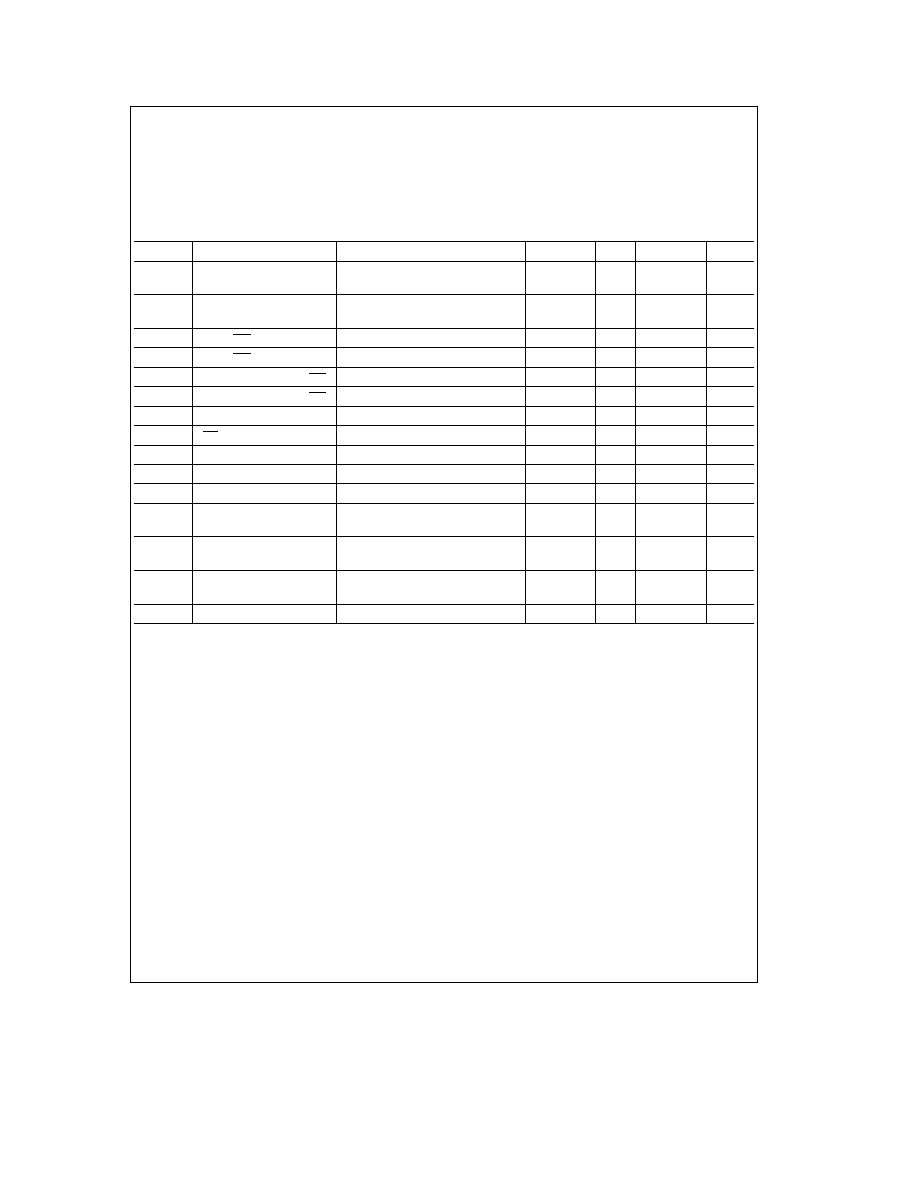
11 0 Absolute Maximum Ratings
(Note 1)
If Military Aerospace specified devices are required
please contact the National Semiconductor Sales
Office Distributors for availability and specifications
Temperature under Bias
0 C to
a
70 C
Storage Temperature
b
65 C to
a
150 C
All Input or Output Voltage
with Respect to GND
b
0 5V to
a
7V
Power Dissipation
20 MHz
0 5W
ESD Rating to be determined
12 0 DC Electrical Characteristics
T
A
e
0 C to
a
70 C V
CC
e
5V
g
10% GND
e
0V
Symbol
Parameter
Conditions
Min
Typ
Max
Units
V
IH
Logical 1 Input Voltage
Tested with a Limited
2 0
V
CC
a
0 5
V
Functional Pattern
V
IL
Logical 0 Input Voltage
Tested with a Limited
b
0 5
0 8
V
Functional Pattern
V
OH1
Q and WE Outputs
I
OH
e b
10 mA
V
CC
b
1 0
V
V
OL1
Q and WE Outputs
I
OL
e
10 mA
0 5
V
V
OH2
All Outputs except Qs WE
I
OH
e b
3 mA
V
CC
b
1 0
V
V
OL2
All Outputs except Qs WE
I
OL
e
3 mA
0 5
V
I
IN
Input Leakage Current
V
IN
e
V
CC
or GND
b
10
10
m
A
I
IL ML
ML Input Current (Low)
V
IN
e
GND
200
m
A
I
CC1
Standby Current
CLK at 8 MHz (V
IN
e
V
CC
or GND)
6
15
mA
I
CC1
Standby Current
CLK at 20 MHz (V
IN
e
V
CC
or GND)
8
17
mA
I
CC1
Standby Current
CLK at 25 MHz (V
IN
e
V
CC
or GND)
10
20
mA
I
CC2
Supply Current
CLK at 8 MHz (Inputs Active)
20
40
mA
(I
LOAD
e
0) (V
IN
e
V
CC
or GND)
I
CC2
Supply Current
CLK at 20 MHz (Inputs Active)
40
75
mA
(I
LOAD
e
0) (V
IN
e
V
CC
or GND)
I
CC2
Supply Current
CLK at 25 MHz (Inputs Active)
50
95
mA
(I
LOAD
e
0) (V
IN
e
V
CC
or GND)
C
IN
Input Capacitance
f
IN
at 1 MHz
10
pF
C
IN
is not 100% tested
41

13 0 AC Timing Parameters
Two speed selections are given the DP8420A 21A 22A-20
and the DP8420A 21A 22A-25 The differences between
the two parts are the maximum operating frequencies of the
input CLKs and the maximum delay specifications Low fre-
quency applications may use the ``
b
25'' part to gain im-
proved timing
The AC timing parameters are grouped into sectional num-
bers as shown below These numbers also refer to the tim-
ing diagrams
1 � 36
Common parameters to all modes of operation
50 � 56
Difference parameters used to calculate
RAS low time
RAS precharge time
CAS high time and
CAS low time
100 � 121 Common dual access parameters used for Port
B accesses and inputs and outputs used only in
dual accessing
200 � 212 Refresh parameters
300 � 315 Mode 0 access parameters used in both single
and dual access applications
400 � 416 Mode 1 access parameters used in both single
and dual access applications
450 � 455 Special Mode 1 access parameters which super-
sede the 400 � 416 parameters when dual ac-
cessing
500 � 506 Programming parameters
Unless otherwise stated V
CC
e
5 0V
g
10% 0
k
T
A
k
70 C the output load capacitance is typical for 4 banks of
18 DRAMs per bank including trace capacitance (see Note
2)
Two different loads are specified
C
L
e
50 pF loads on all outputs except
C
L
e
150 pF loads on Q0 � 8 9 10 and WE or
C
H
e
50 pF loads on all outputs except
C
H
e
125 pF loads on RAS0 � 3 and CAS0 � 3 and
C
H
e
380 pF loads on Q0 � 8 9 10 and WE
Note 1
``Absolute Maximum Ratings'' are the values beyond which the safety of the device cannot be guaranteed They are not meant to imply that the device
should be operated at these limits The table of ``Electrical Characteristics'' provides conditions for actual device operation
Note 2
Input pulse 0V to 3V tR
e
tF
e
2 5 ns Input reference point on AC measurements is 1 5V Output reference points are 2 4V for High and 0 8V for Low
Note 3
AC Production testing is done at 50 pF
TL F 8588 � E9
FIGURE 36 Clock DELCLK Timing
42
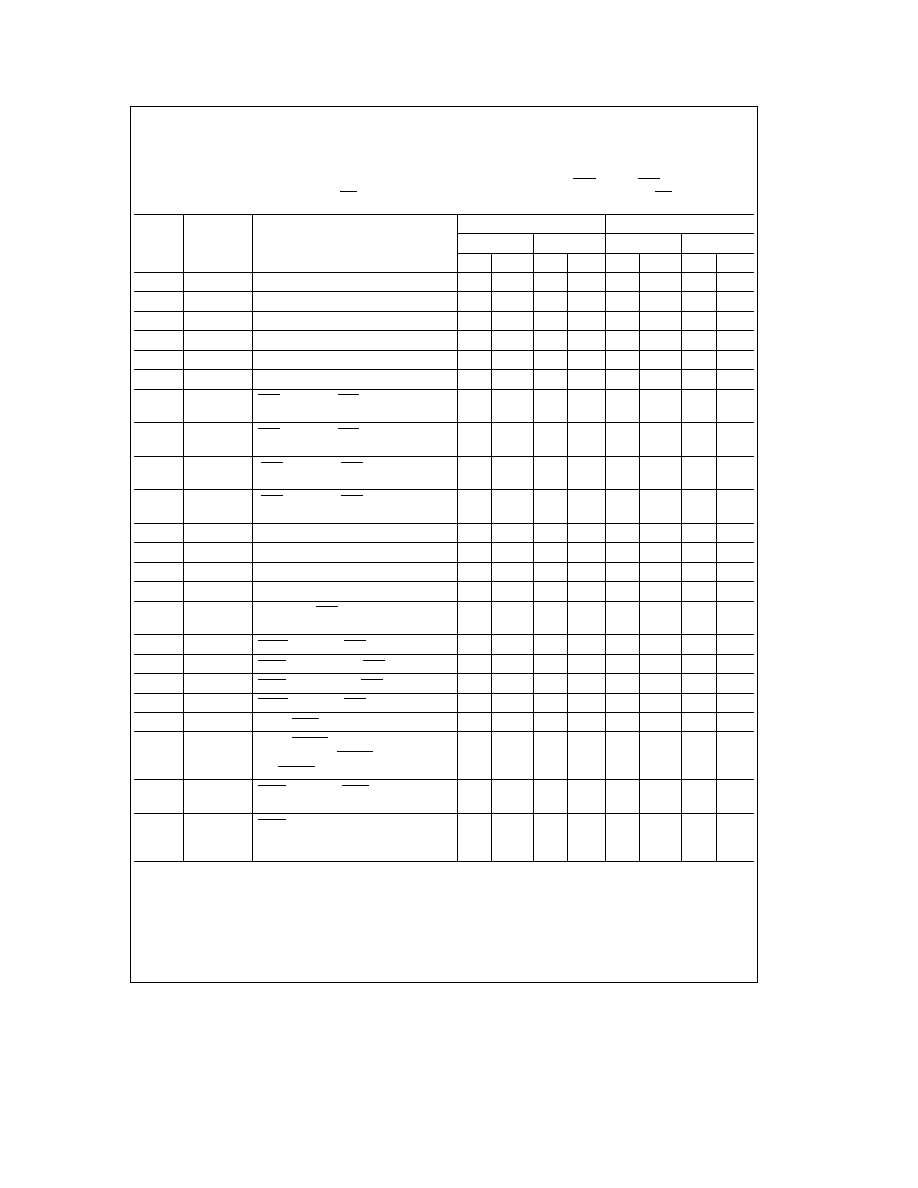
13 0 AC Timing Parameters
(Continued)
Unless otherwise stated V
CC
e
5 0V
g
10% 0 C
k
T
A
k
70 C the output load capacitance is typical for 4 banks of 18 DRAMs
per bank including trace capacitance (Note 2)
Two different loads are specified
C
L
e
50 pF loads on all outputs except
C
L
e
150 pF loads on Q0 � 8 9 10 and WE or
C
H
e
50 pF loads on all outputs except
C
H
e
125 pF loads on RAS0 � 3 and CAS0 � 3 and
C
H
e
380 pF loads on Q0 � 8 9 10 and WE
Common Parameter
8420A 21A 22A-20
8420A 21A 22A-25
Number
Symbol
Description
C
L
C
H
C
L
C
H
Min
Max
Min
Max
Min
Max
Min
Max
1
f
CLK
CLK Frequency
0
20
0
20
0
25
0
25
2
tCLKP
CLK Period
50
50
40
40
3 4
tCLKPW
CLK Pulse Width
15
15
12
12
5
fDCLK
DELCLK Frequency
5
20
5
20
5
20
5
20
6
tDCLKP
DELCLK Period
50
200
50
200
50
200
50
200
7 8
tDCLKPW
DELCLK Pulse Width
15
15
12
12
9a
tPRASCAS0
RAS Asserted to CAS Asserted
30
30
30
30
(tRAH
e
15 ns tASC
e
0 ns)
9b
tPRASCAS1
RAS Asserted to CAS Asserted
40
40
40
40
(tRAH
e
15 ns tASC
e
10 ns)
9c
tPRASCAS2
(RAS Asserted to CAS Asserted
40
40
40
40
(tRAH
e
25 ns tASC
e
0 ns)
9d
tPRASCAS3
(RAS Asserted to CAS Asserted
50
50
50
50
(tRAH
e
25 ns tASC
e
10 ns)
10a
tRAH
Row Address Hold Time (tRAH
e
15)
15
15
15
15
10b
tRAH
Row Address Hold Time (tRAH
e
25)
25
25
25
25
11a
tASC
Column Address Setup Time (tASC
e
0)
0
0
0
0
11b
tASC
Column Address Setup Time (tASC
e
10)
10
10
10
10
12
tPCKRAS
CLK High to RAS Asserted
27
32
22
26
following Precharge
13
tPARQRAS
AREQ Negated to RAS Negated
38
43
31
35
14
tPENCL
ECAS0 � 3 Asserted to CAS Asserted
23
31
20
27
15
tPENCH
ECAS0 � 3 Negated to CAS Negated
25
33
20
27
16
tPARQCAS
AREQ Negated to CAS Negated
60
68
47
54
17
tPCLKWH
CLK to WAIT Negated
39
39
31
31
18
tPCLKDL0
CLK to DTACK Asserted
(Programmed as DTACK of 1 2 1 1
33
33
28
28
or if WAITIN is Asserted)
19
tPEWL
ECAS Negated to WAIT Asserted
44
44
36
36
during a Burst Access
20
tSECK
ECAS Asserted Setup to CLK High to
Recognize the Rising Edge of CLK
24
24
19
19
during a Burst Access
43

13 0 AC Timing Parameters
(Continued)
Unless otherwise stated V
CC
e
5 0V
g
10% 0 C
k
T
A
k
70 C the output load capacitance is typical for 4 banks of 18 DRAMs
per bank including trace capacitance (Note 2)
Two different loads are specified
C
L
e
50 pF loads on all outputs except
C
L
e
150 pF loads on Q0 � 8 9 10 and WE or
C
H
e
50 pF loads on all outputs except
C
H
e
125 pF loads on RAS0 � 3 and CAS0 � 3 and
C
H
e
380 pF loads on Q0 � 8 9 10 and WE
Common Parameter
8420A 21A 22A-20
8420A 21A 22A-25
Number
Symbol
Description
C
L
C
H
C
L
C
H
Min
Max
Min
Max
Min
Max
Min
Max
21
tPEDL
ECAS Asserted to DTACK
Asserted during a Burst Access
48
48
38
38
(Programmed as DTACK0)
22
tPEDH
ECAS Negated to DTACK
49
49
38
38
Negated during a Burst Access
23
tSWCK
WAITIN Asserted Setup to CLK
5
5
5
5
24
tPWINWEH
WIN Asserted to WE Asserted
34
44
27
37
25
tPWINWEL
WIN Negated to WE Negated
34
44
27
37
26
tPAQ
Row Column Address Valid to
29
38
26
35
Q0 � 8 9 10 Valid
27
tPCINCQ
COLINC Asserted to Q0 � 8 9 10
34
43
30
39
Incremented
28
tSCINEN
COLINC Asserted Setup to ECAS
18
19
17
19
Asserted to Ensure tASC
e
0 ns
29a
tSARQCK1
AREQ AREQB Negated Setup to CLK
46
46
37
37
High with 1 Period of Precharge
29b
tSARQCK2
AREQ AREQB Negated Setup to CLK High
19
19
15
15
with
l
1 Period of Precharge Programmed
30
tPAREQDH
AREQ Negated to DTACK Negated
34
34
27
27
31
tPCKCAS
CLK High to CAS Asserted
31
39
25
32
when Delayed by WIN
32
tSCADEN
Column Address Setup to ECAS
14
15
14
16
Asserted to Guarantee tASC
e
0
33
tWCINC
COLINC Pulse Width
20
20
20
20
34a
tPCKCL0
CLK High to CAS Asserted following
81
89
72
79
Precharge (tRAH
e
15 ns tASC
e
0 ns)
34b
tPCKCL1
CLK High to CAS Asserted following
91
99
82
89
Precharge (tRAH
e
15 ns tASC
e
10 ns)
34c
tPCKCL2
CLK High to CAS Asserted following
91
99
82
89
Precharge (tRAH
e
25 ns tASC
e
0 ns)
34d
tPCKCL3
CLK High to CAS Asserted following
101
109
92
99
Precharge (tRAH
e
25 ns tASC
e
10 ns)
35
tCAH
Column Address Hold Time
32
32
32
32
(Interleave Mode Only)
36
tPCQR
CAS Asserted to Row Address
90
90
90
90
Valid (Interleave Mode Only)
44
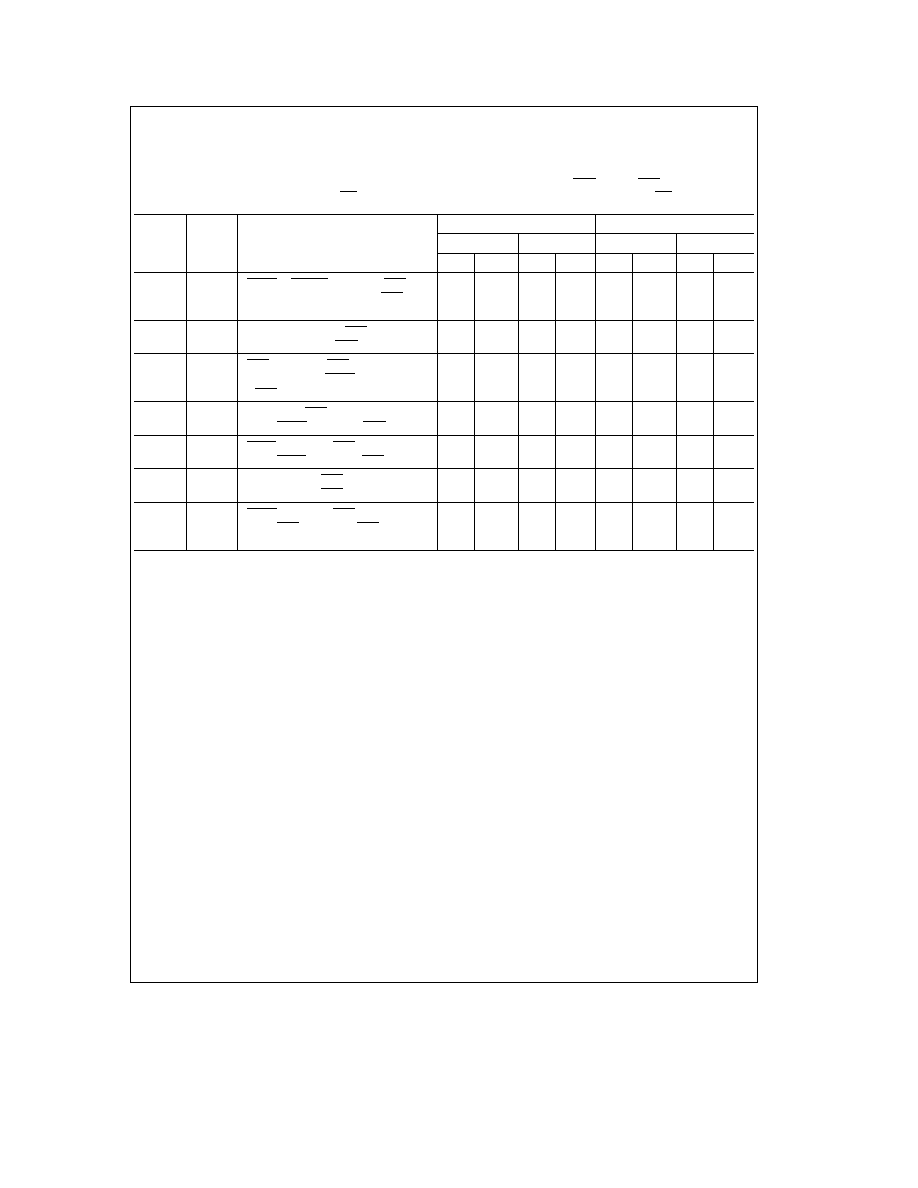
13 0 AC Timing Parameters
(Continued)
Unless otherwise stated V
CC
e
5 0V
g
10% 0 C
k
T
A
k
70 C the output load capacitance is typical for 4 banks of 18 DRAMs
per bank including trace capacitance (Note 2)
Two different loads are specified
C
L
e
50 pF loads on all outputs except
C
L
e
150 pF loads on Q0 � 8 9 10 and WE or
C
H
e
50 pF loads on all outputs except
C
H
e
125 pF loads on RAS0 � 3 and CAS0 � 3 and
C
H
e
380 pF loads on Q0 � 8 9 10 and WE
Difference
8420A 21A 22A-20
8420A 21A 22A-25
Number
Symbol
Parameter Description
C
L
C
H
C
L
C
H
Min
Max
Min
Max
Min
Max
Min
Max
50
tD1
(AREQ or AREQB Negated to RAS
Negated) Minus (CLK High to RAS
16
16
14
14
Asserted)
51
tD2
(CLK High to Refresh RAS Negated)
13
13
11
11
Minus (CLK High to RAS Asserted)
52
tD3a
(ADS Asserted to RAS Asserted
(Mode 1)) Minus (AREQ Negated
4
4
4
4
to RAS Negated)
53
tD3b
(CLK High to RAS Asserted (Mode 0))
4
4
4
4
Minus (AREQ Negated to RAS Negated)
54
tD4
(ECAS Asserted to CAS Asserted)
b
7
7
b
7
7
b
7
7
b
7
7
Minus (ECAS Negated to CAS Negated)
55
tD5
(CLK to Refresh RAS Asserted) Minus
6
6
6
6
(CLK to Refresh RAS Negated)
56
tD6
(AREQ Negated to RAS Negated)
Minus (ADS Asserted to RAS
12
12
10
10
Asserted (Mode 1))
45
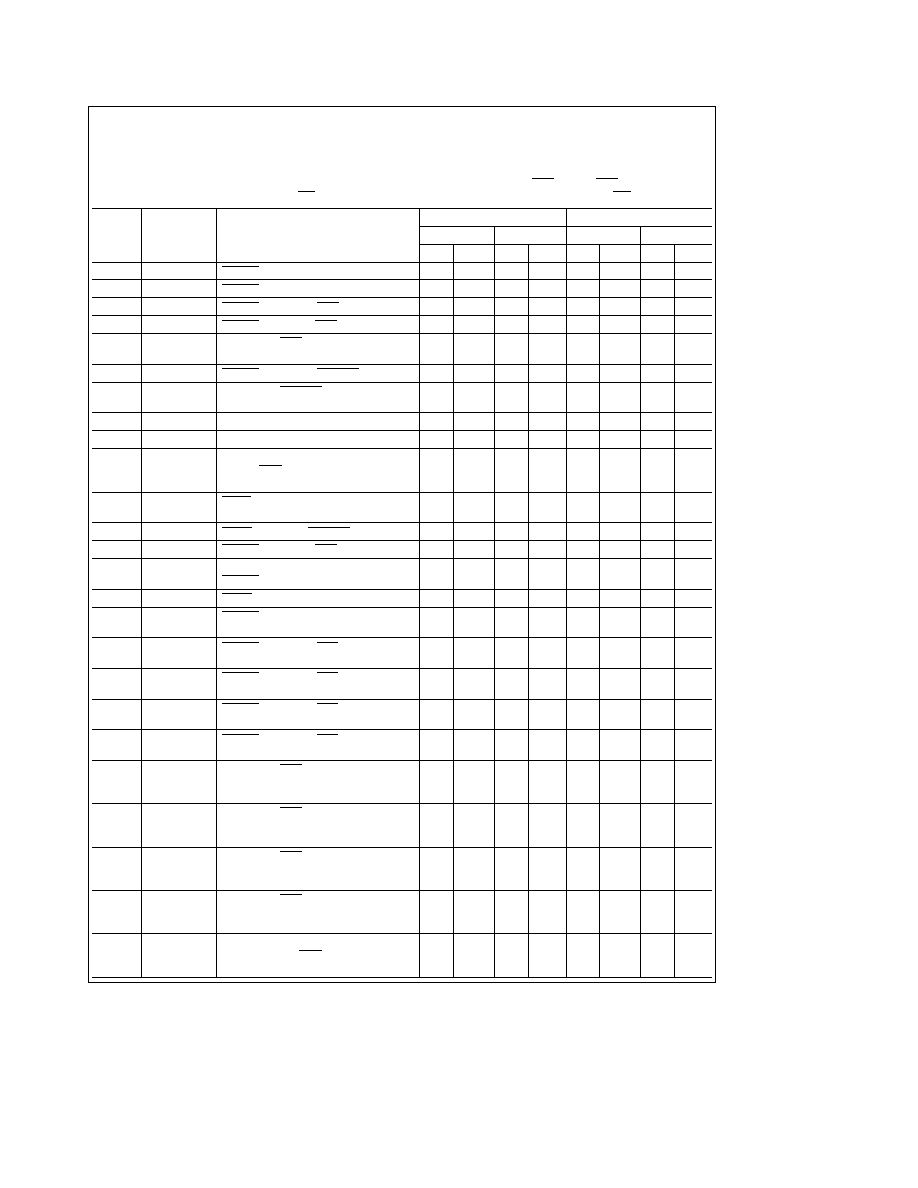
13 0 AC Timing Parameters
(Continued)
Unless otherwise stated V
CC
e
5 0V
g
10% 0 C
k
T
A
k
70 C the output load capacitance is typical for 4 banks of 18 DRAMs
per bank including trace capacitance (Note 2)
Two different loads are specified
C
L
e
50 pF loads on all outputs except
C
L
e
150 pF loads on Q0 � 8 9 10 and WE or
C
H
e
50 pF loads on all outputs except
C
H
e
125 pF loads on RAS0 � 3 and CAS0 � 3 and
C
H
e
380 pF loads on Q0 � 8 9 10 and WE
Common Dual Access
8420A 21A 22A-20
8420A 21A 22A-25
Number
Symbol
Parameter Description
C
L
C
H
C
L
C
H
Min
Max
Min
Max
Min
Max
Min
Max
100
tHCKARQB
AREQB Negated Held from CLK High
3
3
3
3
101
tSARQBCK
AREQB Asserted Setup to CLK High
8
8
7
7
102
tPAQBRASL
AREQB Asserted to RAS Asserted
43
48
37
41
103
tPAQBRASH
AREQB Negated to RAS Negated
41
46
32
36
105
tPCKRASG
CLK High to RAS Asserted for
55
60
44
48
Pending Port B Access
106
tPAQBATKBL
AREQB Asserted to ATACKB Asserted
57
57
45
45
107
tPCKATKB
CLK High to ATACKB Asserted
67
67
51
51
for Pending Access
108
tPCKGH
CLK High to GRANTB Asserted
40
40
32
32
109
tPCKGL
CLK High to GRANTB Negated
35
35
29
29
110
tSADDCKG
Row Address Setup to CLK High That
Asserts RAS following a GRANTB
11
15
11
16
Change to Ensure tASR
e
0 ns for Port B
111
tSLOCKCK
LOCK Asserted Setup to CLK Low
5
5
5
5
to Lock Current Port
112
tPAQATKBH
AREQ Negated to ATACKB Negated
26
26
21
21
113
tPAQBCASH
AREQB Negated to CAS Negated
59
67
47
54
114
tSADAQB
Address Valid Setup to
7
11
7
12
AREQB Asserted
116
tHCKARQG
AREQ Negated Held from CLK High
5
5
5
5
117
tWAQB
AREQB High Pulse Width
31
35
26
31
to Guarantee tASR
e
0 ns
118a
tPAQBCAS0
AREQB Asserted to CAS Asserted
103
111
87
94
(tRAH
e
15 ns tASC
e
0 ns)
118b
tPAQBCAS1
AREQB Asserted to CAS Asserted
113
121
97
104
(tRAH
e
15 ns tASC
e
10 ns)
118c
tPAQBCAS2
AREQB Asserted to CAS Asserted
113
121
97
104
(tRAH
e
25 ns tASC
e
0 ns)
118d
tPAQBCAS3
AREQB Asserted to CAS Asserted
123
131
107
114
(tRAH
e
25 ns tASC
e
10 ns)
120a
tPCKCASG0
CLK High to CAS Asserted
for Pending Port B Access
113
121
96
103
(tRAH
e
15 ns tASC
e
0 ns)
120b
tPCKCASG1
CLK High to CAS Asserted
for Pending Port B Access
123
131
106
113
(tRAH
e
15 ns tASC
e
10 ns)
120c
tPCKCASG2
CLK High to CAS Asserted
for Pending Port B Access
123
131
106
113
(tRAH
e
25 ns tASC
e
0 ns)
120d
tPCKCASG3
CLK High to CAS Asserted
for Pending Port B Access
133
141
116
123
(tRAH
e
25 ns tASC
e
10 ns)
121
tSBADDCKG
Bank Address Valid Setup to CLK
High That Starts RAS
10
10
10
10
for Pending Port B Access
46
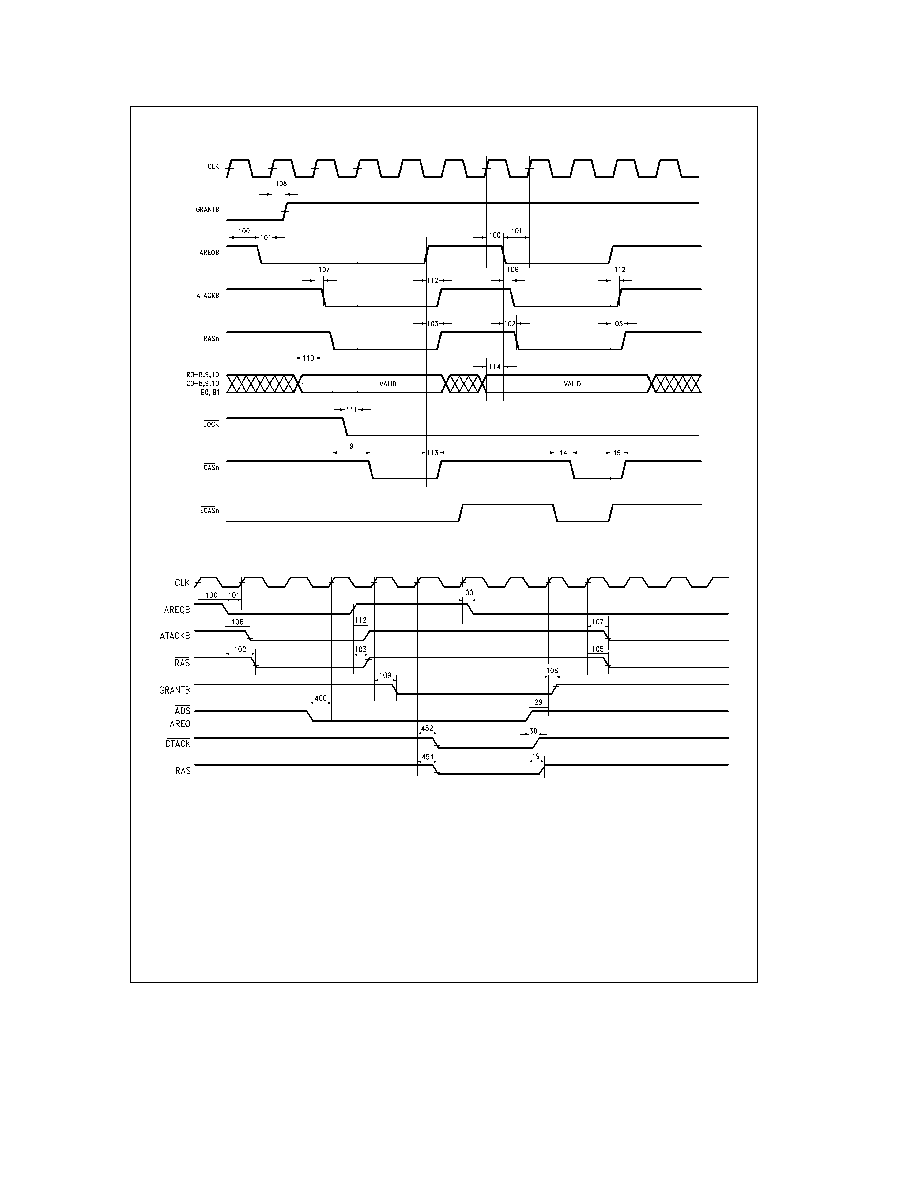
13 0 AC Timing Parameters
(Continued)
TL F 8588 � F0
FIGURE 37 100 Dual Access Port B
TL F 8588 � F1
FIGURE 38 100 Port A and Port B Dual Access
47
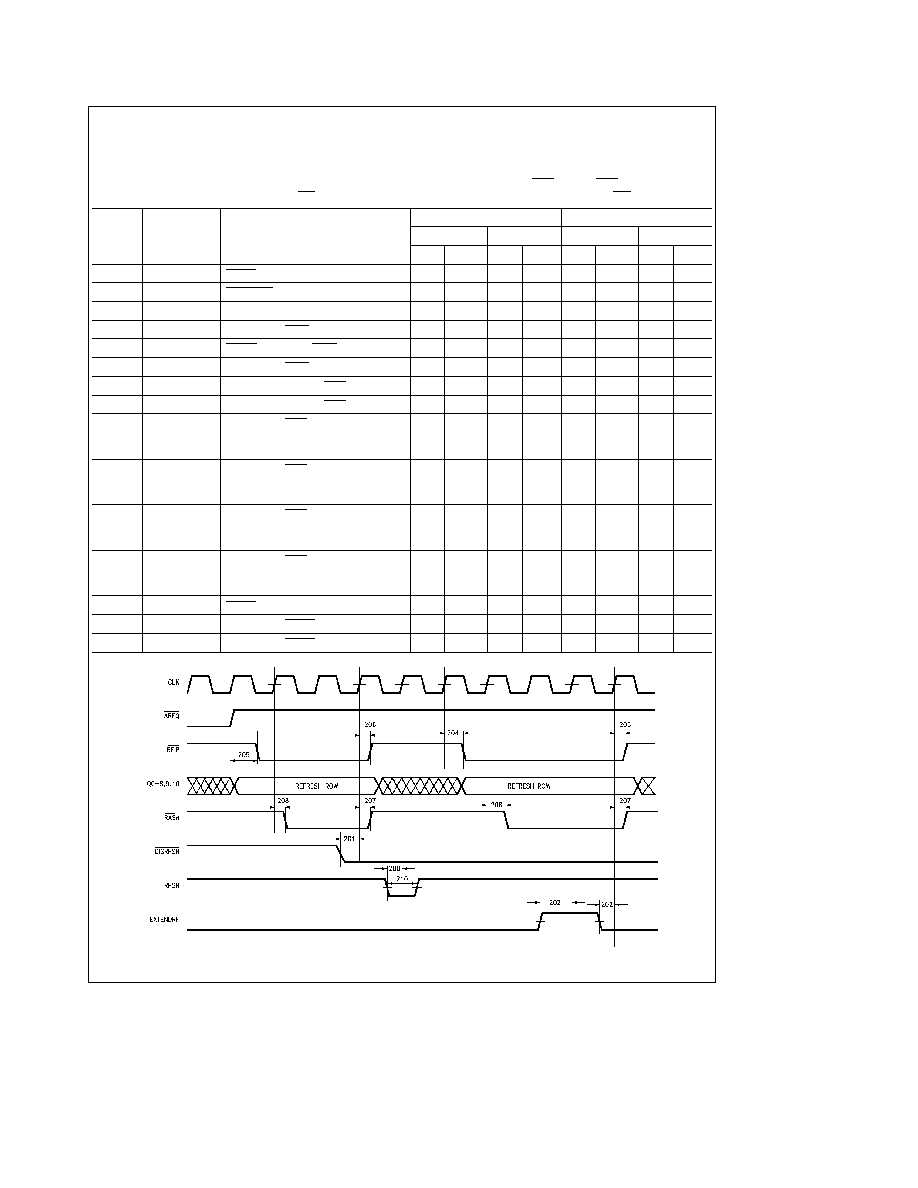
13 0 AC Timing Parameters
(Continued)
Unless otherwise stated V
CC
e
5 0V
g
10% 0 C
k
T
A
k
70 C the output load capacitance is typical for 4 banks of 18 DRAMs
per bank including trace capacitance (Note 2)
Two different loads are specified
C
L
e
50 pF loads on all outputs except
C
L
e
150 pF loads on Q0 � 8 9 10 and WE or
C
H
e
50 pF loads on all outputs except
C
H
e
125 pF loads on RAS0 � 3 and CAS0 � 3 and
C
H
e
380 pF loads on Q0 � 8 9 10 and WE
Refresh Parameter
8420A 21A 22A-20
8420A 21A 22A-25
Number
Symbol
Description
C
L
C
H
C
L
C
H
Min
Max
Min
Max
Min
Max
Min
Max
200
tSRFCK
RFSH Asserted Setup to CLK High
27
27
22
22
201
tSDRFCK
DISRFSH Asserted Setup to CLK High
28
28
22
22
202
tSXRFCK
EXTENDRF Setup to CLK High
15
15
12
12
204
tPCKRFL
CLK High to RFIP Asserted
39
39
31
31
205
tPARQRF
AREQ Negated to RFIP Asserted
62
62
50
50
206
tPCKRFH
CLK High to RFIP Negated
65
65
51
51
207
tPCKRFRASH
CLK High to Refresh RAS Negated
35
40
29
33
208
tPCKRFRASL
CLK High to Refresh RAS Asserted
28
33
23
27
209a
tPCKCL0
CLK High to CAS Asserted
during Error Scrubbing
82
90
73
80
(t
RAH
e
15 ns t
ASC
e
0 ns)
209b
tPCKCL1
CLK High to CAS Asserted
during Error Scrubbing
92
100
83
90
(t
RAH
e
15 ns t
ASC
e
10 ns)
209c
tPCKCL2
CLK High to CAS Asserted
during Error Scrubbing
92
100
83
90
(t
RAH
e
25 ns t
ASC
e
0 ns)
209d
tPCKCL3
CLK High to CAS Asserted
during Error Scrubbing
102
110
93
100
(t
RAH
e
25 ns t
ASC
e
10 ns)
210
tWRFSH
RFSH Pulse Width
15
15
15
15
211
tPCKRQL
CLK High to RFRQ Asserted
46
46
40
40
212
tPCKRQH
CLK High to RFRQ Negated
50
50
40
40
TL F 8588 � F2
FIGURE 39 200 Refresh Timing
48
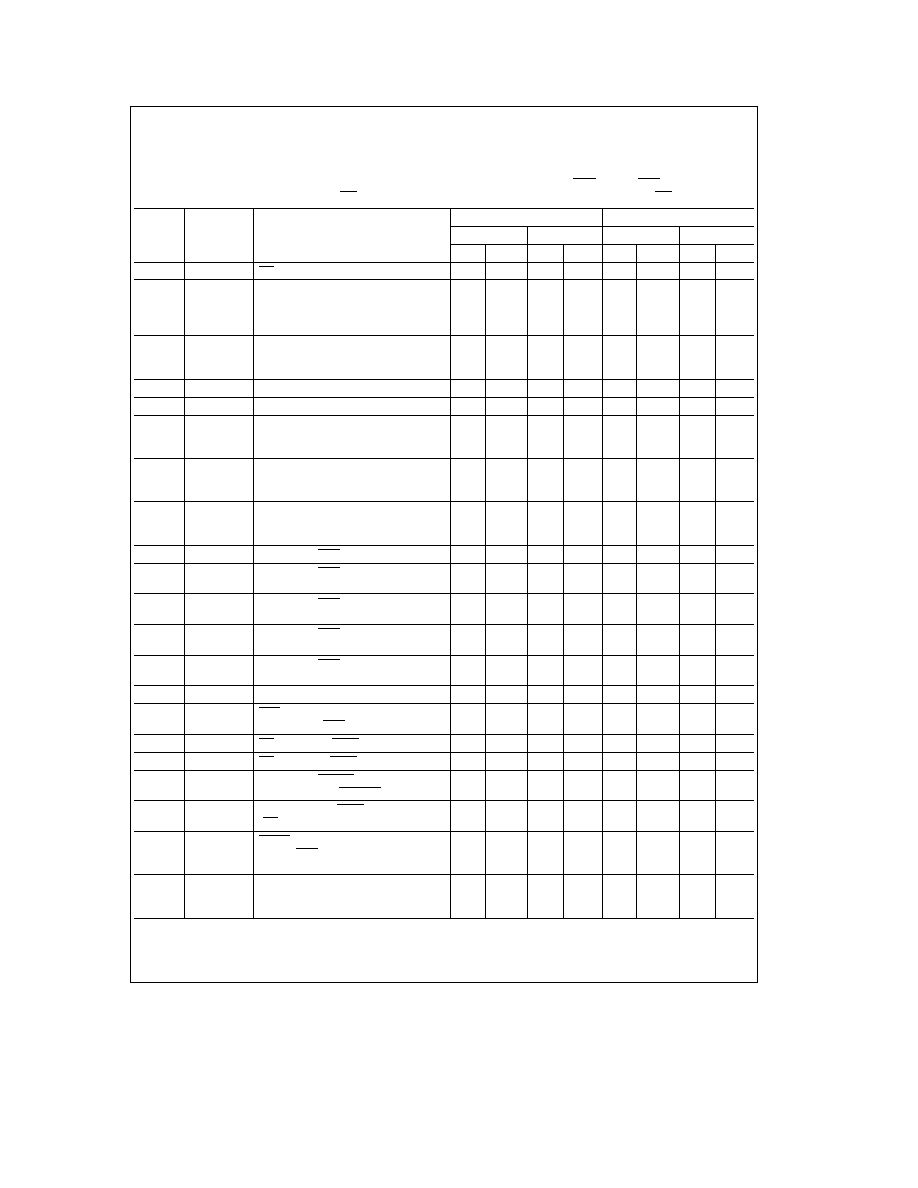
13 0 AC Timing Parameters
(Continued)
Unless otherwise stated V
CC
e
5 0V
g
10% 0 C
k
T
A
k
70 C the output load capacitance is typical for 4 banks of 18 DRAMs
per bank including trace capacitance (Note 2)
Two different loads are specified
C
L
e
50 pF loads on all outputs except
C
L
e
150 pF loads on Q0 � 8 9 10 and WE or
C
H
e
50 pF loads on all outputs except
C
H
e
125 pF loads on RAS0 � 3 and CAS0 � 3 and
C
H
e
380 pF loads on Q0 � 8 9 10 and WE
Mode 0 Access
8420A 21A 22A-20
8420A 21A 22A-25
Number
Symbol
Parameter Description
C
L
C
H
C
L
C
H
Min
Max
Min
Max
Min
Max
Min
Max
300
tSCSCK
CS Asserted to CLK High
14
14
13
13
301a
tSALECKNL
ALE Asserted Setup to CLK High
Not Using On-Chip Latches or
16
16
15
15
if Using On-Chip Latches and
B0 B1 Are Constant Only 1 Bank
301b
tSALECKL
ALE Asserted Setup to CLK High
if Using On-Chip Latches if B0 B1
29
29
29
29
Can Change More Than One Bank
302
tWALE
ALE Pulse Width
18
18
13
13
303
tSBADDCK
Bank Address Valid Setup to CLK High
20
20
18
18
304
tSADDCK
Row Column Valid Setup to
CLK High to Guarantee
11
15
11
16
tASR
e
0 ns
305
tHASRCB
Row Column Bank Address
Held from ALE Negated
10
10
8
8
(Using On-Chip Latches)
306
tSRCBAS
Row Column Bank Address
Setup to ALE Negated
3
3
2
2
(Using On-Chip Latches)
307
tPCKRL
CLK High to RAS Asserted
27
32
22
26
308a
tPCKCL0
CLK High to CAS Asserted
81
89
72
79
(t
RAH
e
15 ns t
ASC
e
0 ns)
308b
tPCKCL1
CLK High to CAS Asserted
91
99
82
89
(t
RAH
e
15 ns t
ASC
e
10 ns)
308c
tPCKCL2
CLK High to CAS Asserted
91
99
82
89
(t
RAH
e
25 ns t
ASC
e
0 ns)
308d
tPCKCL3
CLK High to CAS Asserted
101
109
92
99
(t
RAH
e
25 ns t
ASC
e
10 ns)
309
tHCKALE
ALE Negated Hold from CLK High
0
0
0
0
310
tSWINCK
WIN Asserted Setup to CLK High
b
21
b
21
b
16
b
16
to Guarantee CAS is Delayed
311
tPCSWL
CS Asserted to WAIT Asserted
26
26
22
22
312
tPCSWH
CS Negated to WAIT Negated
30
30
25
25
313
tPCLKDL1
CLK High to DTACK Asserted
40
40
32
32
(Programmed as DTACK0)
314
tPALEWL
ALE Asserted to WAIT Asserted
35
35
29
29
(CS is Already Asserted)
315
AREQ Negated to CLK High That Starts
Access RAS to Guarantee tASR
e
0 ns
41
45
34
39
(Non-Interleaved Mode Only)
316
tPCKCV0
CLK High to Column
Address Valid
78
87
66
75
(t
RAH
e
15 ns t
ASC
e
0 ns)
49
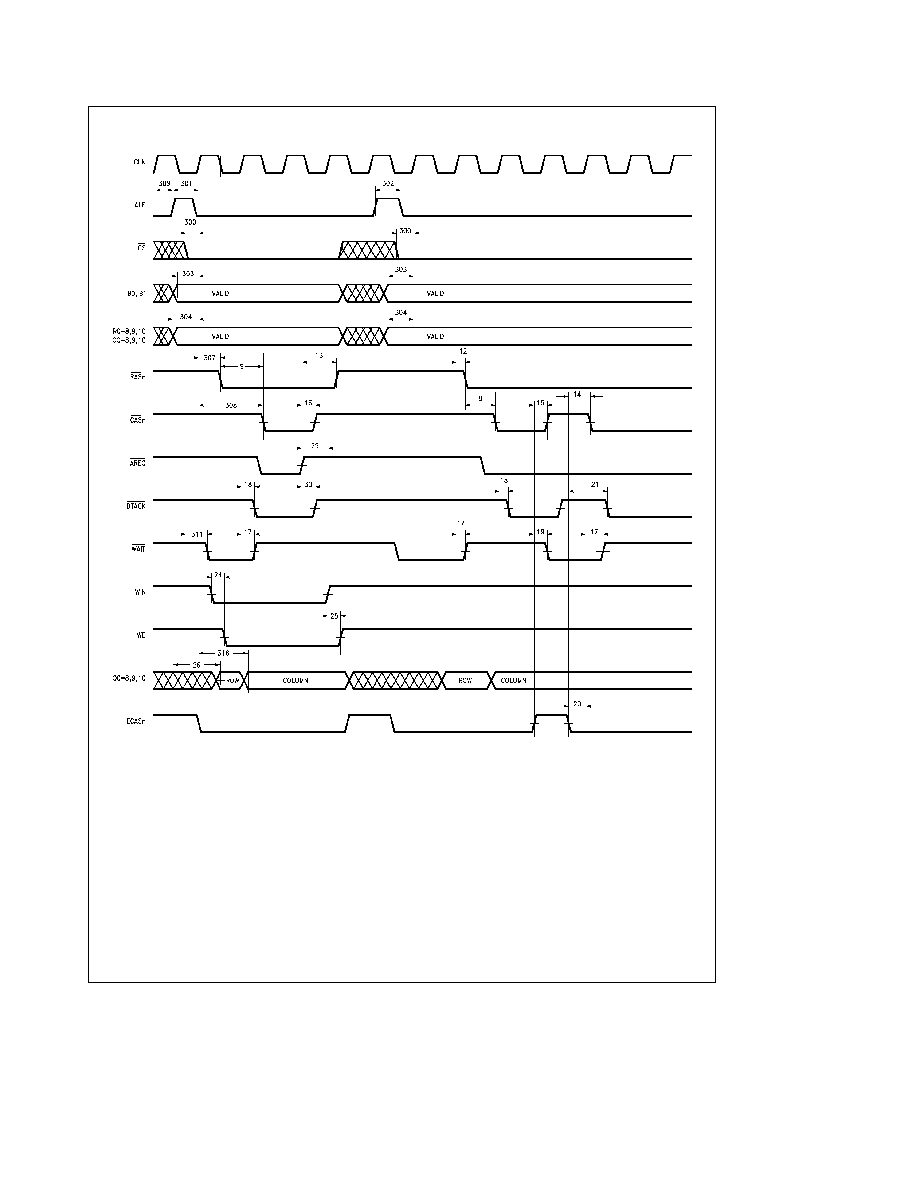
13 0 AC Timing Parameters
(Continued)
TL F 8588 � F3
FIGURE 40 300 Mode 0 Timing
50
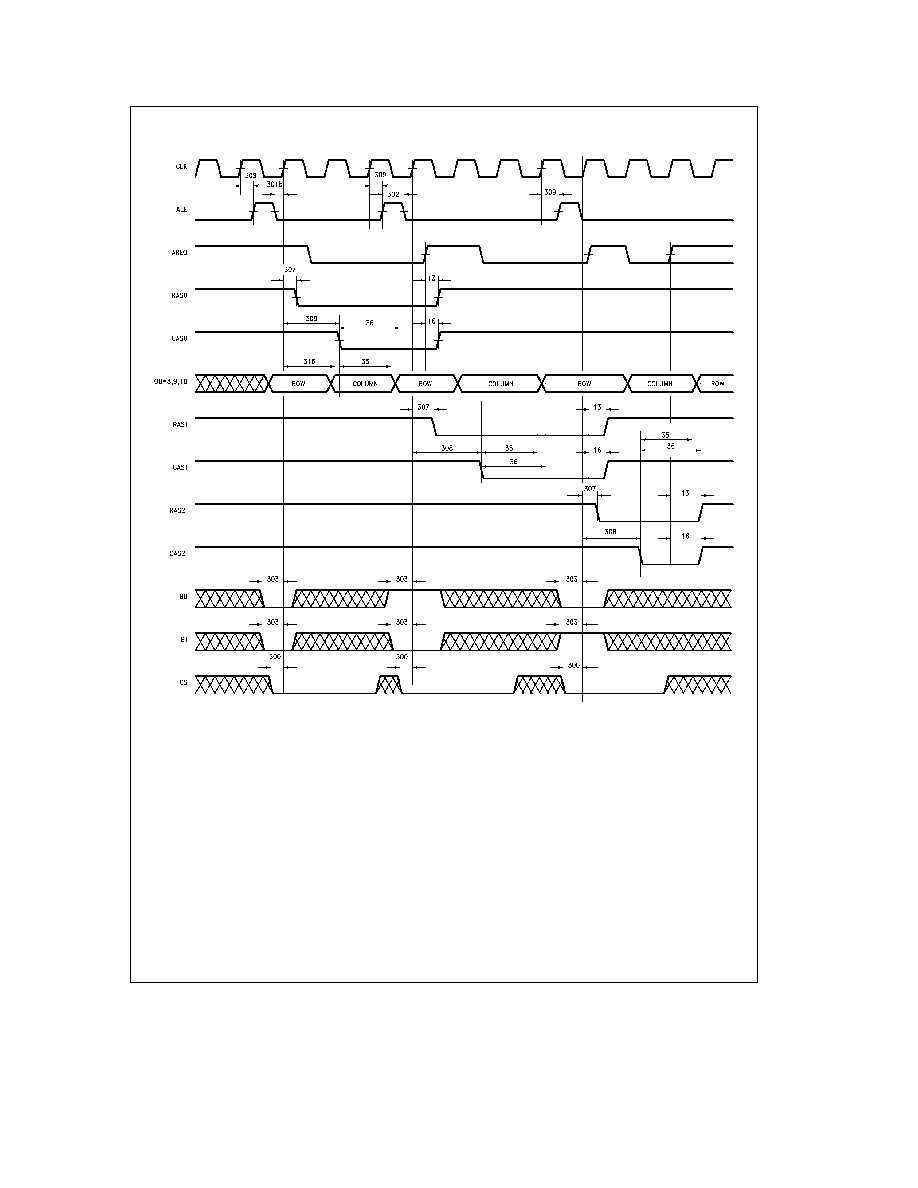
13 0 AC Timing Parameters
(Continued)
TL F 8588 � F4
(Programmed as C4
e
1 C5
e
1 C6
e
1)
FIGURE 41 300 Mode 0 Interleaving
51
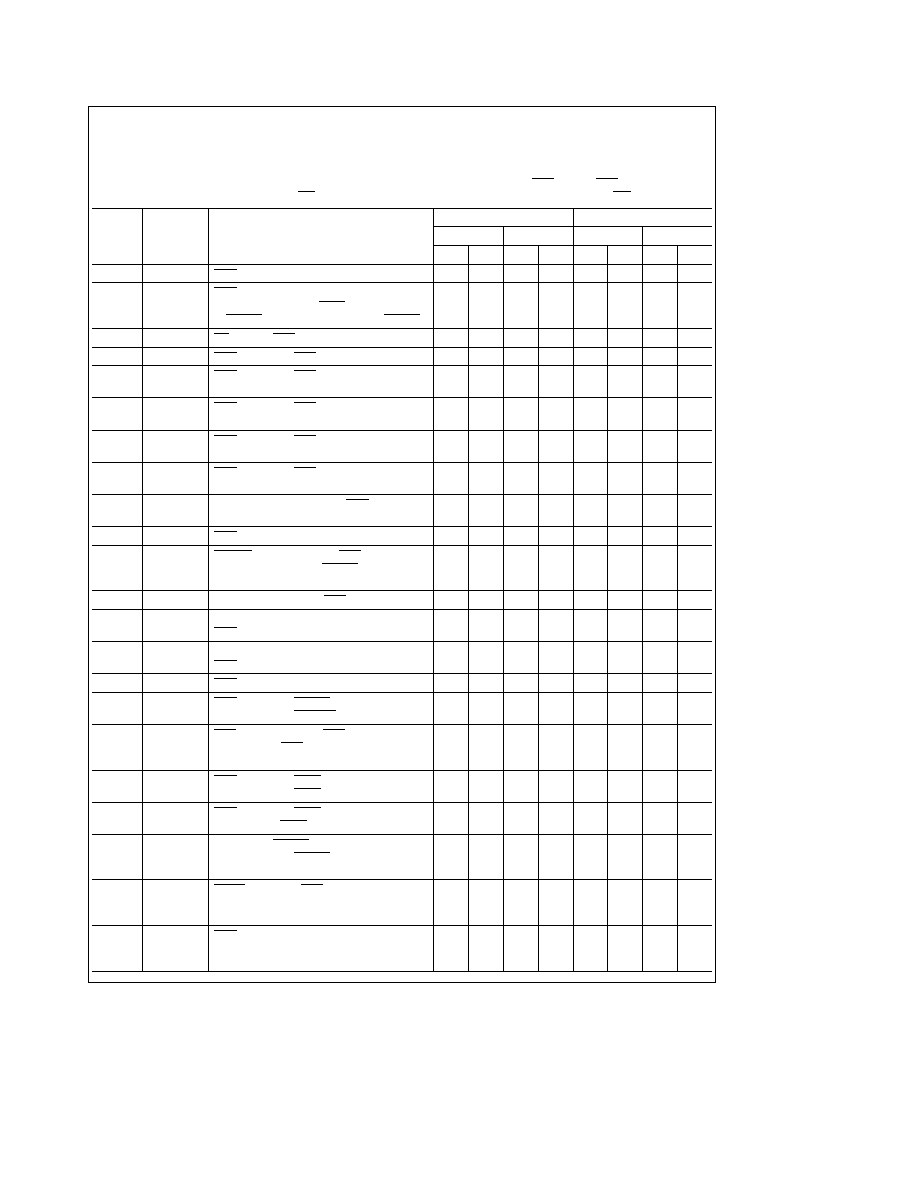
13 0 AC Timing Parameters
(Continued)
Unless otherwise stated V
CC
e
5 0V
g
10% 0 C
k
T
A
k
70 C the output load capacitance is typical for 4 banks of 18 DRAMs
per bank including trace capacitance (Note 2)
Two different loads are specified
C
L
e
50 pF loads on all outputs except
C
L
e
150 pF loads on Q0 � 8 9 10 and WE or
C
H
e
50 pF loads on all outputs except
C
H
e
125 pF loads on RAS0 � 3 and CAS0 � 3 and
C
H
e
380 pF loads on Q0 � 8 9 10 and WE
Mode 1 Access
8420A 21A 22A-20
8420A 21A 22A-25
Number
Symbol
Parameter Description
C
L
C
H
C
L
C
H
Min
Max
Min
Max
Min
Max
Min
Max
400a
tSADSCK1
ADS Asserted Setup to CLK High
15
15
13
13
400b
tSADSCKW
ADS Asserted Setup to CLK
(to Guarantee Correct WAIT
31
31
25
25
or DTACK Output Doesn't Apply for DTACK0)
401
tSCSADS
CS Setup to ADS Asserted
6
6
5
5
402
tPADSRL
ADS Asserted to RAS Asserted
30
35
25
29
403a
tPADSCL0
ADS Asserted to CAS Asserted
86
94
75
82
(tRAH
e
15 ns tASC
e
0 ns)
403b
tPADSCL1
ADS Asserted to CAS Asserted
96
104
85
92
(tRAH
e
15 ns tASC
e
10 ns)
403c
tPADSCL2
ADS Asserted to CAS Asserted
96
104
85
92
(tRAH
e
25 ns tASC
e
0 ns)
403d
tPADSCL3
ADS Asserted to CAS Asserted
106
114
95
102
(tRAH
e
25 ns tASC
e
10 ns)
404
tSADDADS
Row Address Valid Setup to ADS
9
13
9
14
Asserted to Guarantee tASR
e
0 ns
405
tHCKADS
ADS Negated Held from CLK High
0
0
0
0
406
tSWADS
WAITIN Asserted Setup to ADS
Asserted to Guarantee DTACK0
0
0
0
0
Is Delayed
407
tSBADAS
Bank Address Setup to ADS Asserted
11
11
11
11
408
tHASRCB
Row Column Bank Address Held from
10
10
10
10
ADS Asserted (Using On-Chip Latches)
409
tSRCBAS
Row Column Bank Address Setup to
3
3
2
2
ADS Asserted (Using On-Chip Latches)
410
tWADSH
ADS Negated Pulse Width
12
16
12
17
411
tPADSD
ADS Asserted to DTACK Asserted
43
43
35
35
(Programmed as DTACK0)
412
tSWINADS
WIN Asserted Setup to ADS Asserted
(to Guarantee CAS Delayed during
b
10
b
10
b
10
b
10
Writes Accesses)
413
tPADSWL0
ADS Asserted to WAIT Asserted
35
35
29
29
(Programmed as WAIT0 Delayed Access)
414
tPADSWL1
ADS Asserted to WAIT Asserted
35
35
29
29
(Programmed WAIT 1 2 or 1)
415
tPCLKDL1
CLK High to DTACK Asserted
(Programmed as DTACK0
40
40
32
32
Delayed Access)
416
AREQ Negated to ADS Asserted
to Guarantee tASR
e
0 ns
38
42
31
36
(Non Interleaved Mode Only)
417
tPADSCV0
ADS Asserted to Column
Address Valid
83
92
69
78
(t
RAH
e
15 ns t
ASC
e
0 ns)
52

13 0 AC Timing Parameters
(Continued)
TL F 8588 � F5
FIGURE 42 400 Mode 1 Timing
53

13 0 AC Timing Parameters
(Continued)
TL F 8588 � F6
FIGURE 43 400 COLINC Page Static Column Access Timing
54

13 0 AC Timing Parameters
(Continued)
Unless otherwise stated V
CC
e
5 0V
g
10% 0 C
k
T
A
k
70 C the output load capacitance is typical for 4 banks of 18 DRAMs
per bank including trace capacitance (Note 2)
Two different loads are specified
C
L
e
50 pF loads on all outputs except
C
L
e
150 pF loads on Q0 � 8 9 10 and WE or
C
H
e
50 pF loads on all outputs except
C
H
e
125 pF loads on RAS0 � 3 and CAS0 � 3 and
C
H
e
380 pF loads on Q0 � 8 9 10 and WE
Mode 1 Dual Access
8420A 21A 22A-20
8420A 21A 22A-25
Number
Symbol
Parameter Description
C
L
C
H
C
L
C
H
Min
Max
Min
Max
Min
Max
Min
Max
450
tSADDCKG
Row Address Setup to CLK High That
Asserts RAS following a GRANTB
11
15
11
16
Port Change to Ensure tASR
e
0 ns
451
tPCKRASG
CLK High to RAS Asserted
48
53
38
42
for Pending Access
452
tPCLKDL2
CLK to DTACK Asserted for Delayed
53
53
43
43
Accesses (Programmed as DTACK0)
453a
tPCKCASG0
CLK High to CAS Asserted
for Pending Access
101
109
86
93
(t
RAH
e
15 ns t
ASC
e
0 ns)
453b
tPCKCASG1
CLK High to CAS Asserted
for Pending Access
111
119
96
103
(t
RAH
e
15 ns t
ASC
e
10 ns)
453c
tPCKCASG2
CLK High to CAS Asserted
for Pending Access
111
119
96
103
(t
RAH
e
25 ns t
ASC
e
0 ns)
453d
tPCKCASG3
CLK High to CAS Asserted
for Pending Access
121
129
106
113
(t
RAH
e
25 ns t
ASC
e
10 ns)
454
tSBADDCKG
Bank Address Valid Setup to CLK High
5
5
4
4
that Asserts RAS for Pending Access
455
tSADSCK0
ADS Asserted Setup to CLK High
12
12
11
11
55

13 0 AC Timing Parameters
(Continued)
Unless otherwise stated V
CC
e
5 0V
g
10% 0 C
k
T
A
k
70 C the output load capacitance is typical for 4 banks of 18
DRAMs per bank including trace capacitance (Note 2)
Two different loads are specified
C
L
e
50 pF loads on all outputs except
C
L
e
150 pF loads on Q0 � 8 9 10 and WE or
C
H
e
50 pF loads on all outputs except
C
H
e
125 pF loads on RAS0 � 3 and CAS0 � 3 and
C
H
e
380 pF loads on Q0 � 8 9 10 and WE
Programming
8420A 21A 22A-20
8420A 21A 22A-25
Number
Symbol
Parameter Description
C
L
C
H
C
L
C
H
Min
Max
Min
Max
Min
Max
Min
Max
500
tHMLADD
Mode Address Held from ML Negated
8
8
7
7
501
tSADDML
Mode Address Setup to ML Negated
6
6
6
6
502
tWML
ML Pulse Width
15
15
15
15
503
tSADAQML
Mode Address Setup to AREQ Asserted
0
0
0
0
504
tHADAQML
Mode Address Held from AREQ Asserted
51
51
38
38
505
tSCSARQ
CS Asserted Setup to
6
6
6
6
AREQ Asserted
506
tSMLARQ
ML Asserted Setup to AREQ Asserted
10
10
10
10
TL F 8588 � F7
FIGURE 44 500 Programming
56
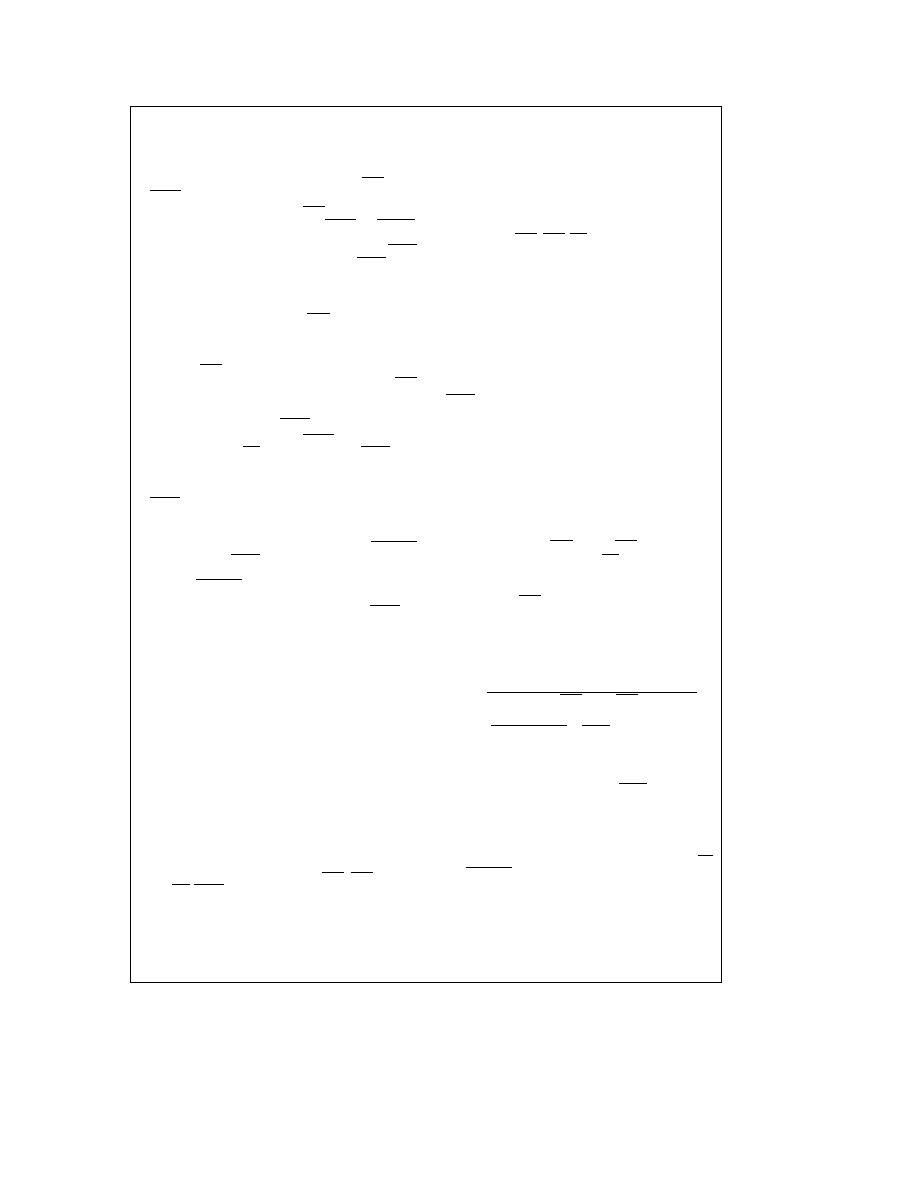
14 0 Functional Differences
between the DP8420A 21A 22A
and the DP8420 21 22
1 Extending the Column Address Strobe (CAS) after
AREQ Transitions High
The DP8420A 21A 22A allows CAS to be asserted for
an indefinite period of time beyond AREQ (or AREQB
DP8422A only Scrubbing refreshes are not affected ) be-
ing negated by continuing to assert the appropriate ECAS
inputs This feature is allowed as long as the ECAS0 input
was negated during programming The DP8420 21 22
does not allow this feature
2 Dual Accessing
The DP8420A 21A 22A asserts RAS either one or two
clock periods after GRANTB has been asserted or negat-
ed depending upon how the R0 bit was programmed dur-
ing the mode load operation The DP8420 21 22 will al-
ways start RAS one clock period after GRANTB is assert-
ed or negated The above statements assume that RAS
precharge has been completed by the time GRANTB is
asserted or negated
3 Refresh Request Output (RFRQ)
The DP8420A 21A 22A allows RFRQ (refresh request)
to be output on the WE output pin given that ECAS0 was
negated during programming or the controller was pro-
grammed to function in the address pipelining (memory
interleaving) mode
The DP8420 21 22 only allows
RFRQ to be output during the address pipelining mode
4 Clearing the Refresh Request Clock Counter
The DP8420A 21A 22A allows the internal refresh re-
quest clock counter to be cleared by negating DISRFSH
and
asserting
RFSH
for
at
least
500
ns
The
DP8420 21 22 clears the internal refresh request clock
counter if DISRFSH remains low for at least 500 ns Once
the internal refresh request clock counter is cleared the
user is guaranteed that an internally generated RFRQ will
not be generated for at least 13 ms � 15 ms (depending
upon how programming bits C0
1
2
3 were pro-
grammed)
15 0 DP8420A 21A 22A User Hints
1 All inputs to the DP8420A 21A 22A should be tied high
low or the output of some other device
Note One signal is active high COLINC (EXTNDRF) should be tied low
to disable
2 Each ground on the DP8420A 21A 22A must be decou-
pled to the closest on-chip supply (V
CC
) with 0 1 mF ce-
ramic capacitor
This is necessary because these
grounds
are
kept
separate
inside
the
DP8420A 21A 22A The decoupling capacitors should
be placed as close as possible with short leads to the
ground and supply pins of the DP8420A 21A 22A
3 The output called ``CAP'' should have a 0 1 mF capacitor
to ground
4 The DP8420A 21A 22A has 20X series damping resis-
tors built into the output drivers of RAS CAS address
and WE RFRQ Space should be provided for external
damping resistors on the printed circuit board (or wire-
wrap board) because they may be needed The value of
these damping resistors (if needed) will vary depending
upon the output the capacitance of the load and the
characteristics of the trace as well as the routing of the
trace The value of the damping resistor also may vary
between the wire-wrap board and the printed circuit
board To determine the value of the series damping re-
sistor it is recommended to use an oscilloscope and look
at the furthest DRAM from the DP8420A 21A 22A The
undershoot of RAS CAS WE and the addresses should
be kept to less than 0 5V below ground by varying the
value of the damping resistor The damping resistors
should be placed as close as possible with short leads to
the driver outputs of the DP8420A 21A 22A
5 The circuit board must have a good V
CC
and ground
plane connection If the board is wire-wrapped the V
CC
and ground pins of the DP8420A 21A 22A the DRAM
associated logic and buffer circuitry must be soldered to
the V
CC
and ground planes
6 The traces from the DP8420A 21A 22A to the DRAM
should be as short as possible
7 ECAS0 should be held low during programming if the user
wishes that the DP8420A 21A 22A be compatible with a
DP8420 21 22 design
8 Parameter Changes due to Loading
All A C parameters are specified with the equivalent load
capacitances including traces of 64 DRAMs organized
as 4 banks of 18 DRAMs each Maximums are based on
worst-case conditions If an output load changes then the
A C timing parameters associated with that particular
output must be changed For example if we changed our
output load to
C
e
250 pF loads on RAS0 � 3 and CAS0 � 3
C
e
760 pF loads on Q0 � 9 and WE
we would have to modify some parameters (not all calcu-
lated here)
$308a clock to CAS asserted
(t
RAH
e
15 ns t
ASC
e
0 ns)
A ratio can be used to figure out the timing change per
change in capacitance for a particular parameter by using
the specifications and capacitances from heavy and light
load timing
Ratio
e
$308a w Heavy Load
b
$308a w Light Load
C
H
(CAS)
b
C
L
(CAS)
e
79 ns
b
72 ns
125 pF
b
50 pF
e
7 ns
75 pF
$308a (actual)
e
(capacitance difference
c
ratio)
a
$308a (specified)
e
(250 pF
b
125 pF)
7 ns
75 pF
a
79 ns
e
11 7 ns
a
79 ns
e
90 7 ns
250 pF load
9 It is required that the user perform a hardware reset of
the DP8420A 21A 22A before programming and using
the chip A hardware reset consists of asserting both ML
and DISRFSH for a minimum of 16 positive edges of CLK
see Section 3 1
57
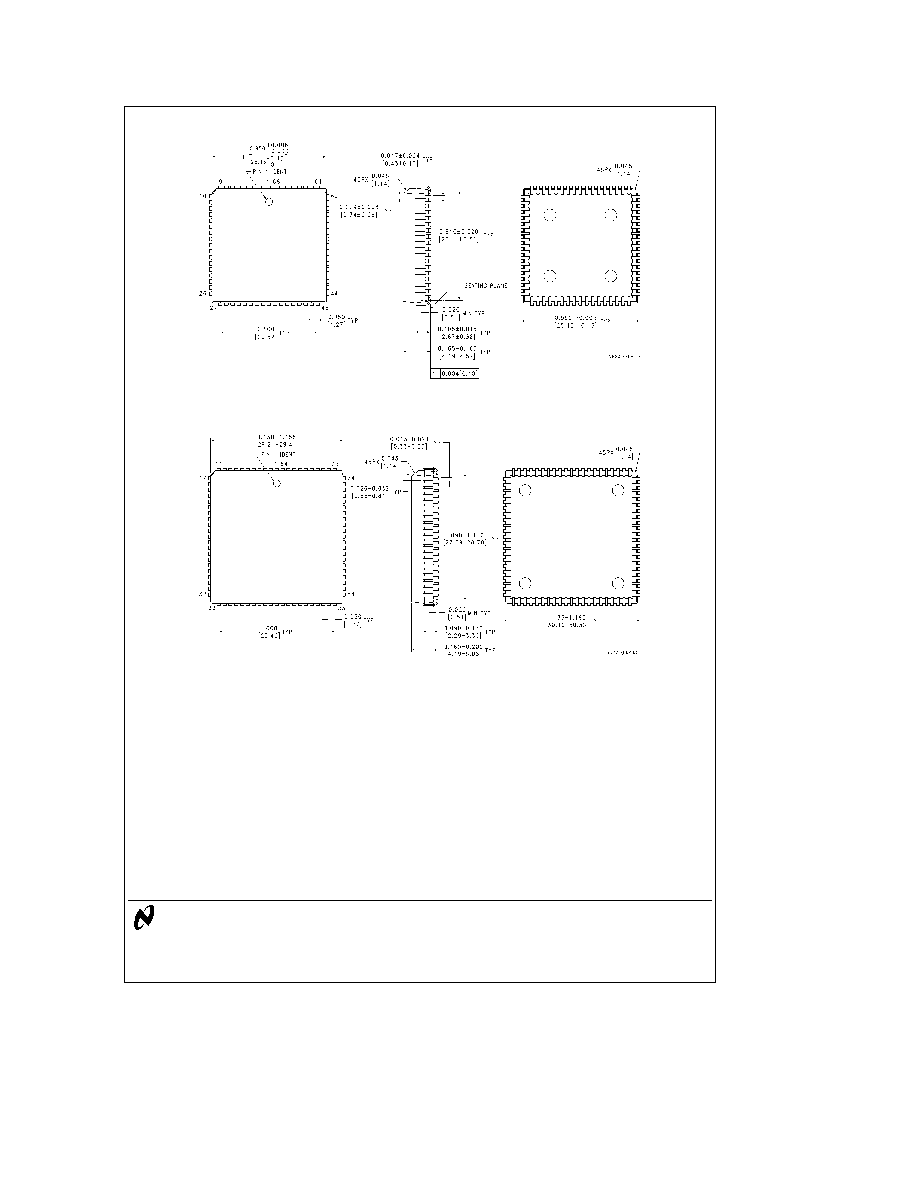
DP8420A21A22A
microCMOS
Programmable
256k1M4M
Dynamic
RAM
ControllerDrivers
Physical Dimensions
inches (millimeters)
Lit
103064
Plastic Chip Carrier (V)
Order Number DP8420AV-20 DP8420AV-25 DP8421AV-20 or DP8421AV-25
NS Package Number V68A
Plastic Chip Carrier (V)
Order Number DP8422AV-20 or DP8422AV-25
NS Package Number V84A
LIFE SUPPORT POLICY
NATIONAL'S PRODUCTS ARE NOT AUTHORIZED FOR USE AS CRITICAL COMPONENTS IN LIFE SUPPORT
DEVICES OR SYSTEMS WITHOUT THE EXPRESS WRITTEN APPROVAL OF THE PRESIDENT OF NATIONAL
SEMICONDUCTOR CORPORATION As used herein
1 Life support devices or systems are devices or
2 A critical component is any component of a life
systems which (a) are intended for surgical implant
support device or system whose failure to perform can
into the body or (b) support or sustain life and whose
be reasonably expected to cause the failure of the life
failure to perform when properly used in accordance
support device or system or to affect its safety or
with instructions for use provided in the labeling can
effectiveness
be reasonably expected to result in a significant injury
to the user
National Semiconductor
National Semiconductor
National Semiconductor
National Semiconductor
Corporation
Europe
Hong Kong Ltd
Japan Ltd
1111 West Bardin Road
Fax (a49) 0-180-530 85 86
13th Floor Straight Block
Tel 81-043-299-2309
Arlington TX 76017
Email cnjwge tevm2 nsc com
Ocean Centre 5 Canton Rd
Fax 81-043-299-2408
Tel 1(800) 272-9959
Deutsch Tel (a49) 0-180-530 85 85
Tsimshatsui Kowloon
Fax 1(800) 737-7018
English
Tel (a49) 0-180-532 78 32
Hong Kong
Fran ais Tel (a49) 0-180-532 93 58
Tel (852) 2737-1600
Italiano
Tel (a49) 0-180-534 16 80
Fax (852) 2736-9960
National does not assume any responsibility for use of any circuitry described no circuit patent licenses are implied and National reserves the right at any time without notice to change said circuitry and specifications

























































